Airport profile: Curaçao

Event review: WAGA
Plus: Customer service; Diversity & Inclusion;

Airport profile: Curaçao

Event review: WAGA
Plus: Customer service; Diversity & Inclusion;

Volume 28 – Issue 4, 2023


Airports around the world are planning for future growth and investing in creating a more resilient, safer, and friendlier experience for passengers. By using geographic information system (GIS) technology, they can create a powerful foundation to not only help plan more strategic investments but also build a digital infrastructure to help manage assets well into the future. Esri’s GIS technology allows you to
n Design and plan resilient and sustainable infrastructure.
n Collaborate across your design and construction teams for greater efficiencies.
n Build a spatial information infrastructure for greater operational performance.
n Leverage data and information to adapt to changing future conditions.
Learn more about Esri, the key technology partner in building smarter airports for the future.
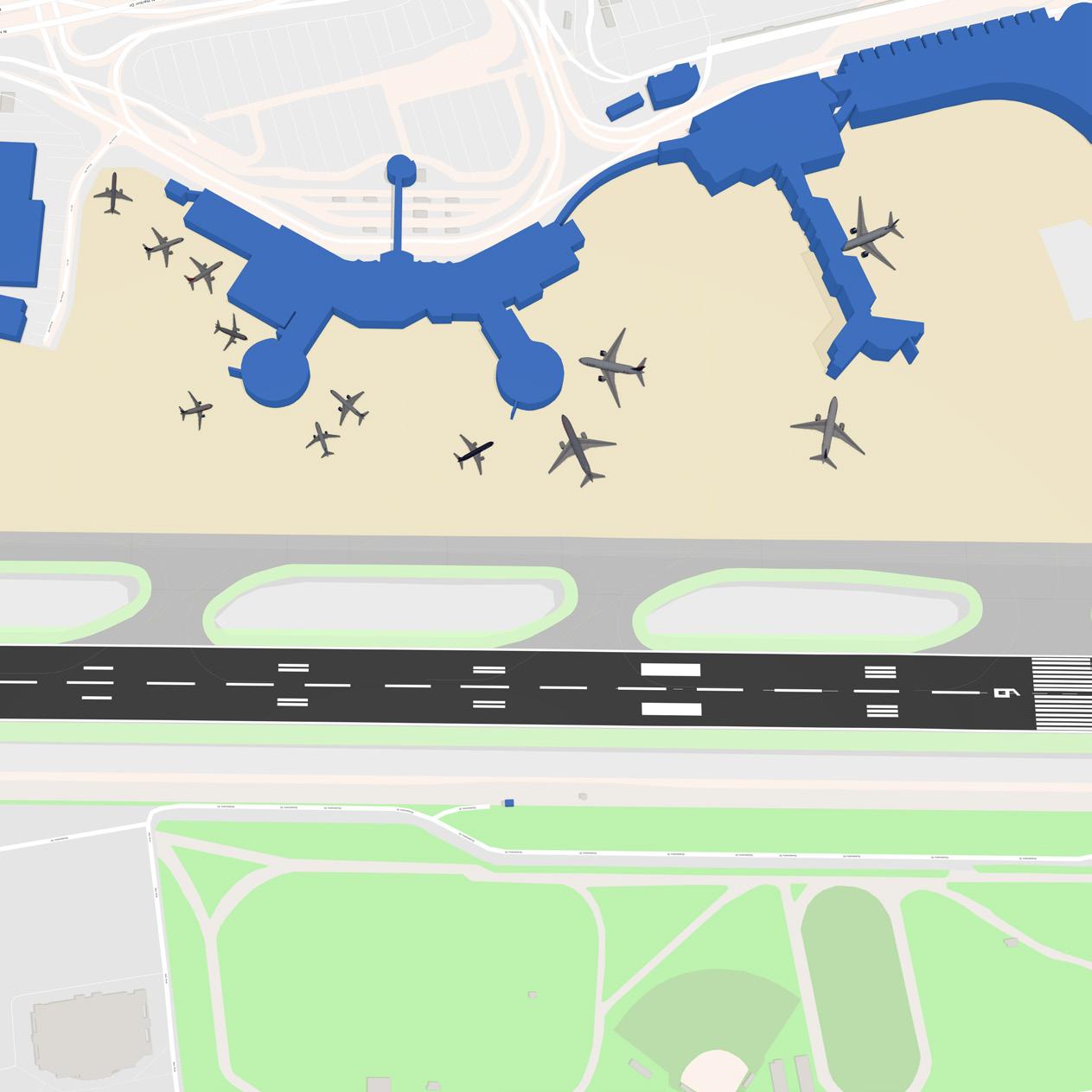
Visit go.esri.com/esri-delivers-smart-airports or scan the QR Code.
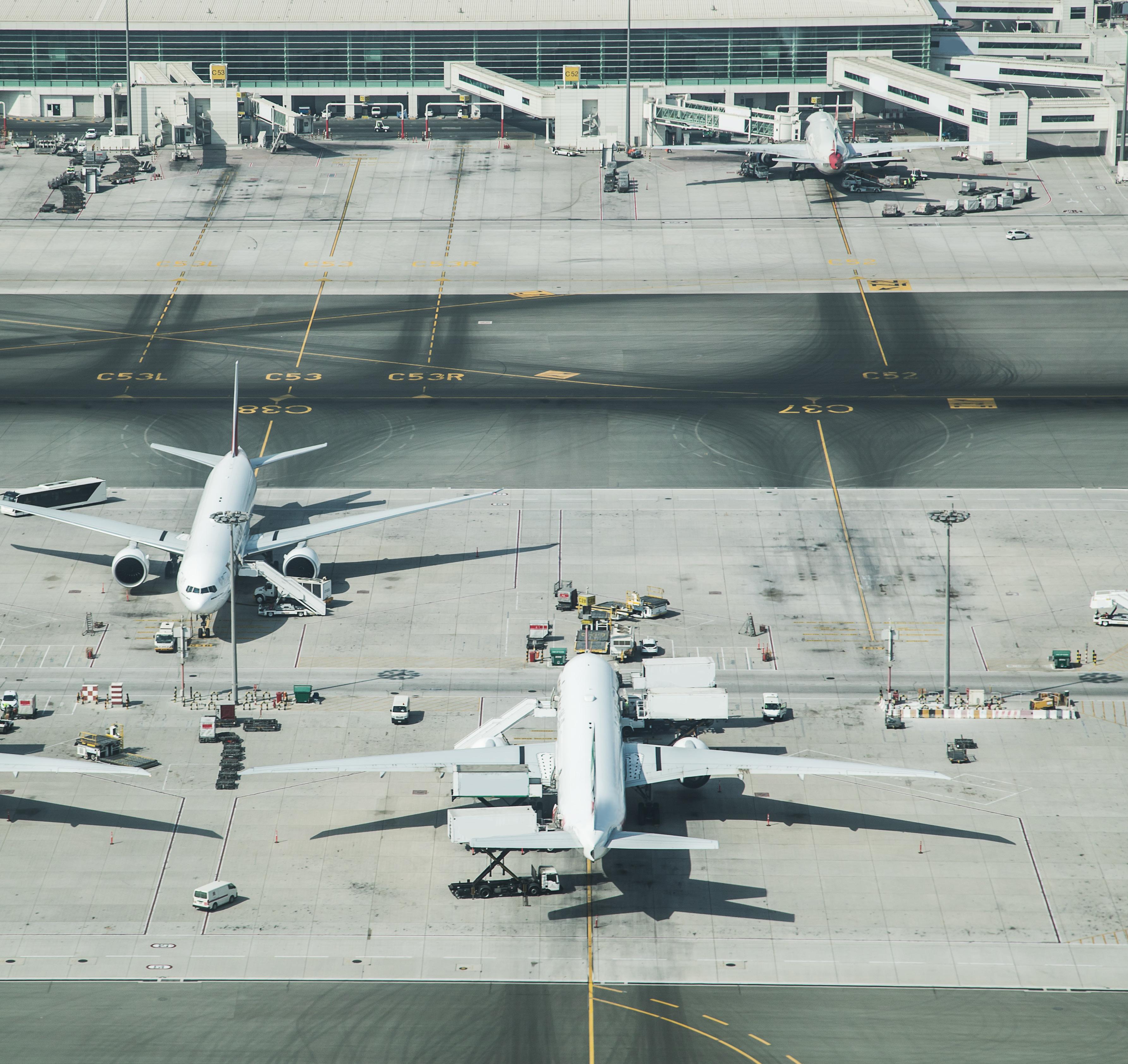
Editor
Joe Bates +44 (0)1276 476582 joe@airport-world.com
Sales Directors
Jonathan Lee +44 (0)208 707 2743 jonathan@airport-world.com
Jon Sissons +44 (0)208 707 2743 jon.sissons@airport-world.com
Advertising Manager
Andrew Hazell +44 (0)208 384 0206 andrewh@airport-world.com
Design, Layout & Production
Mark Draper +44 (0)208 707 2743 mark@airport-world.com
Subscriptions subscriptions@aviationmedia.aero
Managing Director
Jonathan Lee +44 (0)208 707 2743 jonathan@aviationmedia.aero
Idefinitely should have known better, but on my way to Barcelona recently for the ACI EUROPE/ACI WORLD Annual General Assembly, Conference and Exhibition, I forgot about the handkerchief in my trouser pocket when going through the body scanner at the airport, and subsequently was subjected to a full pat down search.
Thankfully, this was the only low-point in my journey as my airport experience otherwise was excellent.
Arguably, innovations such as bigger, wider and more open security lanes and better trained staff make the passenger screening process more passenger friendly than ever today.
of Arnie’s skeleton projected onto a big screen as he walked through security.
I mention this because you can read about the exciting announcement of an almost identical technology being specifically developed for airports in the ‘security’ themed section of this issue of Airport World
ACI World’s senior director for security, technology and innovation, Billy Shallow, addresses some of the key issues facing airport security in his introduction to the themed section.
Published by Aviation Media Ltd PO BOX 448, Feltham, TW13 9EA, UK
Website www.airport-world.com
AirportWorld is published six times a year for the members of ACI World. The opinions and views expressed in AirportWorld are those of the authors and do not necessarily reflect an ACI World policy or position.
ISSN: 1360-4341
The content of this publication is copyright of Aviation Media Ltd and should not be copied or stored without the express permission of the publisher.
Technology also continues to advance at a pace. Indeed, technology exists today that allows liquids and electronics to be left in hand luggage at security checkpoints, but laptops invariably have to be removed from bags and also the case they are in before being sent through X-ray machines in separate trays.
Thankfully, the necessity to remove laptops will change with the widespread implementation of the next generation of Computed Tomography (CT) X-ray scanners, which are capable of much more accurate scans due to the high-resolution volumetric 3D images they produce.
For me, this will be a huge step forward in terms of enjoying the airport experience, although the old grouch in me means that I won’t be entirely satisfied with the airport screening process until we see the introduction of walk-through scanners, the likes of which we first saw in the 1990 Arnold Schwarzenegger sci-fi movie, Total Recall.
Those of you with very long memories will remember that it was set on Mars and new arrivals simply walked through an X-ray tunnel/area which allowed security staff to scan them without anyone needing to stop or even slow down. What made the scene so memorable was the outline
In addition, the themed pages contain features about perimeter security; and Philadelphia International Airport’s decision to embrace biometric technology to enhance security and ensure the quick and easy facilitation of its passengers.
Elsewhere in this issue we provide a comprehensive report of the recent ACI EUROPE/ACI WORLD Annual General Assembly, Conference and Exhibition in Barcelona; and cover the highlights of the SMART Airports and Regions Conference and Exhibition in Edmonton.
Also in this issue, we learn more about some of San Antonio International Airport’s most eye-catching customer service initiatives; highlight the need to focus on inclusion and diversity in the workplace; and consider the challenges of building and operating greener airports.
We also hear from ACI World director general, Luis Felipe de Oliveira; discuss the importance of creating a work culture where employees feel valued and respected in our regular ‘people matters’ column; and report on the latest news from ACI's World Business Partners (WBP).
Last, but not least, our main airport feature is on the small, but growing airport of Curaçao International Airport, which boasts one of the newest terminals in the Caribbean and an expanding international route network.
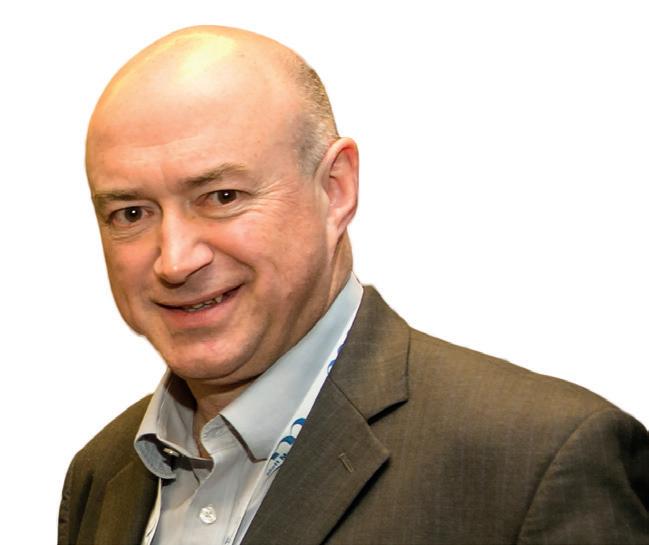
Editor, Joe Bates, reflects on the important role good security plays in the airport journey and passenger experience in this ‘security’ themed issue of Airport World.
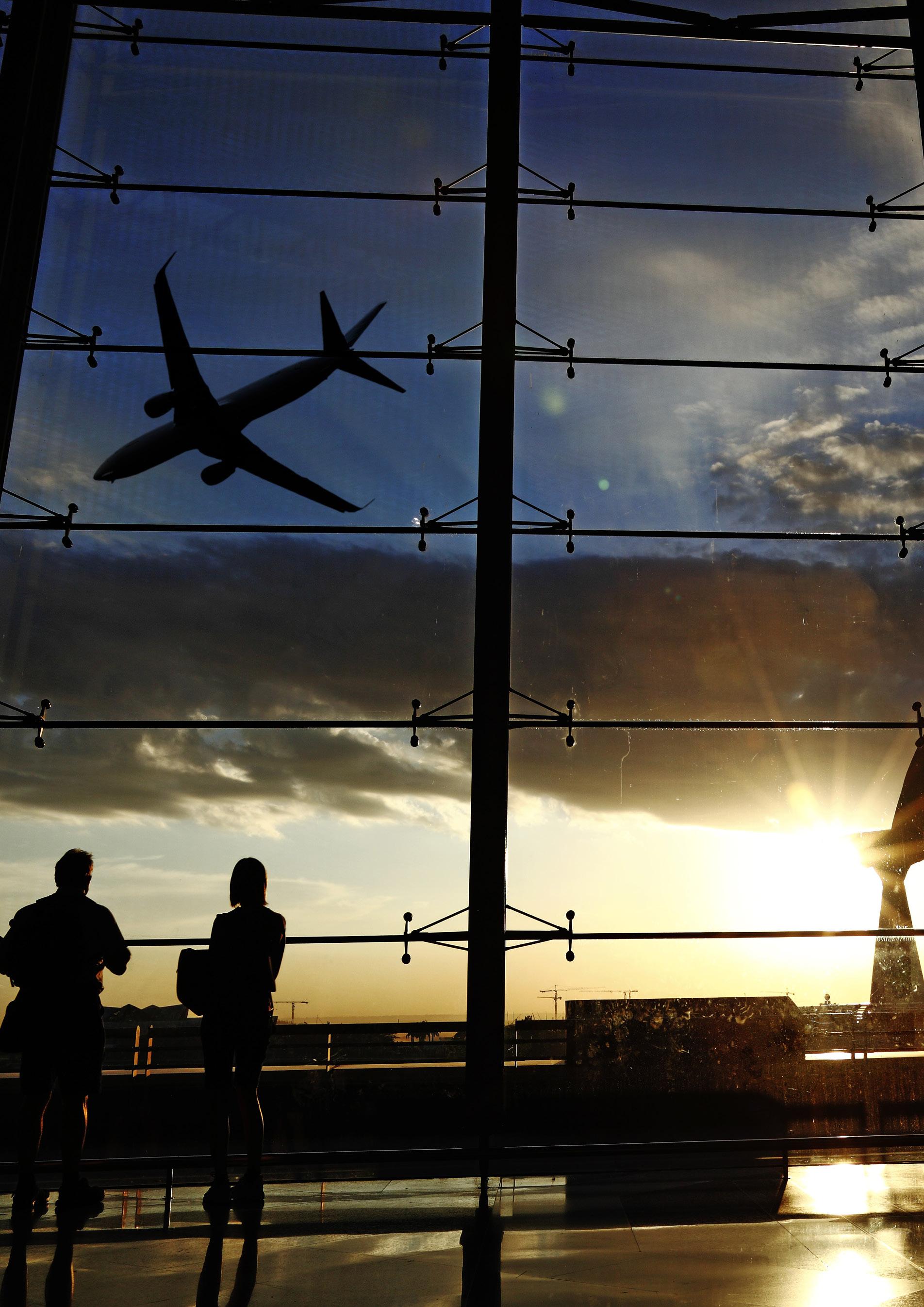

ISSUE 4 Airport profile: Curaçao Event review: WAGA Customer service; Diversity & Inclusion; IN THE SPOTLIGHT: SECURITY
28
In this issue
3 Opinion
Editor, Joe Bates, reflects on the important role good security plays in the airport journey and passenger experience in this ‘security’ themed issue of Airport World
9 View from the top
ACI World director general, Luis Felipe de Oliveira, considers some of the security challenges facing airports and the aviation industry today.
10 ACI News

We report on the latest news from ACI World, including key resolutions announced at WAGA, and ACI EUROPE.
14
CEO, Jonny Andersen, tells Joe Bates more about the growth and development of Curaçao International Airport, which boasts one of the newest terminals in the Caribbean and a growing route network.
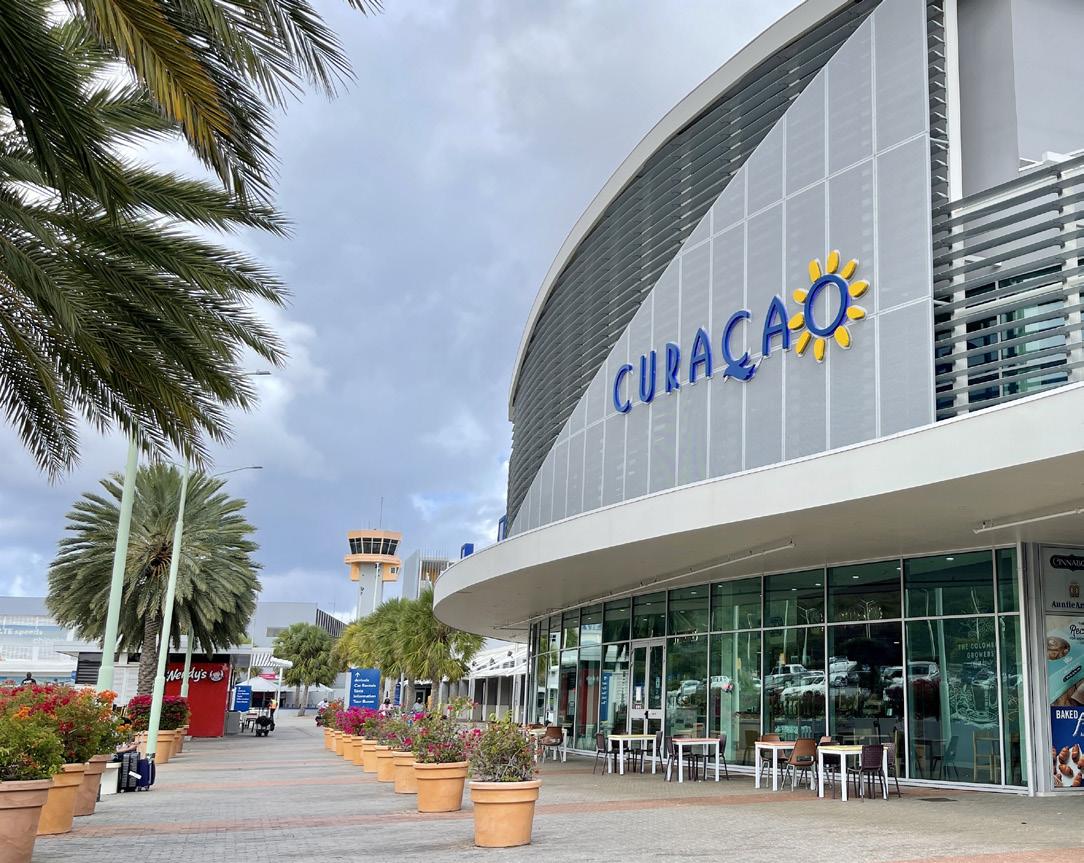
20


ACI World’s senior director for security, technology and innovation, Billy Shallow, addresses some of the key issues facing airport security in a continuously evolving landscape.
22
Airport World provides a round-up of the some of latest airport and aviation industry security news stories from across the globe.
24
Airports can redefine perimeter security by embracing unified solutions and deploying emerging technologies, writes Genetec’s Jon Hill.
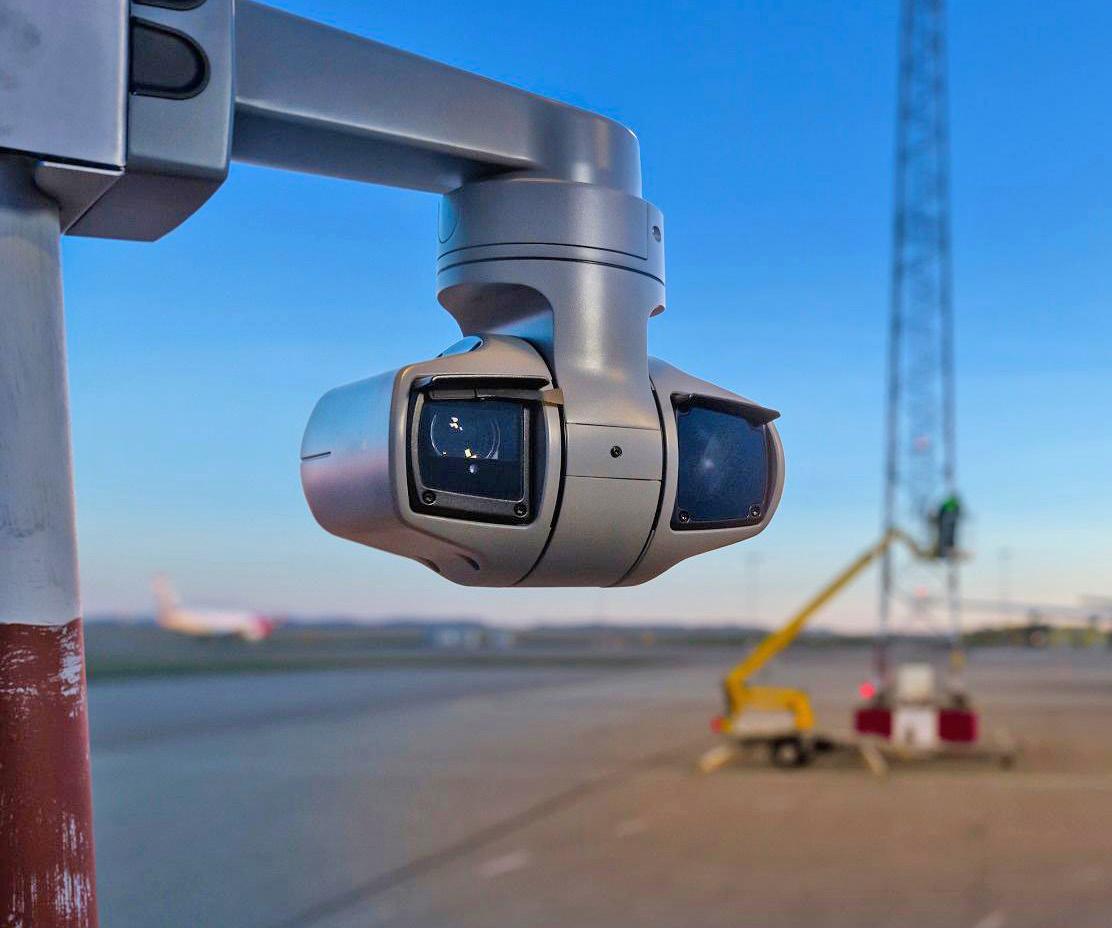

26
CONTENTS AIRPORT WORLD/ISSUE 4, 2023
Joe Bates looks back at some of the highlights from June's eventful ACI EUROPE/ACI WORLD Annual Assembly, Conference and Exhibition in Barcelona.
Erin Rodriguez tells us more about how customer service initiatives such as the chance to meet a sloth and celebrating Christmas in July bring joy to passengers at San Antonio International Airport.

We take a closer look at the growth and development of the Plaza Premium Group, which has evolved from being a lounge operator to one of the biggest airport hospitality providers over the last 25 years.
Nearly 400 delegates and 37 exhibitors made the smart choice by attending the recent SMART Airports & Regions Conference and Exhibition in Edmonton, writes Joe Bates.
Sam Folley and Nicola Ihnatowicz explore the wider social and stakeholder push for better diversity and inclusion for employers in the airports sector.

Trideep Barau, ABB’s global segment manager for infrastructure, considers the challenge of building and operating greener airports.
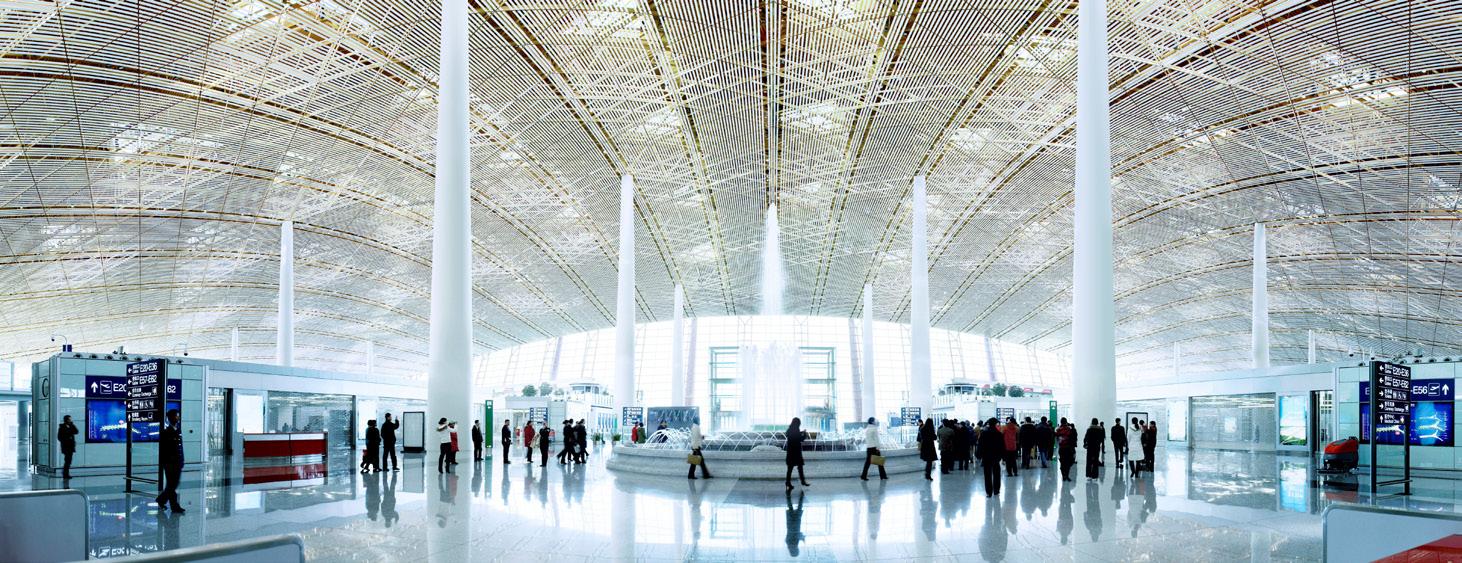
Announcements, news stories and opinions from ACI World Business Partners across the globe.
Terri Morrissey and Dr Richard Plenty consider the importance of creating a work culture where employees feel safe and confident that their opinions will be valued and respected.
Director General
Luis Felipe de Oliveira (Montreal, Canada)
Chair
Aimen Al Hosni (Muscat, Oman)
Vice Chair
Candace McGraw (Cincinnati, USA)
Immediate Past Chair
Martin Eurnekián (Buenos Aires, Argentina)
Treasurer
Arnaud Feist (Brussels, Belgium)
ACI WORLD GOVERNING BOARD
DIRECTORS
Africa (3)
Emanuel Chaves (Maputo, Mozambique)
Fabrice Grondin (Saint-Denis, Réunion)
Capt Rabiu Hamisu Yadudu (Lagos, Nigeria)
Asia-Pacific (9)
Aimen Al-Hosni (Muscat, Oman)
Mohamed Yousif Al-Binfalah (Bahrain)
Geoff Culbert (Sydney, Australia)
SGK Kishore (Hyderabad, India)
Seow Hiang Lee (Singapore)
Emmanuel Menanteau (Paris, France)
Akihiko Tamura (Tokyo, Japan)
2 Vacancies
Europe (7)
Arnaud Feist (Brussels, Belgium)
Jost Lammers (Munich, Germany)
Javier Marin (Madrid, Spain)
Yiannis Paraschis (Athens, Greece)
Kadri Samsunlu (Istanbul, Turkey)
Stefan Schulte (Frankfurt, Germany)
Nazareno Ventola (Bologna, Italy)
Latin America & Caribbean (3)
Ezequiel Barrenechea (Guayaquil, Ecuador)
Mónika Infante (Santo Domingo, Dominican Republic)
Juan José Salmón (Lima, Peru)
North America (6)
Kevin Dolliole (New Orleans, USA)
Deborah Flint (Toronto, Canada)
Joseph Lopano (Tampa, USA)
Candace McGraw (Cincinnati, USA)
Sam Samaddar (Kelowna, Canada)
Roelof-Jan Steenstra (Toronto, Canada)
Regional Advisers to the World Governing Board (10)
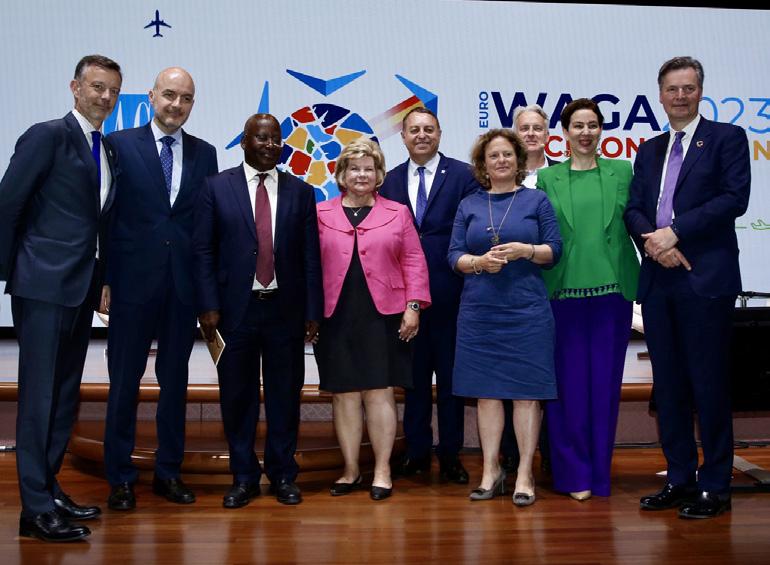
Lew Bleiweis (Asheville, USA)
David Ciceo (Cluj-Napoca, Romania)
Alex Gitari (Nairobi, Kenya)
Fred Lam (Hong Kong)
Tan Sri Bashir Ahmad Abdul Majid (Delhi, India)
Mpumi Mpofu (Johannesburg, South Africa)
Andrew O’Brian (Washington DC, USA)
Jorge Rosillo (Galapagos, Ecuador)
Brian Ryks (Minneapolis-St Paul, USA)
1 Vacancy
WBP Observer
Esperanza Morales Martin (Global Exchange)
Correct as of August 2023

THE GLOBAL AIRPORT COMMERCIAL REVENUES CONFERENCE
25 & 26
Hosted by Organised by
Safety and security have always been the aviation industry's foremost priorities. Airlines focus on preventing accidents and ensuring the safety and security of passengers and crew during flights, while airports deal with a complex variety of threats targeting landside and airside facilities, aircraft, crew, employees that work at the airport, and passengers, whilst facilitating seamless journeys.
What are the main areas of security today? Landside and airside security, insider threats, unauthorised drones, human trafficking, illegal smuggling, and cybercrime to name a few.
The global security climate is complex and evolving; terrorists and criminals leverage increasingly sophisticated tools to exploit vulnerabilities in airport security systems.
To stay one step ahead of these ever-emerging and evolving threats, aviation stakeholders must adopt risk-based security measures and enhanced screening processes to strengthen their resilience while providing a streamlined passenger experience.
In line with our commitment to this, in late June, Airports Council International (ACI) World, ACI North America (NA) and the US Transportation Security Administration (TSA) signed an important Memorandum of Understanding to further enhance the development of secure and efficient aviation security operations globally.
Supported by the TSA, ACI member airports will benefit from enhanced assistance through diverse security resources such as the ACI Airport Excellence (APEX) in Security programme, the ACI World Smart Security programme, and the ACI-NA One-Stop Security programme between select international and US city pairs. The parties will also collaborate on the recently launched AirportShare, a revolutionary platform for sharing real-time airport data amongst aviation stakeholders.
One of the most quickly evolving areas of security is cybersecurity. The aviation industry relies on interconnected systems and digital technologies to maintain efficient, safe, and secure operations. Any disruption in this complex and fine-tuned system can jeopardise safety and security, have severe economic consequences, and reverberate across national and global environments. For that reason, one of the resolutions from our last Assembly in Barcelona focuses on cybersecurity, and ICAO is also planning several activities prioritising the topic.
As mentioned, in July 2023, the ACI World Annual General Assembly (WAGA) adopted a significant resolution “Affirming airport’s commitment to addressing the evolving cyber threats in aviation.” It urges governments, international organisations, and relevant stakeholders to use the existing international standards and frameworks on information security and cybersecurity when creating aviation cybersecurity frameworks, standards, and guidelines.
In addition, it calls upon governments to support the development of skilled aviation cybersecurity professionals.
Overall, the industry's reliance on digital technologies makes aviation a prime target for cybercriminals, turning cybercrime into one of most rapidly increasing security threats. How should airports and the wider aviation industry respond to this growing challenge?
For one, the use of proactive risk-based approaches for cybersecurity are a crucial means to safeguard critical infrastructure and systems, protect sensitive and confidential data, and ensure public trust in the industry. And second, it is essential that all stakeholders involved work together in a spirit of co-operation and co-ordination.
ACI World has long prioritised the issue through its advocacy, 2018 Resolution, and development of resources such as the Cybersecurity Implementation Handbook and the Cybersecurity for Airport Executives Handbook (available on the ACI Store) and recognises the wider efforts taken by the aviation industry, including the leadership of ICAO.
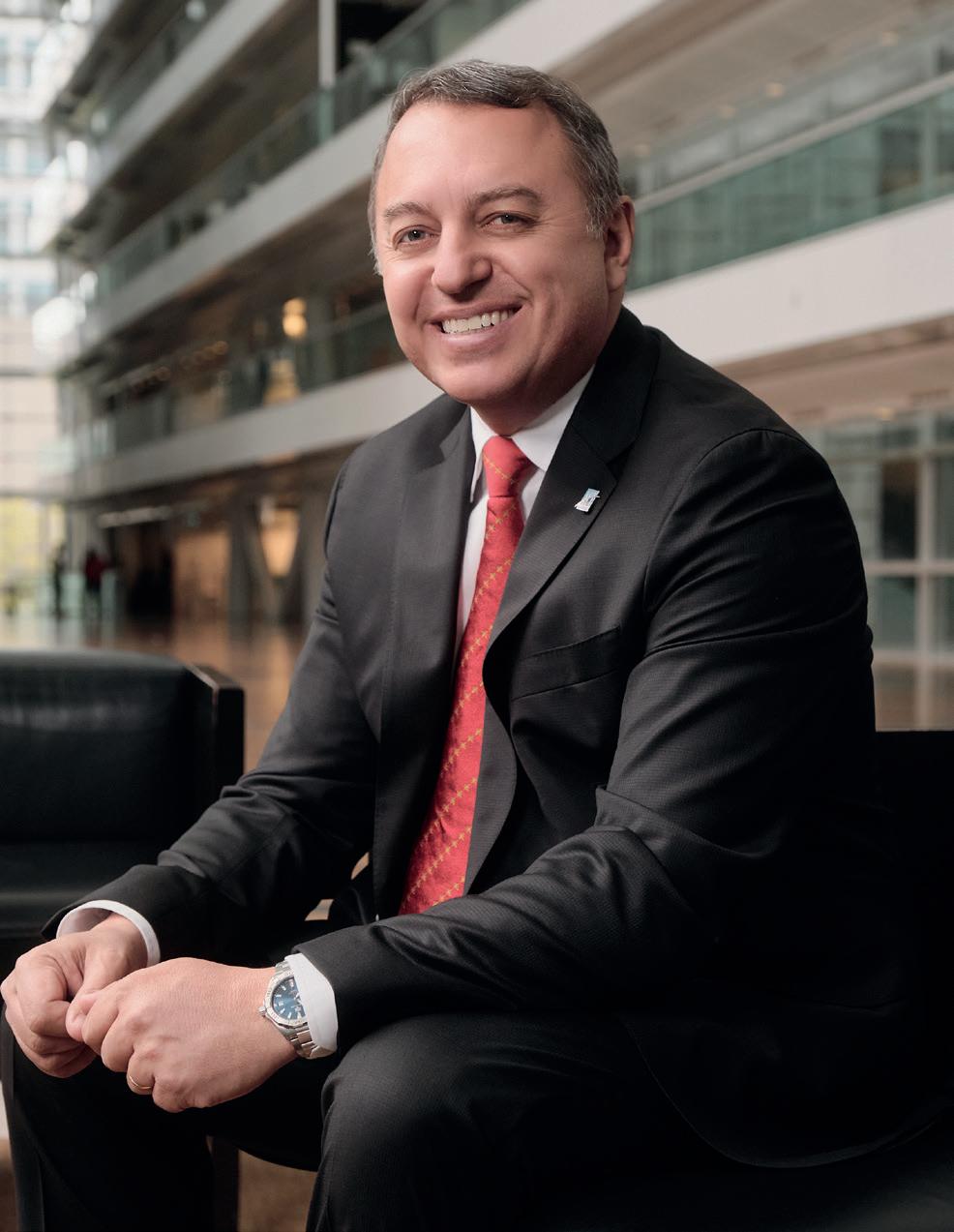
It is clear that in response to the cybersecurity landscape, aviation stakeholders must further enhance their mitigation and awareness measures.
Possessing a mature level of cybersecurity is no longer sufficient; the industry must strive for proactive, adaptable, and collaborative posture.
Aviation security is a very complex, challenging, and dynamic landscape, but the outlook is hopeful. By adopting a proactive and collaborative stance, aviation stakeholders can strengthen the security of airports, aircraft and most importantly, passengers.
We need to stay ahead, adapt, and remain vigilant. Let’s continue working together as we uphold a safe and secure air transport system, always with the focus on the safe and seamless journey for passengers.
We report on the latest news from ACI World, including key resolutions announced at WAGA, and ACI EUROPE.
Riyadh Airports Company will host the ACI Asia-Pacific/ACI World Annual General Assembly, Conference and Exhibition (WAGA) in Riyadh, in the Kingdom of Saudi Arabia, from May 21-23, 2024.
ACI World director general, Luis Felipe de Oliveira, said: “We are thrilled to be joining forces with ACI Asia-Pacific and Riyadh Airports Company to host WAGA 2024, the most important global gathering of airport leaders.
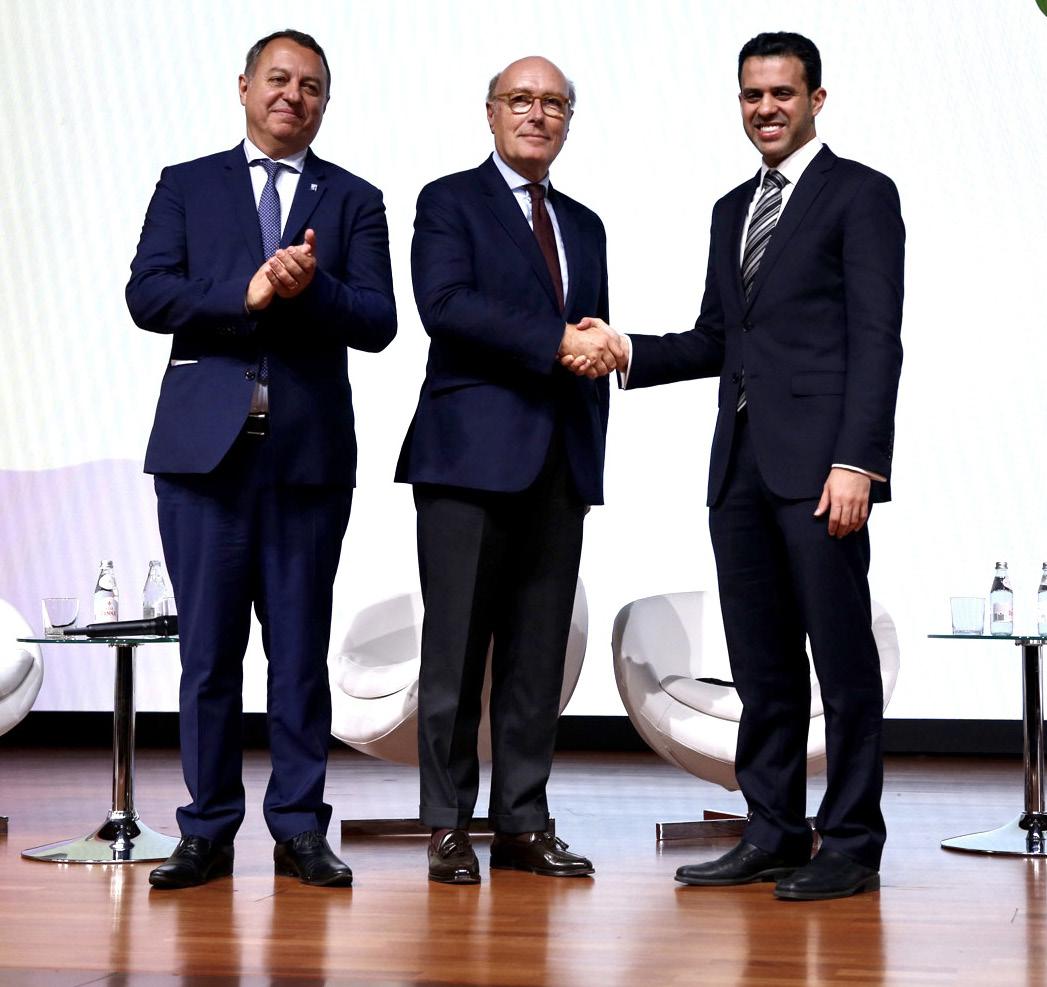
"The region is home to the fastest growing aviation markets in the world and to leading airports that are raising the bar on all fronts for travellers and communities. As we build a sustainable and resilient aviation ecosystem, our continued engagement with the global airport community and its relevant stakeholders remains the deciding factor in reaching our industry global targets.”
ACI Asia-Pacific's director general, Stefano Baronci, said: “It’s indeed a proud moment for us as WAGA will be held in Riyadh next year. This is a significant meeting of global aviation leaders, and a great forum to debate current issues and possibilities in the aviation sector, as well as exploring innovative strategies for long-term success. We are excited to welcome aviation leaders from all over the world and make it a memorable experience for all.”
While Musad Aldaood, CEO of Riyadh Airports Company, enthused: “It is a proud moment for us to announce hosting the ACI Asia-Pacific/ACI World Annual General Assembly, Conference and Exhibition in Riyadh next year.
"Enthusiastically, we are excited to welcome aviation leaders from across the globe to ensure a memorable experience for all.
“This important convergence of global aviation authorities is a prime venue to address current challenges and explore opportunities in the aviation sector, as well as to investigate forward-thinking and explore innovative strategies for long-term success."
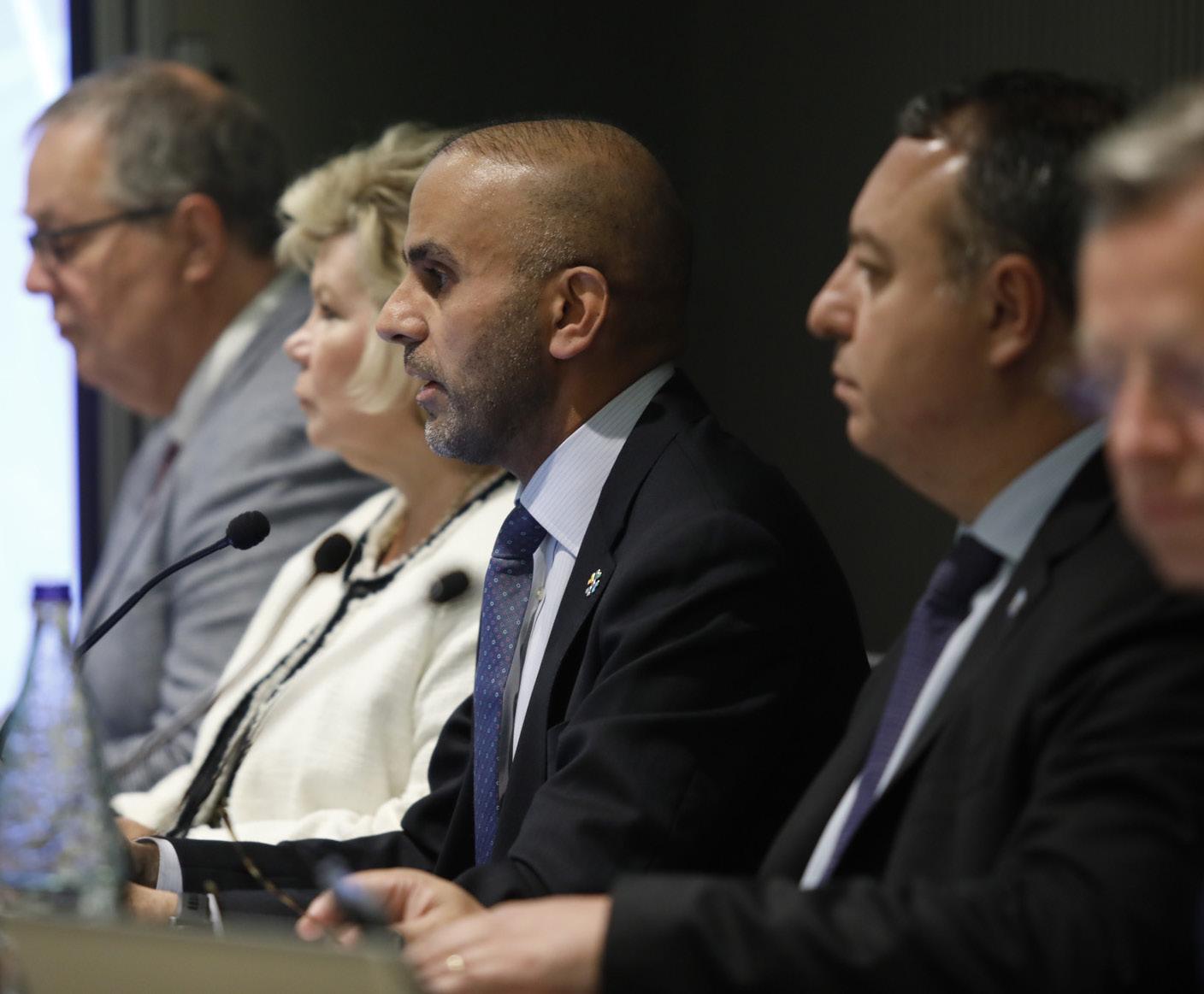
Members unanimously approved resolutions designed to promote Sustainable Aviation Fuel (SAF) and support Environmental, Social and Governance (ESG) practices and combat cyber threats in aviation at the 33rd ACI World Annual General Assembly (WAGA) in Barcelona.
Recognising the need for collective action to deliver the long-term goal of net-zero CO2 emissions by 2050, the Resolution Leading through cleaner energy transition and robust ESG practices calls on ICAO and governments to work with all financial institutions to facilitate access to green finance for aviation and to stimulate the development of SAF. It urges governments to provide the necessary technical and economic support and required regulatory framework for supporting the airport sector energy transition.
Airports are called upon to consider adopting robust ESG practices according to their specific circumstances, engage with ACI in developing the Airport ESG Global Framework, and participate in global efforts to accelerate the deployment of SAF.
Recognising that aviation relies on interconnected systems and advanced technologies and that they may be vulnerable to cyber threats, the Resolution Affirming airport’s commitment to addressing the evolving cyber threats in aviation recognises the actions taken by airports and calls on all aviation stakeholders to strengthen their awareness and mitigation measures in this area.
The Resolution urges governments, international organisations, and relevant stakeholders to leverage the existing international standards and frameworks on information security and cybersecurity in the development of aviation cybersecurity frameworks, standards, and guidelines. It also calls on governments to implement the necessary measures to support the development of a skilled aviation cybersecurity workforce.
The latest World Airport Traffic Dataset published by ACI World confirms the top 20 busiest airports in the world in 2022 and reveals airport passenger, cargo, and aircraft movement rankings for over 2,600 airports across more than 180 countries and territories.
The dataset’s key findings confirm total global passenger traffic for 2022 – surpassing 6.6 billion – the return of international traffic, and the prevalence of US airports in the top rankings.
ACI World director general, Luis Felipe de Oliveira, said: “In the face of cost pressures and tight labour markets, the world’s airports continue to serve the public’s thirst to travel by air.
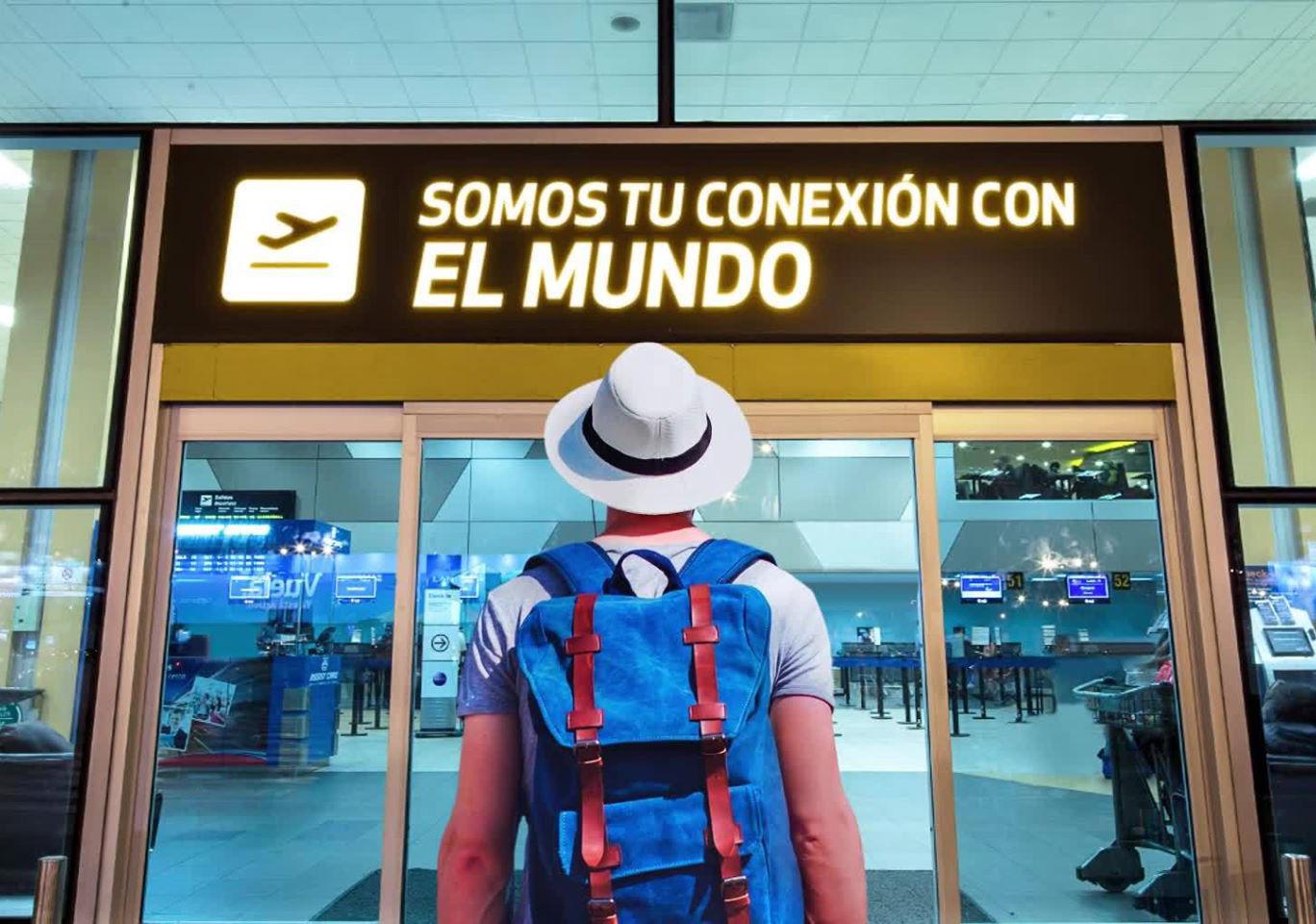
"Airports have once more proven their resiliency as reflected in the key findings from the ACI World Airport Traffic Dataset. As always, reliable data remains fundamental to our advocacy and development of timely airport guidance.
"Airports and aviation stakeholders must continue to focus wholeheartedly on building a safe, secure, efficient, and environmentally sustainable air transport system fit to welcome the doubling of passengers that will travel through our doors in the next two decades.”
ACI collects airport traffic every year through its global network of airport operator members, investors, and aviation stakeholders. The dataset allows users to filter through accurate and reliable numbers that can be segmented on a regional, national, and airport level and by traffic type.
• Global total passengers surpassed 6.6 billion in 2022, representing an increase of 43.8% from 2021 or a recovery of 72.5% versus pre-pandemic result (2019).
• The top 20 airports for global passenger traffic represent 18% of global traffic (1.2 billion passengers).
• From the top 20 rankings, 10 airports are in the US. Almost all have significant domestic passenger shares (between 75%–95%).
The latest edition of ACI EUROPE's Airport Industry Connectivity Report shows that air connectivity in 2023 is lagging behind the recovery of passenger volumes and remains 16% down on pre-pandemic levels.
It also reveals how post-COVID recovery patterns are impacting not just the aviation market, but also the passengers and communities for whom connectivity serves mobility needs and delivers significant economic and social benefits.
These post-COVID recovery patterns are shaping the connectivity performance of both national markets and individual airports, and they are driving structural changes with significant divergences between direct and indirect/hub connectivity.
ACI EUROPE also notes that these topline figures tell their own story, but beneath this lies significant divergences between national markets which essentially reflect the permanence of COVID-19 recovery patterns. In particular we see the importance of Leisure and VFR demand, the selective expansion of ultra-LCCs (ultra-Low Cost Carriers), and the relative retrenchment of FSCs (Full Service Carriers), along with the impact of the war in Ukraine.
• Global air cargo volumes decreased by 6.7% year-over-year (-2.6% versus 2019), to close to 117 million tonnes in 2022. The decline can be attributed to the ongoing geopolitical tensions and disruptions to global trade and supply chains.
• Air cargo traffic is more concentrated amongst the main airports: volumes in the top 20 represent around 42% (49.5 million metric tonnes) of the global volumes.
• Cincinnati/Northern Kentucky International Airport – home to Amazon Air’s primary US Hub and DHL Express’ Global Superhub for the Americas – witnessed the largest cargo volume growth (+16.8%) amongst the top 20 airports.
• Global aircraft movements were close to 85 million, representing a gain of 14.8% from 2021 results or a recovery at 82.4% from pre-pandemic levels.
• The top 20 airports represent 11.4% of global traffic (9.7 million movements).
• From the top 20 rankings, 13 airports are in the US.
Istanbul has this year replaced Amsterdam-Schiphol as the airport with the highest level of direct connectivity in Europe –moving up from the 5th position pre-pandemic. The Turkish hub has exceeded its pre-pandemic direct connectivity level by +9% and has increased it by a staggering +32% over the past 10 years –a performance largely driven by the growth of the network of Turkish Airlines. The still low penetration of LCCs at the airport points to its significant potential for further connectivity growth.
Olivier Jankovec, director general of ACI EUROPE, said: “The COVID-19 pandemic, along with much increased geopolitical tensions – in particular the war in Ukraine – have clearly challenged the resilience of air connectivity.
"These are changes which appear to be systemic and quite possibly here to stay. Alongside this, the climate emergency is bringing the societal role and value of air connectivity into question. The formidable economic and social benefits of air connectivity need to go hand in glove with decarbonisation if we are to de-risk our collective futures.
"This way, the entire aviation sector is working relentlessly towards tangible progress, firmly committed to net zero air connectivity."
2023
September 30-October 3
ACI North America Annual Conference & Exhibition Long Beach, CA, USA
2023
October 14-20
ACI Africa Board & Committee Meetings, Annual Assembly, Conference & Exhibition Dakar, Senegal
2023
November 21-23
ACI Asia-Pacific, ACI EUROPE, and ACI World Airports Innovate Muscat, Oman
ACI World
Luis Felipe de Oliveira
Director General
PO Box 302
800 Rue du Square Victoria
Montreal, Quebec H4Z 1G8
Canada
Tel: +1 514 373 1200
Fax: +1 514 373 1201
aci@aci.aero
www.aci.aero
ACI Africa
Ali Tounsi
Secretary General
Casablanca, Morocco
Tel: +212 660 156 916 atounsi@aci-africa.aero
www.aci-africa.aero
ACI Asia-Pacific
Stefano Baronci
Director General
Hong Kong SAR, China
Tel: +852 2180 9449
Fax: +852 2180 9462
info@aci-asiapac.aero
www.aci-asiapac.aero
ACI Europe
Olivier Jankovec
Director General
Brussels, Belgium
Tel: +32 (2) 552 0978
Fax: +32 (2) 502 5637 danielle.michel@aci-europe.org www.aci-europe.org
ACI Latin America & Caribbean
Rafael Echevarne
Director General
Panama City, Panama
Tel: +507 830 5657/58 info@aci-lac.aero
www.aci-lac.aero
2023
September 4-7
ACI World Customer Experience Global Summit Incheon, South Korea
ACI North America
Kevin Burke
President & CEO
Washington DC, USA
Tel: +1 202 293 8500
Fax: +1 202 331 1362
postmaster@aci-na.org www.aci-na.org
Airports Council International (ACI), the trade association of the world’s airports, is a federated organisation comprising ACI World, ACI Africa, ACI Asia-Pacific, ACI EUROPE, ACI Latin America-Caribbean and ACI North America. In representing the best interests of airports during key phases of policy development, ACI makes a significant contribution toward ensuring a global air transport system that is safe, secure, efficient, and environmentally sustainable. As of January 2023, ACI serves 712 members, operating 1925 airports in 171 countries.
Solving complex challenges demands a special type of consultant – a consultant that captures the big picture without losing sight of the smallest detail.
Learn how our strategic vision, industry-focused expertise, and pre-decisional support services can help you address challenges.
www.ricondo.com

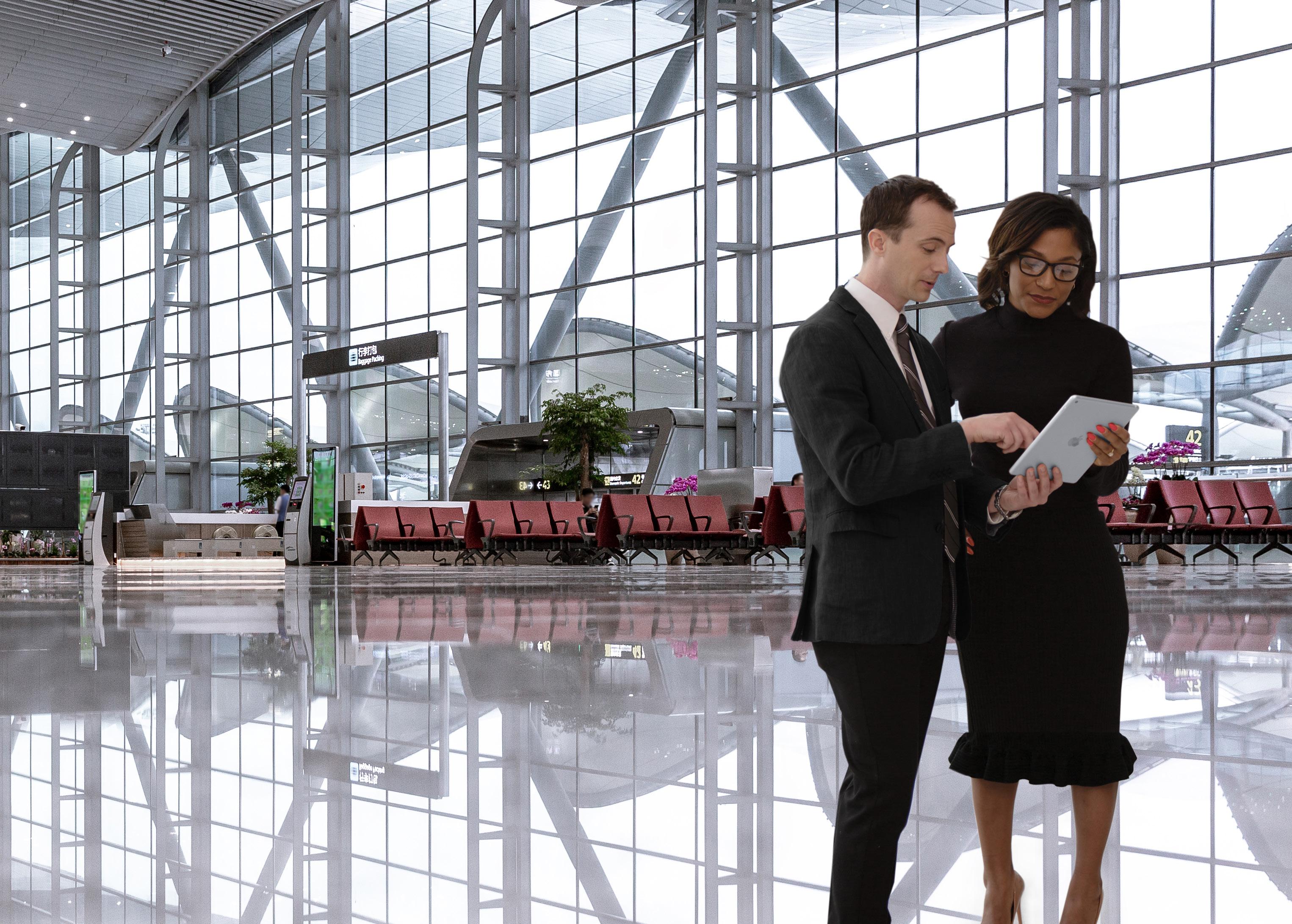
With Airside 4.0, ADB SAFEGATE provides a roadmap to a truly intelligent airside that will revolutionize the way airports tackle the challenges of the 21st century and transform their operations. Advanced digital technologies, data-driven insights and collaborative processes empower airports to achieve their goals for improved operational efficiency, carbon neutrality and enhanced passenger experience.

CEO, Jonny Andersen, tells Joe Bates more about the growth and development of Curaçao International Airport, which boasts one of the newest terminals in the Caribbean and a growing route network.
Located just 40 miles north of Venezuela off of the tip of South America, Curaçao International Airport (CUR) is the gateway to the tropical island of Curaçao, which is officially considered a 'constituent country of the Kingdom of the Netherlands'.
The 'C' in the ABC islands of Aruba, Bonaire and Curaçao in the Dutch Caribbean, it is also sister island to St Martin, Saba and Sint Eustatius, which enjoy the same constituent country of the Netherlands status having formerly been known as the Dutch West Indies.
For Curaçao, its unconventional status, effectively means that it has been independent from the Netherlands since 2010 and now has its own government that controls and manages its own affairs as an autonomous country, but the Dutch King remains its head of state and the Netherlands is responsible for its defence and foreign policy.
The airport itself is operated by Curaçao Airport Partners (CAP) – a consortium made up of CCR Airports (Brazil), Janssen De Jong (the Netherlands) and Aport (Zurich Airport) – and boasts one of the newest terminals in the Caribbean and a single 3,400 metre runway capable of accommodating B747-800s, although it is best equipped to handle aircaft up to the size of the B777-300.
Opened in late 2018 with a design capacity of 2.5 million passengers per annum, CUR’s 18,000sqm terminal is equipped with six boarding bridges that are capable of simultaneously accommodating three widebody aircraft.
CAP (courtesy of predecessor, Alterra Partners) was awarded a 30-year contract to manage, operate and develop CUR in 2003, and building the new terminal and developing connectivity to Curaçao were two of the main aims of the concession.
With the terminal already ticked off and today’s route network unrecognisable from the one it inherited in 2003, and now including direct services to three US cities and daily flights to Amsterdam, there can be little doubt that the concession has been a huge success for CAP, the government of Curaçao, and the airlines currently serving the tiny island nation with a population of around 150,000 people.
"Our strategy has been one of continuous improvement, and with a relatively new terminal, improved connectivity and ongoing investment in new technology, equipment and facilities, I believe that we’ve been good for Curaçao,” says CAP CEO, Jonny Andersen.
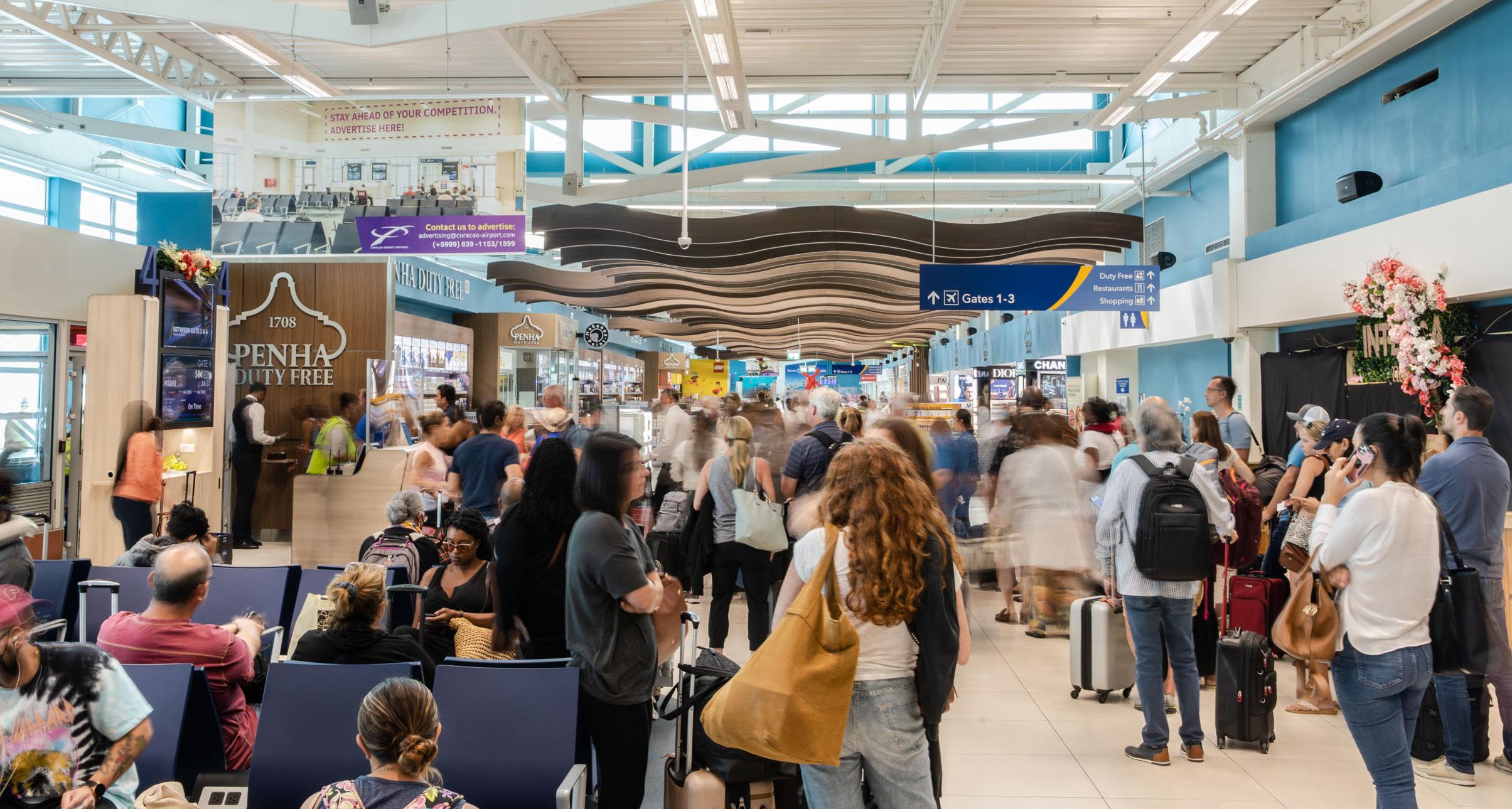
As destinations go, Curaçao takes some beating, as it's geographical location ensures that it enjoys good weather most of the year, making it a year-round attraction for tourists.
This, along with its business appeal – Curaçao is the former administrative centre of the Dutch Caribbean – means that the island has long been associated with international trade and financial
services, shipping and oil refining. The mix of tourism and commerce made CUR one of the fastest growing and up and coming destinations in the Caribbean pre-COVID.
Like elsewhere in the world, the pandemic hit Curaçao hard, and the airport experienced a tough 2020 and 2021 with passenger traffic down 63% and 43% respectively on 2019, before a hugely impressive turnaround in 2022 saw passenger numbers exceed pre-pandemic levels.
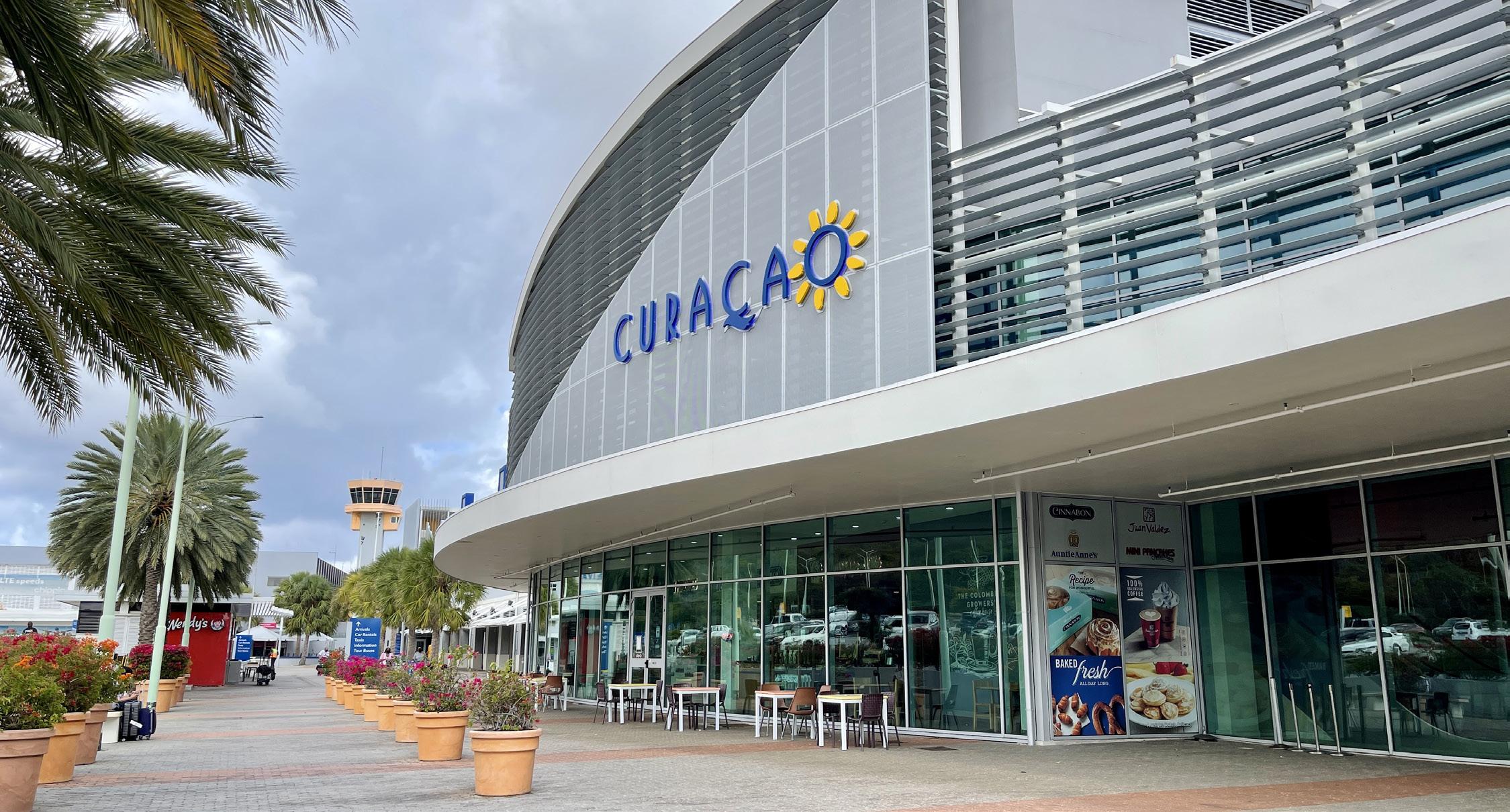
Andersen attributes CUR's strong recovery to the growth in the US market and KLM’s decision at the end of 2021 to make Curaçao a main destination from Amsterdam, which resulted in double daily B777 flights to the airport during the 2021/22 winter season.
He also believes that Curaçao’s year-round appeal and growing popularity with passengers from South America aided CUR’s recovery and ensured that it was able to bounce back more quickly than other airports in the region.
CUR recently celebrated the milestone launch of its first service to Brazil, a once weekly service to Belo Horizonte, which operator Azul intends to double during the autumn of this year.
CAP's success in boosting connectivity to Curaçao has led to Curaçao International Airport being shortlisted for a Routes Americas 2023 award in the category for airports handling less than four million passengers per annum where it faces competition from Idaho Falls Regional Airport, Providence–Rhode Island TF Green International Airport, and Tulsa International Airport, to win the top prize.
Andersen says that CAP is humbled by the recognition of the industry and is committed to the retention, growth and diversification of the destination’s route network in close partnership with current and potential future airline partners.
He is also quick to point out that attracting new airlines and routes to Curaçao is a joint effort along with the Curaçao Tourism Board and the Curaçao Hospitality and Tourism Association, with the island nation effectively stepping up its investment in promoting and developing the tourism industry since the 2017 closure of the former oil refinery.
All of CUR’s traffic from Europe today comes from the Netherlands and this is something Andersen would like to change a little if he can, casting an envious eye in the direction of Aruba that recently welcomed the launch of British Airways services to London.
"Maybe we can catch British Airways, too, as London is one of the destinations I'd like to attract," says Andersen. "Curaçao is larger than Aruba, but Aruba has a much more developed tourism industry than us as they have been doing it for years, so we are currently at a disadvantage. However, we are learning fast and fast-tracking the development of our tourist facilities.
“We now have around 3,500 hotel rooms on the island, probably more actually, and there are plans to increase the number of hotel rooms by 30% to 40% over the next three to four years to give us around 5,500 to 6,000 rooms, and it’s primarily high yield accommodation.”
Expanding on this a little more, Andersen says that Curaçao's strategy is to target more upmarket tourists, and the recent opening of a number of new hotels, including two Sandals resorts, have served notice of the island's intentions.
"Operators like Sandals offer exclusive, all-inclusive destinations that particularly appeal to the US and European market,” says Andersen. “I believe that these type of facilities together with the uniqueness of Curaçao, which is very different to neighbouring Aruba, Bonaire and other Dutch Caribbean destinations, ensure that we bring something a little different to the market."
New hotel accommodation due to open in 2023 includes a brand-new Marriott Courtyard, the second tower of the Mangrove Beach Corendon Curaçao All-Inclusive Resort, and the Curio by Hilton. They will provide a significant boost to the number of hotel rooms available on the island, and they will be needed, with Cirium forecasting that Curaçao will welcome a total of 24,240 scheduled flights in 2023, a healthy 18% increase on 2022.
Talking about the appeal of the North American market to the airport, Andersen says: “We are very much focused on the US and North America market today as it is very attractive to us in terms of what it brings.
“Americans tend to come year-round and more often, unlike Europeans who come at specific times of the year such as Easter, Summer or Christmas. Americans usually stay for a week or less, traditionally pre-pay for their holidays and their discretionary spending is much higher than other nationalities.”
US cities served from CUR today include New York (five times weekly); Charlotte (daily during winter season); and Miami (double daily), the latter being just a two-hour flight away. They will be joined by Atlanta when Delta launches ATL-CUR services on December 16, 2023. Andersen would like to see Boston added to this list in the not too distant future.
After Amsterdam, the next biggest routes at CUR today are Miami, Panama City and Bogota, although up to 15 Twin Otter or BN-2 Islander regional services per day to Bonaire, just 50 miles away as the crow flies, theoretically make it the busiest route served from the airport.
Andersen states that CUR is now well and truly back on track after experiencing what has been described as an "exceptional year" for the gateway in 2022, which saw its passenger numbers exceed pre-pandemic levels.
In facts and figures, in 2022, a total of 1.46 million passengers passed through its facilities. Passengers on international routes (non-Dutch Caribbean) accounted for 578,545 of all departing passengers – up 106% on 2019, while travellers bound for more local destinations reached 79% of pre-pandemic levels.
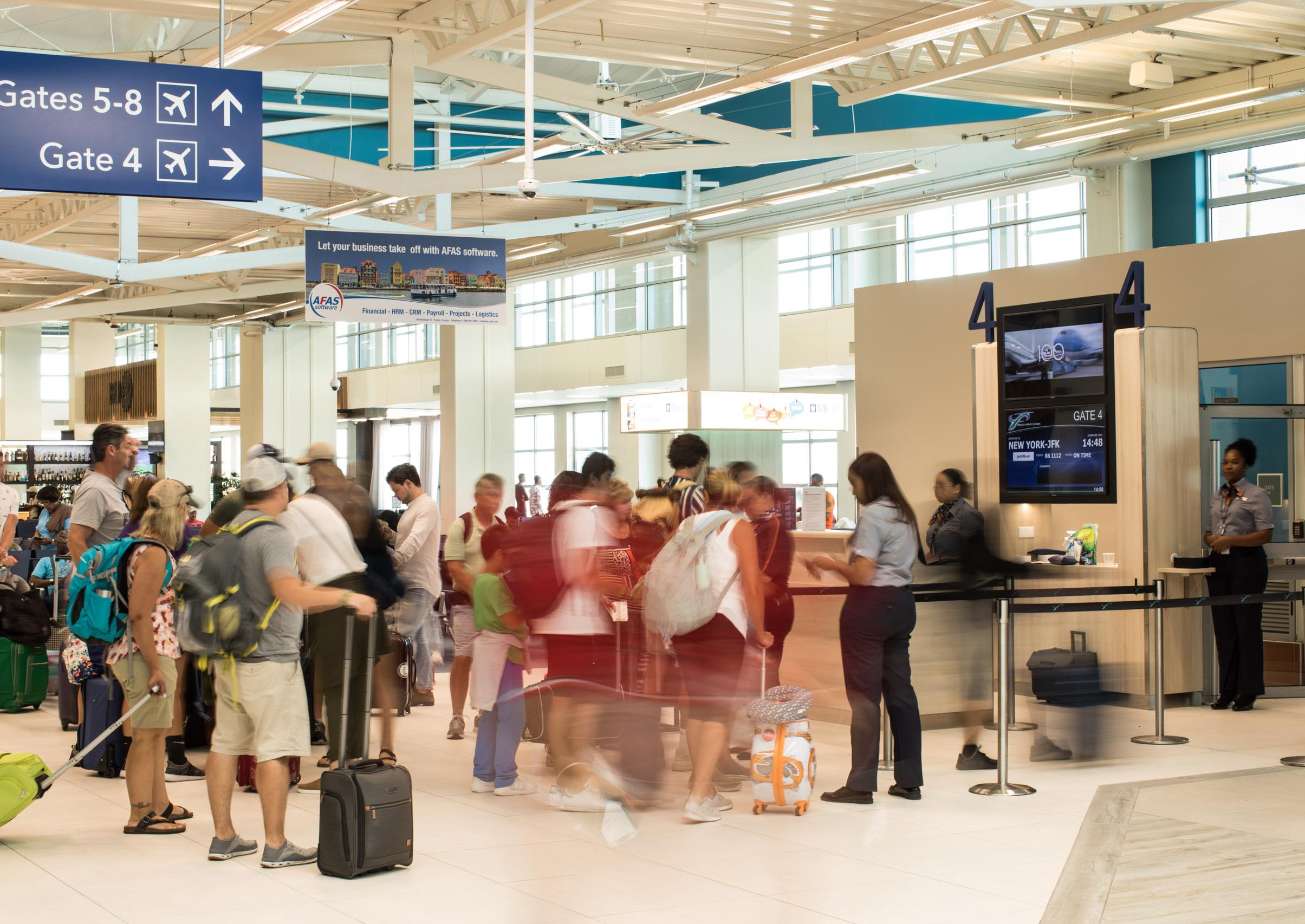
Europe (49%), North America (18%), the Dutch Caribbean (16%), and South America (12%) enjoyed the largest share of passenger traffic in 2022, with 100% of the traffic from Europe arriving on
KLM flights. Turkish carrier, Corendon Airlines, will join it on the AMS-CUR route later this year.
Compared to 2019, passenger numbers in 2022 exceeded pre-pandemic levels to Europe by 20% and the USA by 3%, while South America and Canada reached 93% and 81% respectively of their pre-COVID totals.
The re-opening of Canada's borders for international passenger traffic in the latter part of 2021, prompted Air Canada and WestJet to restart their non-stop winter season flights from Toronto and Montreal to Curaçao in the final quarter of the year.
And the strong upward trajectory in traffic at CUR continued in the first half 2023 with passenger numbers at the gateway up by 10% on the corresponding period last year.
Andersen enthused: “We are currently outperforming the forecast that predicted we would handle 2.1 million passengers by 2030. As a result, we expect to welcome around 1.6 million passengers in 2023 and, in the long-term, we are maybe looking at growth of 10% per year.”
With regards to traffic, one of few concerns for Andersen right now is the fact that CUR’s current traffic mix means that the airport handles the bulk of its flights between 4pm and 8pm daily, Thursdays and Sundays traditionally being its busiest days, which he admits does put extra strain on the gateway’s staff and facilities.
A very real new concern for CUR, however, is the impact the decision to reduce the number of flights from Amsterdam Schiphol could have on the growth and prosperity of Curaçao.
For those of you that are unaware, in a bid to address noise and environmental issues, the Dutch government has taken the unprecedented step of electing to reduce Schiphol's annual air traffic

movements from 500,000 today to 440,000 per annum, effectively meaning, as Andersen notes, "that someone, somewhere is going to lose some services".
And CUR is not alone in its concerns as the restriction may potentially have a negative impact on all the islands in the Dutch Caribbean. So much so, in fact, that the Dutch Caribbean Cooperation of Airports (DCCA) – made up of the operators of the six airports spread across the Dutch Caribbean – has written directly to the Dutch government to express its fears, which are primarily about the potential economic and social impact the decision will have on the region.
Cutting services could also lead to a rise in ticket prices between the Netherlands and the Dutch Caribbean, which Andersen says could hit CUR hard.
He says: "Less air capacity and, potentially, higher ticket prices may have a negative impact on all three segments of travellers: business travel, leisure and those visiting friends and relatives (VFR). This will have a negative impact on the economy and the connectivity of social and family networks.”
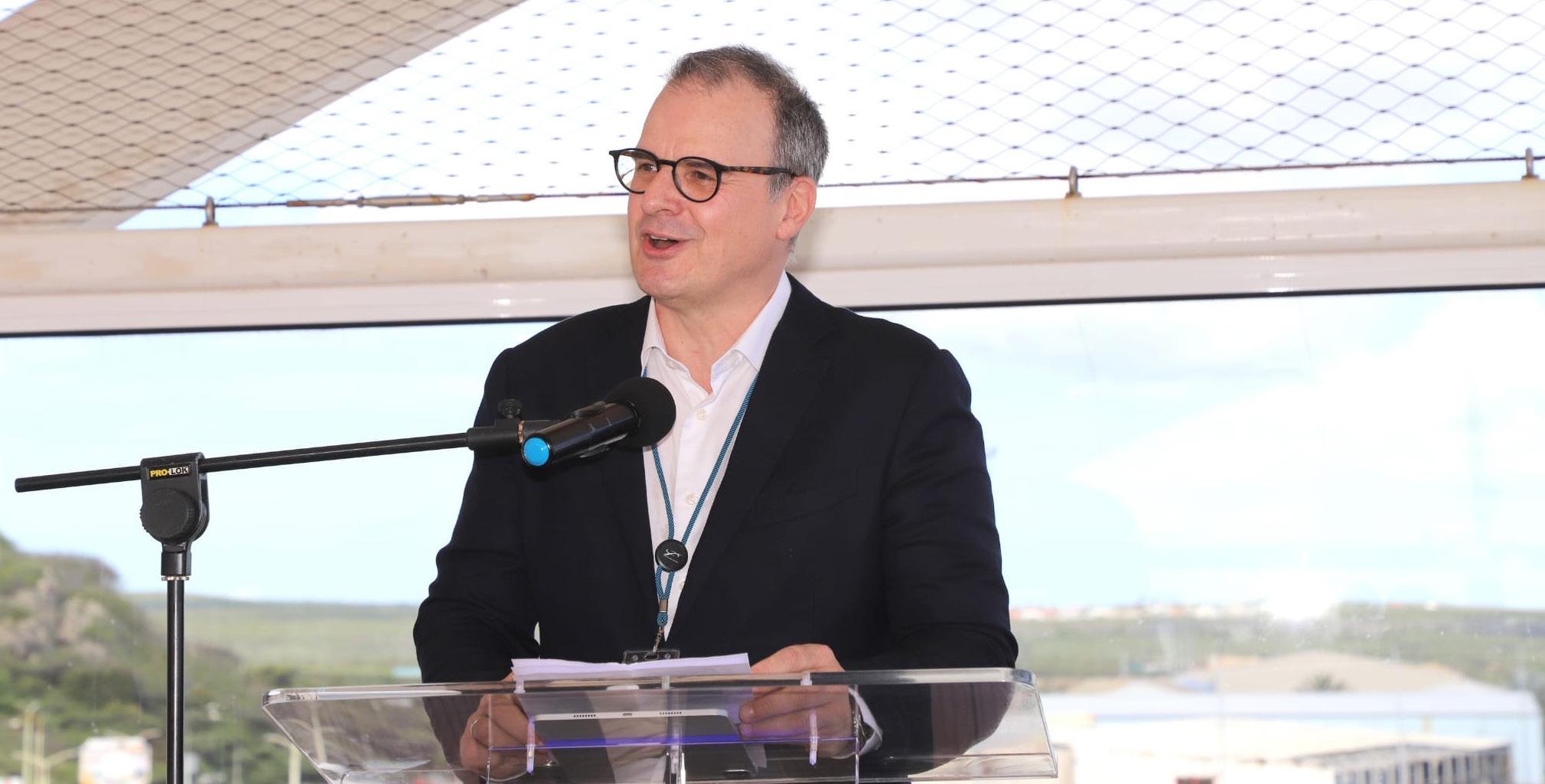
In addition to Curaçao Airport Partners, the DCCA comprises Aruba Airport Authority, Bonaire International Airport, Princess Juliana International Airport Operating Company, the Public Entity Saba, and the Public Entity St Eustatius.
Despite the current Schiphol flight restriction concerns, Andersen is confident in the growth potential of CUR. Indeed, he is so positive about the future that he believes it won't be long before the airport will have to look at further enhancing its facilities to meet rising demand.
Potential projects include totally refurbishing the airport’s former terminal so that it can be brought back into use and be ready for the next generation of electric/hybrid aircraft, and building a new ‘Inter-island Terminal'.

These are just some of the options that CAP would be happy to consider with the Curaçao government going forward as, with tourism really beginning to take off, potentially the best and most profitable years for the airport lie in the future.
However, Andersen is also very aware that CAP doesn't have time on its hands to start a major new capital development programme as it is now into the last ten years of its 30-year concession, and big projects can take longer than that for stakeholders to recoup their investment.
“This is the challenge you face as a concessionaire,” suggested Andersen. “We have delivered what we promised we would do, but now there is only 10 years left on the concession, and that simply isn’t enough time to start a big new investment programme.
“You also have to remember that a lot is going to change over the next decade in terms of the infrastructure needed by airports to meet new operational challenges, such as the electrification of aircraft and other sustainability issues. And if we don’t act now to address some of these challenges we risk being left behind as they are already being looked at by some of the other islands.”
The good news is that CAP is ready to talk with the government about CUR’s future, and with both sides showing a willingness to work together, the signs are good that this Curaçao success story will go and on.
Lidar detection, the newest generation of People Flow Monitoring technology, grants Airport Operators unprecedented access to accurate and anonymous Spatial Intelligence data.
Outsight’s Processing Software is the leading solution that turns this 3D LiDAR data into actionable insights: you can now, finally, track the precise trajectory of each individual, their interactions with fellow travellers, the usage of the Terminal assets and dozens of KPIs.

Empower your operations, bolster user safety, and skyrocket traveller satisfaction with new capabilities that are far beyond what was ever imaginable with legacy camera systems.

ACI World’s senior director for security, technology and innovation, Billy Shallow, addresses some of the key issues facing airport security in a continuously evolving landscape.
Travel is officially back, with passengers in the Northern Hemisphere taking to airports to jet off on their summer holidays and business travel beginning to bounce back.
As a result, some markets are enjoying higher traffic levels than before the pandemic and the spotlight is once again firmly on passenger facilitation and how well airports can meet this rising demand.
Whilst airports and airlines have been working together to ensure and minimise disruption, such as the events seen in summer 2022, there is no doubt that there are still challenges to enable seamless and frictionless journeys.
Capacity challenges remain across the industry whether it be through air traffic control, baggage facilitation or terminal constraints. Security is no exception. Indeed, tightly peaked summer airline schedules have led to multiple examples of airports experiencing longer queue times than they would want to ensure high satisfaction levels.
However, the main protagonist in added security queues comes from staffing shortages, still fallen foul to the COVID-19 pandemic. When airports and designated screening authorities reduced their staffing levels in line with depleted traffic levels, the aviation industry lost a lot of skilled security workers, who seemingly didn’t rush back to their previous jobs.
The need for flexibility in working patterns and remote working, fuelled by challenging the status quo of working conditions, has seen fewer security screeners return to their jobs, given the limited flexibility that the career allows, coupled by disadvantageous shift patterns.
This has had a knock-on effect with screening during peak summer and some airports are struggling to backfill positions, resulting in higher queues with lower service levels.
This is further exasperated by the time it takes to become a security screener with the necessary classroom and on-the-job mandatory training. The skills required to be a screener sometimes do not match the pay offered by companies and therefore there are less and less people applying for the roles.
Furthermore, the time it takes to conduct the necessary background and security vetting checks, often disengage people from the process, whilst there are other jobs on the market available to start immediately.
All of these challenges have had a substantial effect on the aviation security industry.
There is an up-and-coming versatile solution that could help reduce the airport security staffing challenges, which also has an added security benefit. The application of Artificial Intelligence and Machine Learning deployed at security checkpoints has the potential to revolutionise the screening process in years to come.
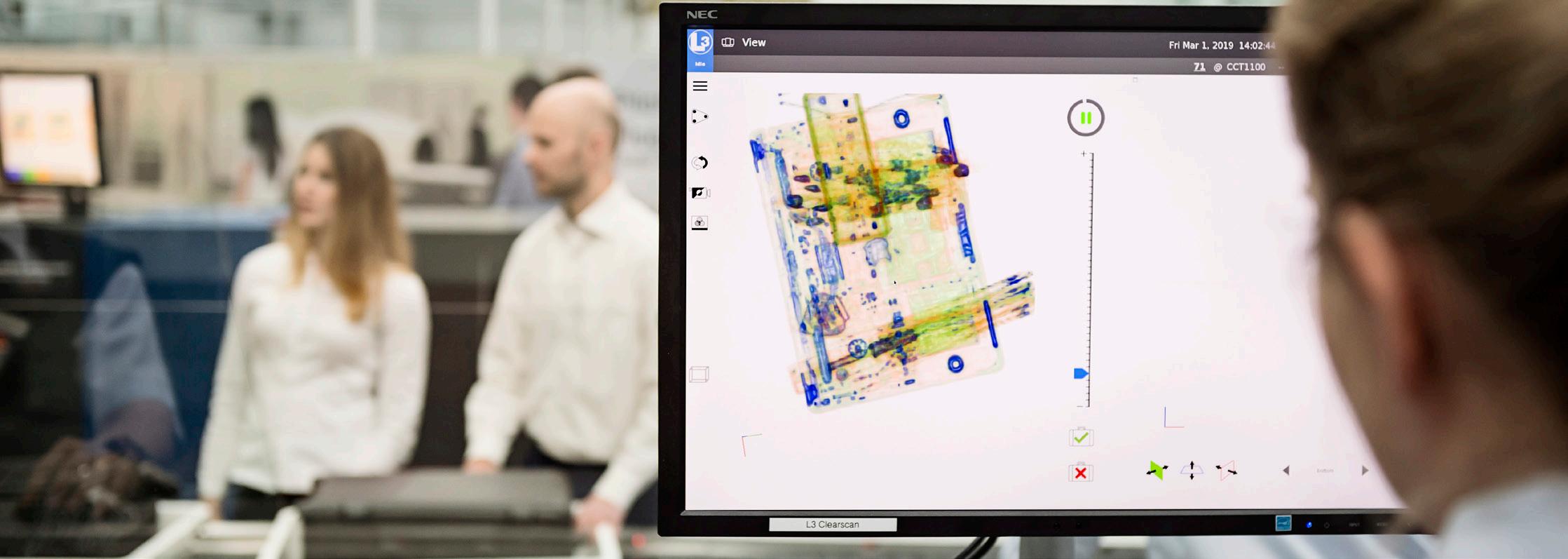
These learnings combine into Automated Prohibited Item Detection Systems (APIDS), which can automatically screen bags in the cabin baggage screening process using focused algorithms.
There are over 100 different combinations of items of the International Civil Aviation Organization’s prohibited items list. This makes life as a security screener challenging with constantly evolving threats and new items being added to the list, with very little ever removed.
The use of APIDS can help screeners as an assist function, or in the future could have the capability to automatically screen bags and only send alarmed images for interpretation by a screener.
There are multiple trials of these algorithms underway, such as in the Netherlands, the UK, China, and the USA, with promising results. In fact, on April 1, 2023, the European Civil Aviation Conference passed a regulation that allows for APIDS algorithms to be implemented and reduce the number of non-alarmed images being sent to a screener dependant on the standard and advancement of the algorithm, where Computed Tomography machines are installed.
The CT machines automatically detect explosive material and when combined with APIDS algorithms offer a far higher level of security than previously seen. Whilst no algorithms are officially approved as of today, the testing protocols have been developed and we expect to see these be implemented over the next couple of years.
The benefit to the industry is threefold. Clearly the most important element is the added security effectiveness these algorithms can bring. However, there are also key advantages to both the airport and passenger.
For airports, it can boost operational efficiency by reducing the number of bags being manually screened by humans, and therefore free up screeners to focus on alarmed and risk-based bags. For the passenger, these algorithms often scan the images up to five times faster than a human operator, and therefore the process should be more seamless, thus reducing the security queues.
The current threats to civil aviation have not disappeared. The existing threats from terrorism and acts of unlawful interference still exist, and the industry needs to continue to deter and prevent successful attacks.
The highest risk of Improvised Explosive Devices is still paramount. Whilst CT machines help prevent these devices by automatically detecting explosives, there are still many countries that rely on conventional X-ray or dual view systems. States should continue to update risk assessments based on their local requirements.
Whilst not seen as an act of unlawful interference, disruptions caused by activism is becoming increasingly common at airports. Protestors accessing airport facilities such as those seen in France and Germany are creating security challenges across airports.
Whilst the protestors are largely concerned with disrupting airport operations because of climate change, they have effectively highlighted vulnerabilities in the airport security system, which potentially could be be utilised by terrorists and those with more severe ill-intent.
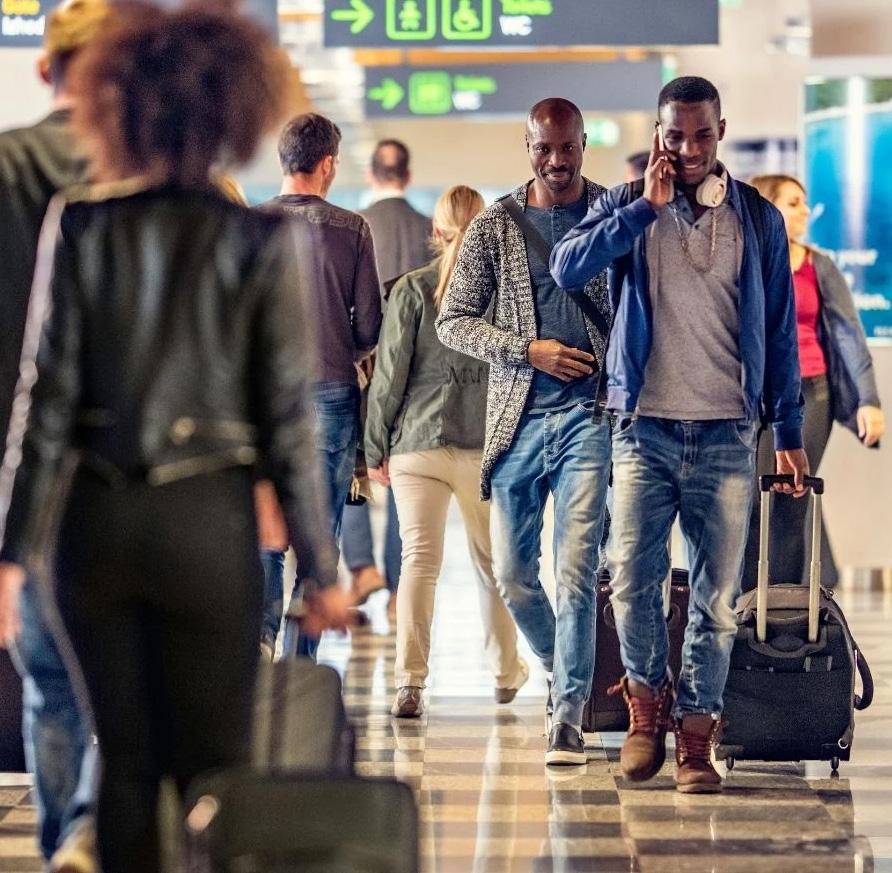
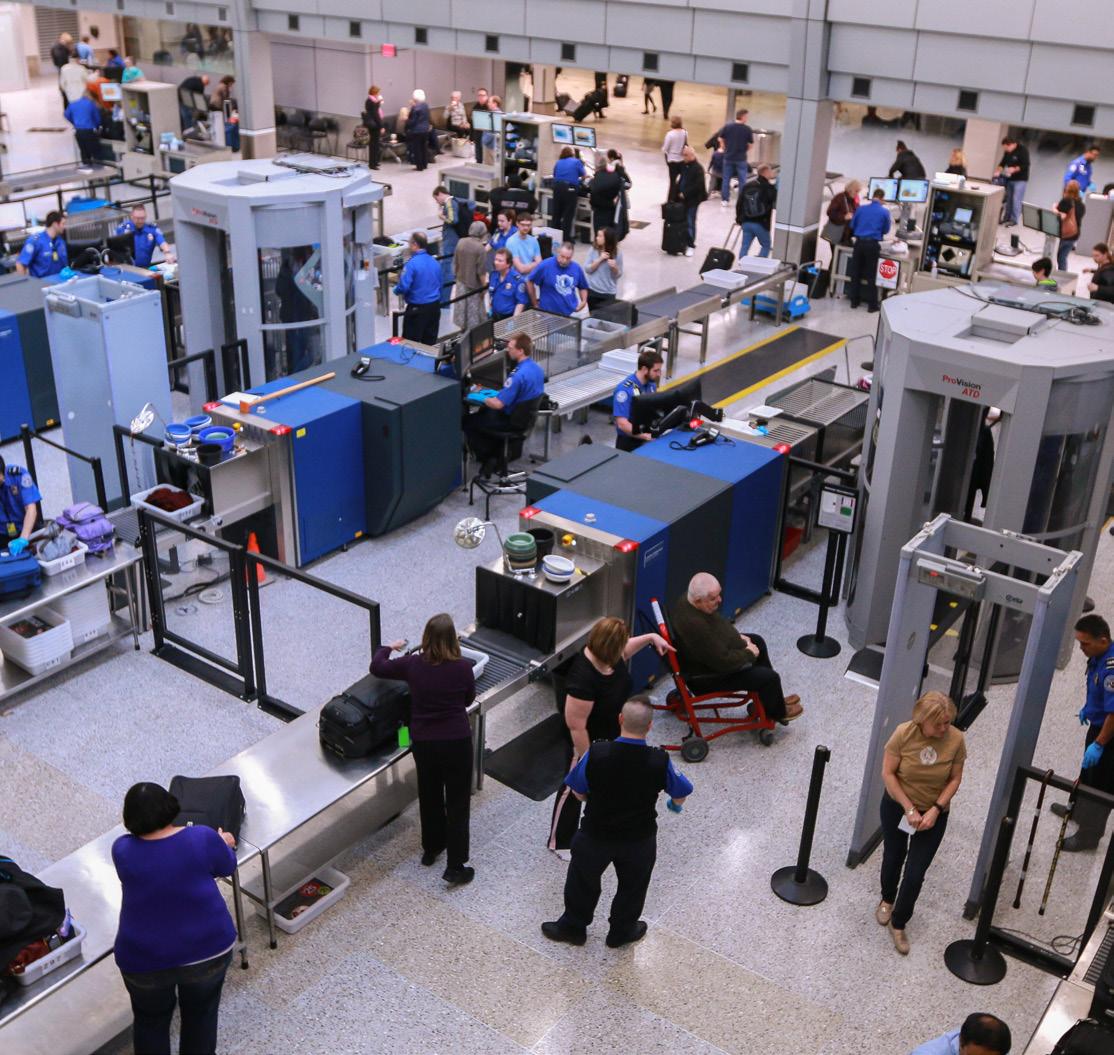
Airports need to ensure their facilities are protected, and regularly conduct risk-assessments and vulnerability assessments to counteract and deter would be perpetrators.
One of the most significant and problematic risks that airports and, indeed, all other industries face, are cyber-attacks.
Phishing campaigns, targeted ransomware and operational system target shutdowns are starting to increase on ICAO’s risk register. Whilst still at a lower risk than traditional terrorist attacks, would-beperpetrators, are becoming increasingly sophisticated in their targetting against aviation.
Cyber groups attempted attacks on more than 70% of the world's airports in 2022. This trend is becoming increasingly worrying. Airports need to ensure they have a robust cyber security programme in place
with incident response plans available to ensure that effective damage control strategies are in place to reduce reputational damage and ensure on-going business continuity.
Montreal based ACI World works with multiple different agencies to improve security across the globe ensuring no state is left behind. With the International Civil Aviation Organization being headquartered metres from our offices, we play a key role in helping shape requirements for security at airports across the globe, whilst advocating for airport interests.
The annual aviation security panel meeting, bringing together States and key security issues across the world for discussion, took place in Montreal earlier this year.
ACI World submitted two papers that received overwhelming support from States and demonstrated clear requirements in the industry. The first was about the importance of taking note and proactive measures surrounding mental health challenges within the industry workforce, accelerated by the pandemic.
The other was on the aforementioned topic of APIDS and the requirement to accelerate innovation within the industry to combat threats and boost the passenger experience.
Both topics are key to ensuring that the workforce and technology combine to ensure the most effective risk mitigation measures are in place, whilst supporting our colleagues around the globe.
Safety and security are paramount in the industry to ensure business continuity and facilitate travel. The requirements to ensure good levels of facilitation and customer experience must be weighed against the ever-evolving threats.
Threats to airports not only come from bad actors, but in 2023 and into the future will also involve disruptions by activism, mental health and of course the insider threat.
The aviation security industry is dynamic and must weigh up the level of risk appetite by regulators and make choices to protect the industry, whilst also facilitating the requirement of travel.
What is clear is that we will not be defeated by a global pandemic, and we will not be beaten by terrorism. The industry is resilient, innovative and secure. That is something no-one can put a price on.
Airport World provides a round-up of the some of latest airport and aviation industry security news stories from across the globe.
The Royal Schiphol Group is starting a collaboration with security technology company Pangiam to investigate ways of screening hand baggage more quickly and safely at Amsterdam Schiphol.
The new technology, powered by artificial intelligence, could eventually help enable travellers to go through security checks faster, without compromising on safety. The aim of the collaboration is to explore how Pangiam’s new technology can improve and speed up hand baggage screening at Schiphol and other airports.
A walk-through security scanner that it is claimed can cut airport passenger queues is seeking to raise investment.
A series of demonstrations for investors in August is showing how the Sequestim scanner uses space technology to detect hidden objects.
By detecting heat from the human body, which acts as a light bulb, it is said to be able to easily detect and identify concealed items, even through heavy clothing.
Originally developed by researchers at Cardiff University to study the most distant objects in the Universe, the scanner films people as they walk by.
Unlike the body scanners now in use at airports, no radiation is shone at the passenger, and nobody sees the images, which in any case do not show intimate physical details.
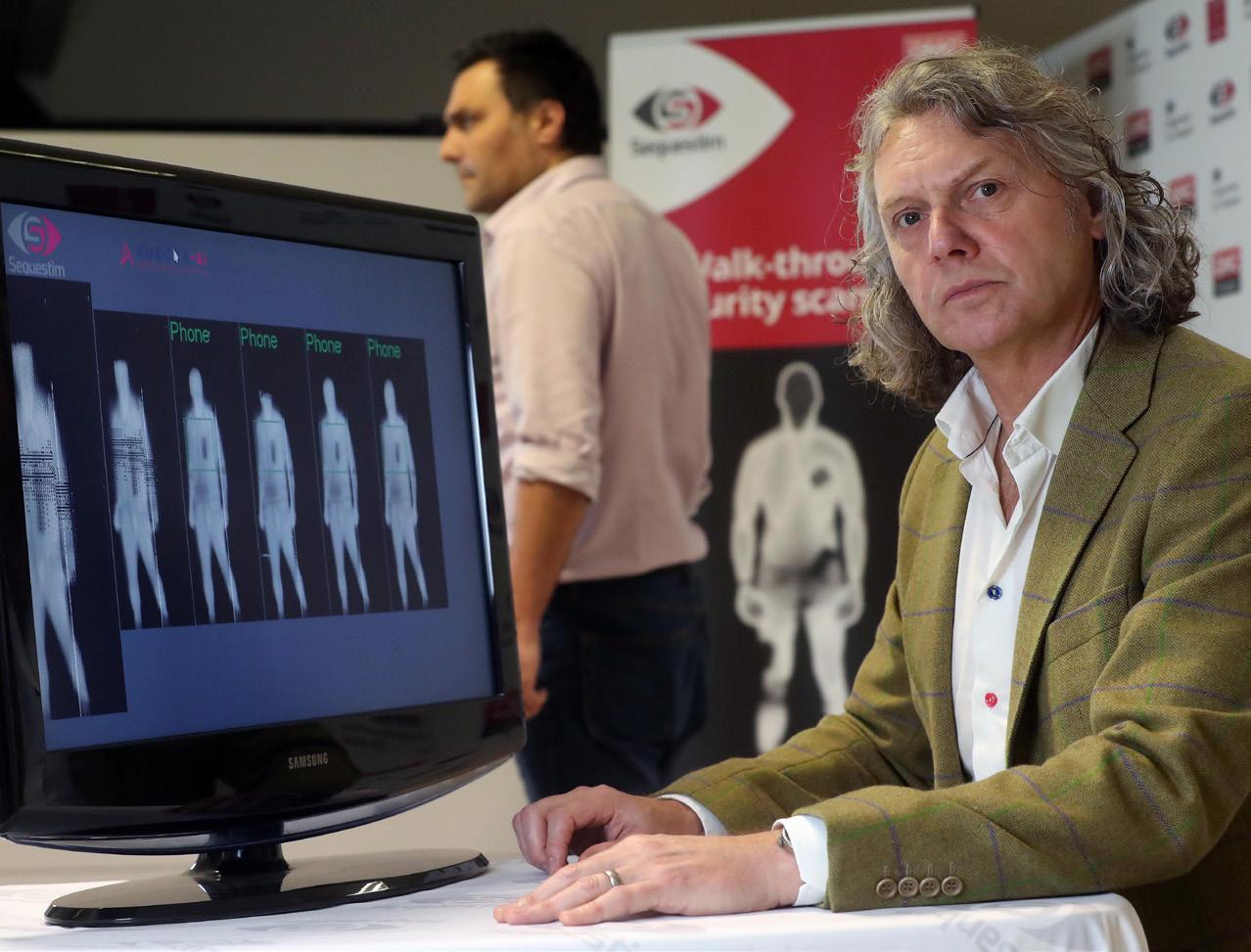
Ken Wood, CEO of Sequestim Ltd, said: “Walk-through security screening is the Holy Grail for the aviation industry. Passenger numbers have risen incredibly fast post-pandemic. ICAO predicts that by the end of 2023, numbers of travellers on most routes will have grown beyond peak passenger numbers in 2019.
“Following a four-year cycle of investment, refinement and technological advance, we have a product that will impact the global security market. It is now ready for private equity investment.
“By embracing AI, the scanner can learn to recognise threats. With passenger numbers expected to double in 20 years, Sequestim can cut waiting times and revolutionise the security experience, giving travellers more time to enjoy airport shops and restaurants. At the same time, we will empower security to keep people safe.”
The company, which is 20% owned by Cardiff University, has worked closely with Rapiscan Systems, which manufactures security equipment and systems designed for checkpoints, cargo, vehicle, baggage, parcel, and air cargo security inspection.
Rapiscan’s chief technical officer, Ken Mann, said: “A walkthrough body screening system that can meet the high standards of the European Civil Aviation Conference and the USA’s Transportation Security Administration in real time would revolutionise aviation security.
“Sequestim’s high resolution imaging and ability to discriminate a range of items and materials shows significant potential for people screening applications.”
According to the airport, the technology uses artificial intelligence and algorithms to analyse images of hand baggage and identify prohibited items and other security risks. In the future, it says, the technology could support employees in this and speed up the process for travellers.
“We are fully committed to recruiting security colleagues and have been increasing the productivity of our security equipment recently, of course without compromising on the quality of security,” said Amsterdam Schiphol’s security director, Philip van Noort.
While Pangiam’s Alexis Long noted: “Royal Schiphol Group has an international reputation for innovation and excellence in technology. This collaboration allows us to bring the benefits of artificial intelligence to the security checkpoint and improve the process.”
Amsterdam Schiphol is the first major European airport to support Project DARTMOUTH, a collaboration between Pangiam and Google. Schiphol is testing the new technology in practice and on a small scale in order for the system to be developed further. The technology can be applied to existing hardware and equipment, such as Schiphol’s CT scans.
It can also be used in combination with other software. If the technology meets all requirements and European regulations, and the trial period is successful, it will be implemented at scale.
The collaboration between Pangiam and Schiphol is part of a wider programme to accelerate the innovation and development of promising in-house and partner technology solutions.
Smiths Detection has been selected to supply fully integrated checkpoints throughout Birmingham Airport (BHX) in the UK as part of its £20 million security screening upgrade.
The new security checkpoints will feature Smiths Detection’s HI-SCAN 6040 CTiX, a computed tomography (CT) X-ray scanner, which produces high-resolution volumetric 3D images for quicker and deeper baggage assessment and low false-alarm rates.
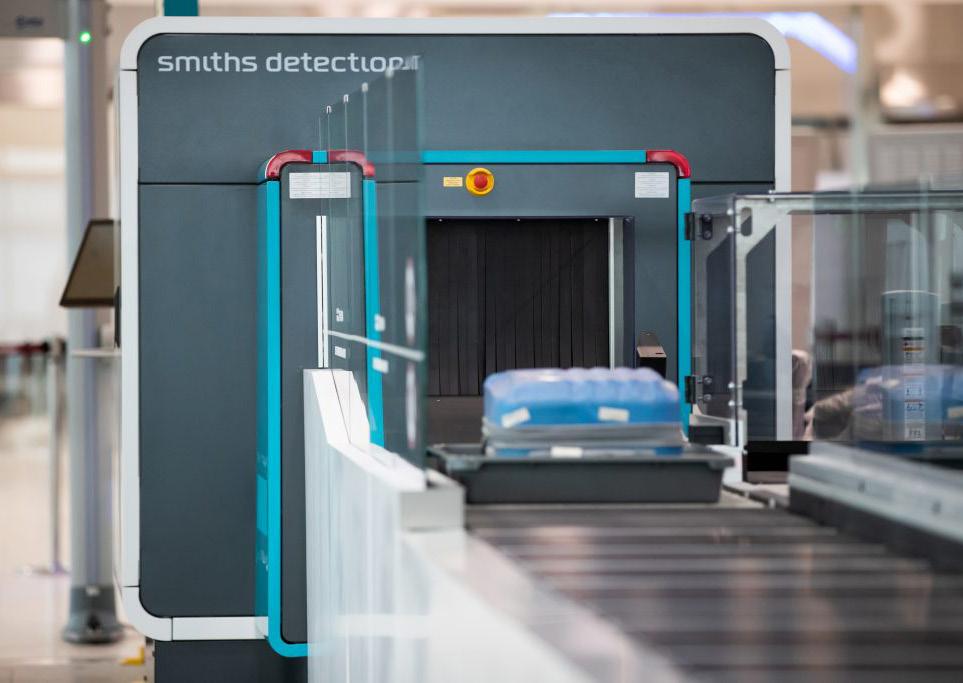
Other new solutions to be supplied to Birmingham Airport includes the iLane, an automatic tray return system, and additional X-ray systems which will also be deployed at staff and visitor checkpoints.
BHX's development and construction director, Stephen Barker, said: “Once built and operational in June 2024, our new pre-flight screening area will further enhance our already high standards of security as well as improve the efficiency of our operation. This improved efficiency will enable us to process customers quickly, especially at peak travel times."
CLEAR is launching its identity verification technology in the main terminal at Tulsa International Airport (TUL). Its introduction is expected to bring frictionless and predictable travel experiences to the Oklahoma gateway, create 25 jobs and generate approximately $1.2 million annually in local economic impact.
“We’re thrilled to welcome CLEAR to Tulsa along with the customer experience they will offer to our passengers,” said Andrew Pierini, executive vice president and chief commercial officer at Tulsa International Airport.
“CLEAR brings a cutting-edge amenity that allows passengers a smooth, expedited journey through airport security and we are excited to have them operating at TUL.”
CLEAR CEO, Caryn Seidman-Becker, stated: “CLEAR is on the side of the American traveller, and our lanes help make the journey as joyful as the destination. We’re excited to bring Tulsa’s travellers the predictable, seamless, and safe airport experience they deserve.”
Passengers use CLEAR’s network of dedicated lanes to verify their identity with their eyes or fingers, replacing the need to take out their wallet and driver’s license. After verification, a CLEAR Ambassador escorts members through the dedicated lane and directly to TSA physical security, saving them time waiting in line at the security checkpoint.
A new study has ranked San Antonio International Airport (SAT) second in the United States for having a short security wait time. According to luggage storage service, Bounce, SAT’s average time is six minutes and six seconds.
“San Antonio has moved from eighth to second since last year, seeing its average wait time shrink by around five minutes,” the report said.
Jesus Saenz, director of airports, San Antonio Airport System, said the short time getting through the airport is the result of teamwork throughout several divisions. “We’re known for our efficiency in helping travellers fly easier,” enthused Saenz.
ACI World, ACI-NA and the US Transportation Security Administration (TSA) have signed a Memorandum of Understanding (MoU) to further enhance the development of secure and efficient aviation security operations globally.
The MoU seeks to formalise multiple workstreams and ensure the continued collaboration on and promotion of global aviation security projects of common interest for the benefit of travellers worldwide. These workstreams include:
• Mutually identifying airports and to provide assistance to enhance security through the ACI Airport Excellence (APEX) in Security program and ACI World Smart Security programme.
• Collaborating on innovation programmes such as ACI World’s global first, AirportShare project, launching live wait time data from multiple airports for passengers and other internal and external data consumers through a standard feed.
• Exploring and supporting the One-Stop Security Program between select international and US city pairs. This programme seeks to increase security effectiveness, efficiency and the customer experience by eliminating redundant security screening.
ACI World director general, Luis Felipe de Oliveira, said: “ACI and TSA have a long-established partnership to enhance security across the world’s airports.
"In addition, TSA serves as the vice-chair of the Smart Security Management Group, led by ACI World to improve security, operational efficiency, and the passenger experience at security checkpoints across the world’s airports, focusing on innovation.
"We are pleased to formalise our relationship to further advance aviation security operations globally as we collectively keep up with growing air travel demand."
ACI-NA president and CEO, Kevin Burke, says: “Collaboration is essential in support of our shared mission to provide for the safety and security of the travelling public and aviation workers. With our new MoU among our partners at TSA and ACI World, we are further strengthening our efforts to enhance aviation security while advancing innovation and the use of technology to improve the passenger experience through data sharing.”
TSA Administrator, David Pekoske, stated: “Through this partnership and collaboration, we are taking collective steps that enhance the security baseline in aviation, while making significant strides toward achieving greater security efficiency and effectiveness, in addition to better passenger experiences throughout the global transportation system."
Airports can redefine perimeter security by embracing unified solutions and deploying emerging technologies, writes Genetec’s Jon Hill.
For good reason, airside physical security strategies have traditionally focused on securing and monitoring the perimeter. It’s a proven and effective means of identifying dangerous elements or intruders at a distance before they reach more high-risk zones.
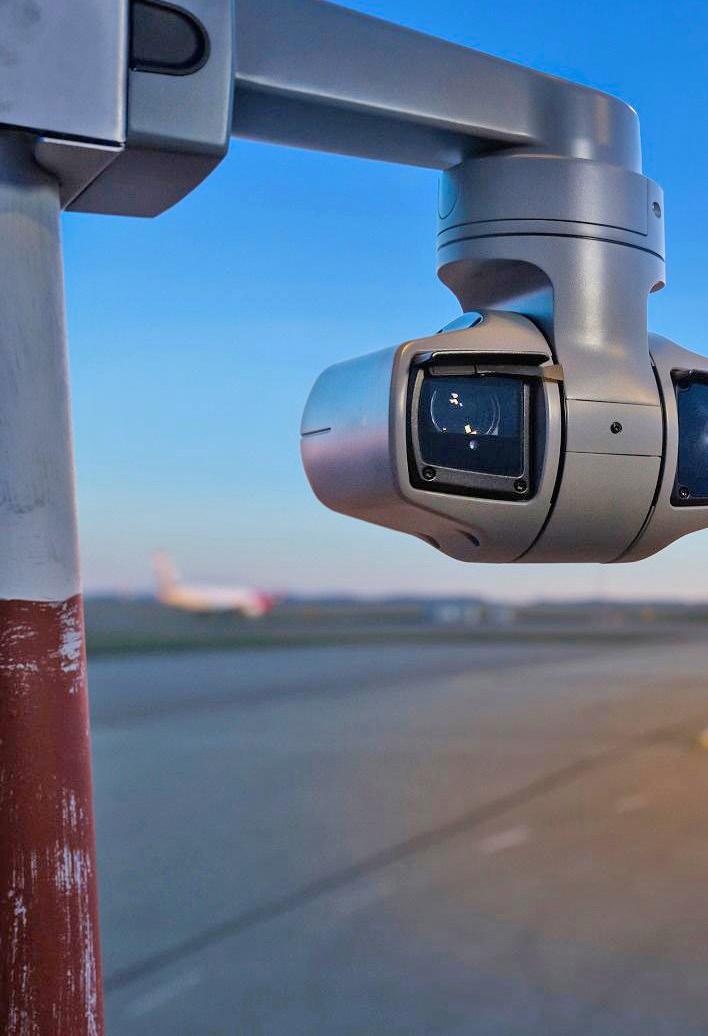

Protecting the perimeter remains a vital concern. Yet, what could once be considered a largely one-dimensional challenge has now significantly evolved. The ease with which drones can fly over high fences – and the determination of protesters to tunnel under them – has changed the game.
With an estimated million drones entering the world's airspace each month, drone detection has become a hot topic in the discussion around perimeter protection. And it’s not as straight forward as simply treating any small device in the vicinity of an airport as hostile.
As recent events at London Gatwick have demonstrated, it’s important to know why a drone is operating in the vicinity of the airport, to be able to trace where it’s going and to ensure that its purpose is legal and co-ordinated. It’s perfectly possible for a drone to be outside of the five kilometres no fly-zone commonly in place around an airport. But if it’s approaching at speed and on a trajectory towards a runway then it needs to be on the proverbial radar.
Many organisations are now asking how they can effectively protect their perimeter and prevent breaches. The answer is to deploy a unified security system and then incorporate new technologies as part of a more comprehensive perimeter strategy.
Good perimeter security requires a layered approach
Conceptually, it is easy to think that a facility has a single perimeter that must be secured. Traditionally, securing the perimeter meant deploying
a security system that would be triggered when a person or entity touched the fence line.
This approach oversimplifies the reality of today’s perimeters as most facilities now have multiple, overlapping perimeters, each with its own rights of access, risk profile, and operational requirements.
As a result, an organisation cannot rely exclusively on any one sensor or analytic to detect intrusion. They need a layered approach to perimeter security that ensures that all is not lost should one method fail. A layered security installation employs a combination of sensor technologies to create more than one active line of defence.
Recent innovations in security technology allow security personnel to redefine perimeter security by giving them the ability to look beyond the fence line and get more specific about what they should be monitoring and how.
These innovations make it possible for organisations to detect potential unauthorised intrusions beyond the perimeter by implementing a multi-layered approach that involves a variety of technologies, including heatmaps, intrusion detection sensors like radars, LiDARs, lasers, and fence sensors as well as video analytics cameras, access control and other standalone systems.
When an organisation does not unify its security systems and technologies on a single platform, and instead relies on vendor integration, it can create gaps in information or an incomplete view of the perimeter. To ensure that these systems do not work in unconnected siloes, it’s important to put in place a unified approach to cross qualify incidents and alerts.
A unified physical security platform helps connect the dots between the data collected by these different systems to provide the situational awareness necessary to keep facilities and people safe.
By presenting all breach information, threats, and potential intrusions together, a unified system enables operators to make critical decisions quickly. This enables organisations to deploy high-resolution cameras to capture clear, long-range images to complement perimeter detection.
The system can be configured in such a way that the first line of perimeter detection at the fence prompts alerts that will trigger these cameras to automatically pan-tilt-zoom into target areas for visual identification. The video surveillance footage will then be sent directly to the security monitoring centre or the security director’s smart phone for immediate verification and response.
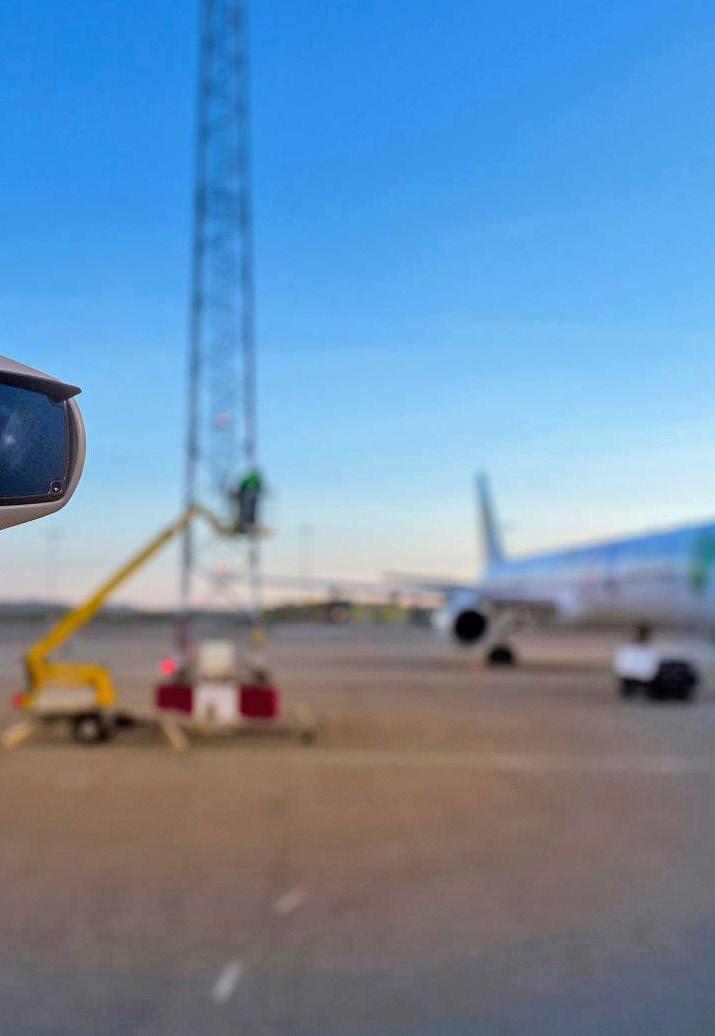
Managing these devices and alarms directly from an integrated mapping system can further help operators quickly pinpoint other pertinent devices nearby to get a broader view of the situation. By combining perimeter detection, area intrusion, high-resolution cameras, and location mapping tools within a unified platform, an organisation can improve response times and minimise the risk of breaches going undetected.
The early identification of potential threats at the perimeter gives security operators time to prepare a response and take any necessary action. By proactively extending security using LiDAR technology and seismic sensors, security personnel can monitor movements and watch for potential intrusions outside the fence line.
But knowing that something is about to breach a secure perimeter doesn’t tell you whether a threat is real or how serious it is. Sensors could be detecting wildlife, a person, or a car. The ability to see who or what is approaching a perimeter helps security personnel make the right decisions about threat levels as well as what actions need to be taken.
Assessing an incident at a fence or other restricted area is made easier when security personnel have eyes on the scene. By classifying threats visually and pulling relevant data from multiple systems, security personnel can identify if an intrusion requires immediate action.
Using filtering features, security teams can also filter objects (humans vs. animals for instance) in different zones to reduce nuisance alarms.
Physical Identity and Access Management Systems (PIAMS) add another layer to the process by connecting access control to business systems, including human resource directories. This interconnectivity allows organisations to automatically assign or remove access to restricted areas based on corporate policies.
As employees leave or change roles within an organisation, their access to sensitive areas can be adjusted to reflect changes in the HR directory or other linked systems.
As organisations deploy more and more sensors at the perimeter, they increase the amount of information coming in. This can become overwhelming for security personnel, especially when they must actively monitor all the input from these sensors to identify specific threats.
A unified security system that supports greater automation can help. Automated alerts, alongside digitised standard operating procedures (SOPs) that guide personnel step-by-step on how to respond to events, can help ensure that possible threats are identified, investigated, and resolved in a timely and consistent manner across different shift patterns and individuals.
The ability to fuse event data is also important for ensuring perimeter security. Operators must understand events as they occur in order to make informed decisions based on threat levels.
A unified security system provides greater situational awareness for operators by fusing together reports and alerts from all modules currently running on the platform. This is critical as it allows an emerging situation to be seen from all parts of the system as a single event rather than a series of separate incidents.
When it comes to protecting the perimeter, you need to adopt an intelligent, layered approach that will allow you to extend security beyond the fence line. By selecting a unified system that can incorporate a wide variety of new technologies, you can better secure your facilities today and in the future.
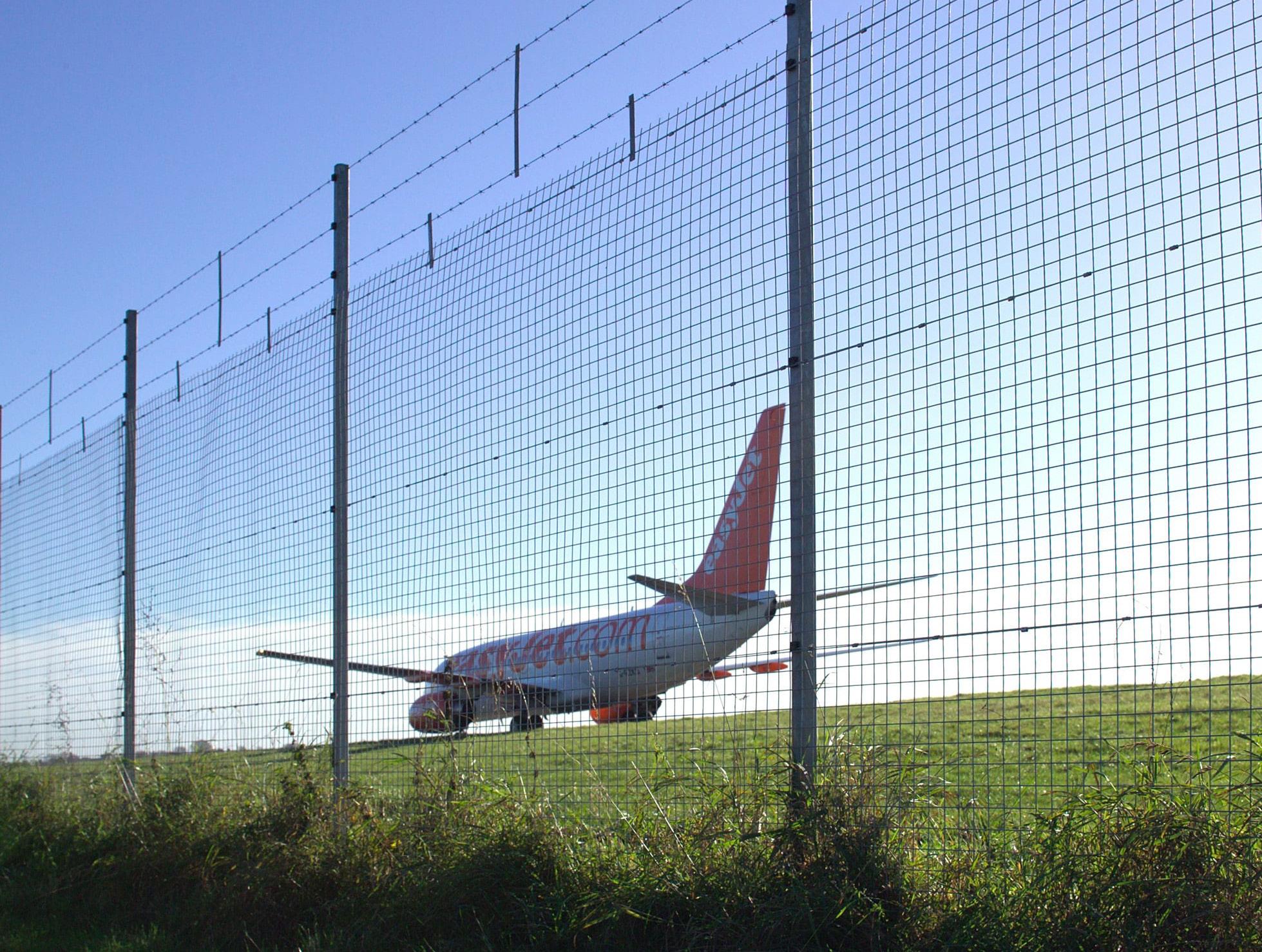
Jon Hill is an account executive for transport and public safety at Genetec.
Philadelphia International Airport continues to embrace biometric technology to enhance security and ensure the quick and easy facilitation of its passengers, writes SITA Americas director, Kristin Lindsey.
With the return of international travel gathering pace, an ever-increasing number of US airports are adopting international outbound biometric boarding solutions to support the efforts of US Customs and Border Protection (CBP). Indeed, although no timescale has been agreed upon, CBP has a congressional mandate to deliver the biometric confirmation of all departing international passengers, so the need for US airports to embrace the technology within the next few years is clear. However, deciding how this will be done or what technology provider to partner with to implement US Exit is about more than just meeting the CBP ambition. It is about taking the first step in bringing the seamless travel journey to your airport customers: your airlines and your passengers.
PHL is Pennsylvania’s largest gateway and one of the largest economic engines in the region, generating $16.8 billion for the economy and accounting for 106,000 full-time jobs annually.
Serving one of the US’s biggest metropolitan areas, PHL welcomed more than 25 million passengers in 2022, with its current list of 27 airline customers including all the major domestic carriers and a rising number of international airlines, which between them connect Philadelphia to more than 120 destinations globally.
Most US airports were built more than 40 years ago, well before security-based screening was considered. As a result, they do not
tend to have an exit immigration process as in many other countries and now must be built into the passenger process.
Philadelphia International Airport was considering the adoption of an international outbound biometric boarding solution to support the US CBP in fulfilling its congressional mandate for biometric passenger confirmation on exit.
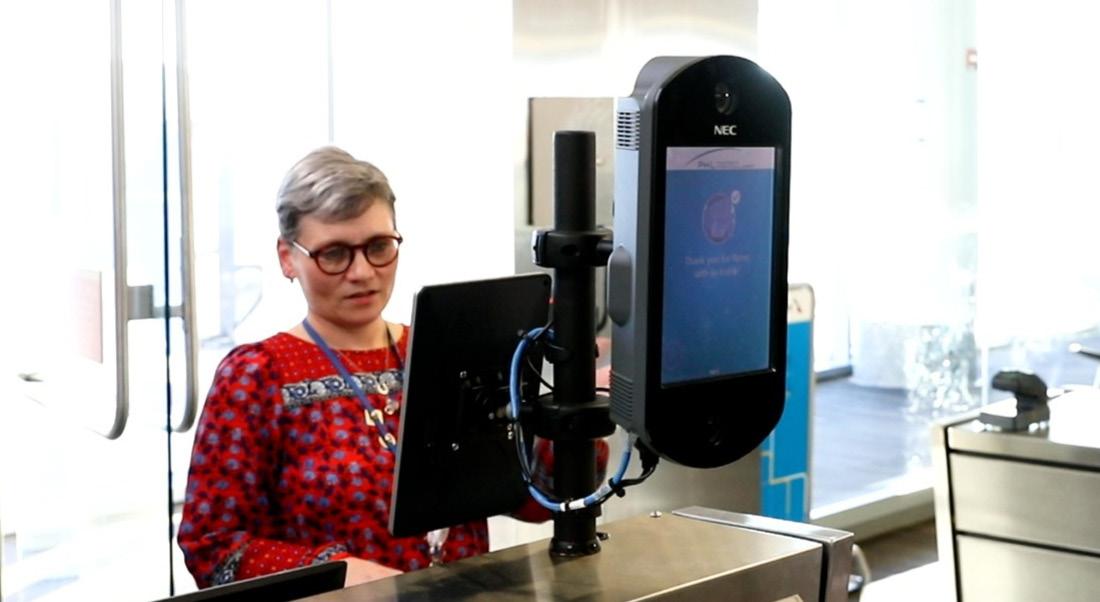
“We quickly realised that if we did not provide technology, then the CBP would be assigning staff to do so,” says Keith Brune, chief operating officer at the City of Philadelphia Department of Aviation.
“Collaborating with the CBP and discussing this project over the last few years, we felt the best solution was to use the latest biometric technology to automate the process and free up staff resources for other areas.
“We also discussed this with our airlines here in Philadelphia, and they agreed it was the best approach to help meet the mandate and improve the passenger experience.
“We knew that biometrics offered an efficient solution for US Exit. We began researching providers and looking for companies who could help guide us through the process and offer an integrated and collaborative approach from design to implementation and ongoing support.
“We needed to understand better how the technology and network connect to get the right information, how data is protected, and examine the security implications. These are the types of questions we wanted to explore.”
Allen Mehta, chief information officer at the City of Philadelphia Department of Aviation, notes that biometric technology is not just one piece of equipment but a consolidated integration of existing systems to ensure that everything works seamlessly.
PHL is installing facial biometric technology at 25 boarding gates in terminals A-East and A-West, with 10 gates already in place.
Using SITA’s Smart Path solution powered by the NEC I: Delight digital identity management platform, passengers in A-East and A-West step up to a camera at the boarding gate to verify their identity and board in a matter of seconds. This is all done without presenting a passport or boarding pass.
The system captures the passenger’s picture as they enter the biometric touchpoint and then sends the image to CBP for matching against existing images held within the CBP’s database. Once verified, passengers can board their aircraft.
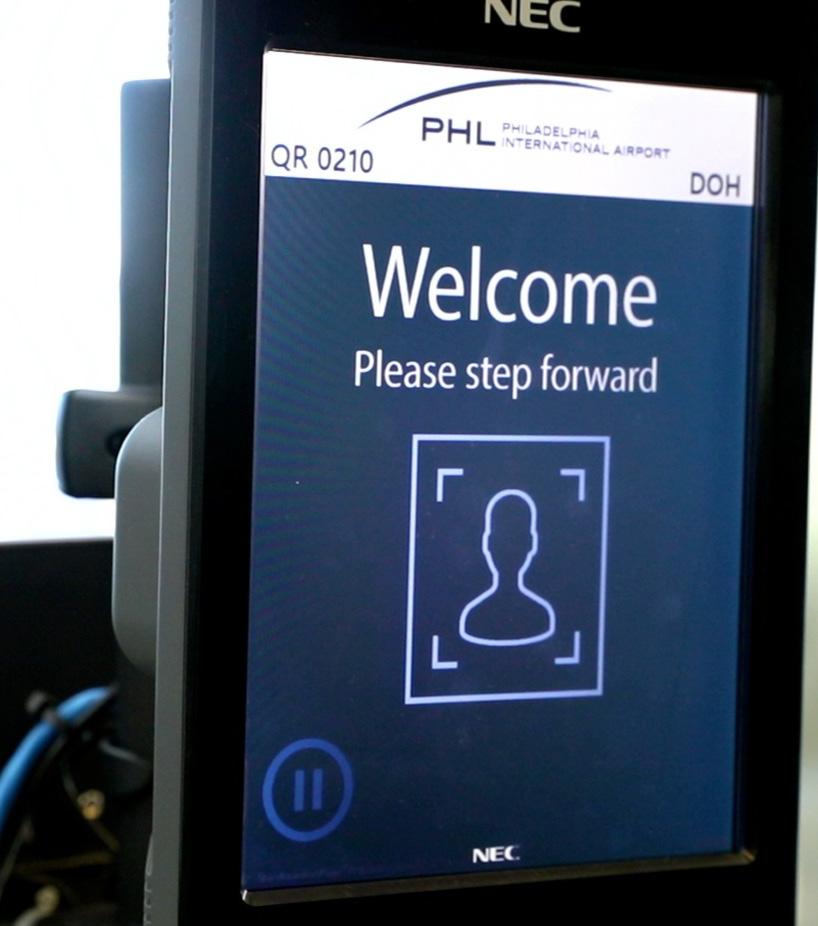
SITA and NEC were selected after a lengthy trial period. Mehta says: “Testing was crucial for us as we wanted to evaluate how passengers would react in the different scenarios. We wanted to see what type of challenges passengers may face.
“For example, one of the airlines we have typically has many passengers in wheelchairs, so understanding how the systems cope with things like distance from the cameras and varying light environments was essential. The CBP also had its set of standards, and we wanted to ensure that each vendor in our prototyping models could meet those requirements.”
SITA and NEC’s Smart Path biometrics deployment overcame these hurdles in testing, and PHL was impressed by the fluidity of the integration.
Mehta says: “SITA and NEC had the experience and the ability to integrate into the common-use systems we already operate at the airport which helped streamline the implementation.
“We’ll continue to test and refine, but everything is going very well with the first 10 deployments we’ve done.”
To date, PHL has had a very high number of passengers using the biometric solution. “Passengers see real value in the solution,” says Brune.
“SITA is our partner for our common-use systems and ensuring that end-to-end systems are integrated and optimised with the airlines’ internal systems is the focus for the year. Easing the passenger journey and ensuring a smooth flow through the airport are key.”
While the airport has no immediate plans to implement biometrics beyond the US Exit, it sees long-term benefits.
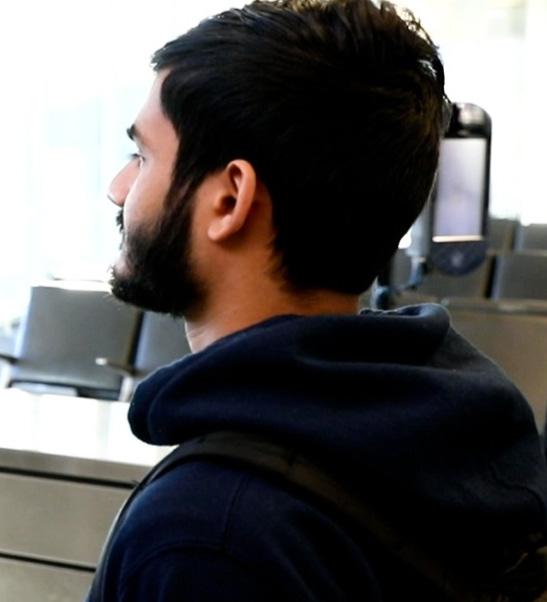
“This is not a decision we would take on our own. To evolve our use of biometrics throughout the airport, collaboration is key and ensuring all stakeholders share a common goal to improve passenger satisfaction and make it as seamless as possible for them,” says Brune.
“In co-ordination with the TSA, we’re now discussing how a complete biometric walkthrough from kerb to gate would work, including baggage, check-in, and through security, which is exciting. We see a lot of other potential opportunities for biometrics.”
Brune says domestic flights could also benefit from the same efficiency gains enabled by SITA Smart Path, making those journeys more streamlined.
He notes: “People are more accustomed to biometrics today than even a few years ago, with the proliferation of biometrics on smartphones for day-to-day use, and they see the benefits of speed and simplicity.”
Currently, the US has 238 airports using biometric facial comparison technology in the air entry environment, including all 14 CBP Preclearance locations, and 44 locations for air exit (international departures).
The CBP says that new air exit airport partners are coming onboard each month and notes that the traveller response has been “overwhelmingly positive”.
The agency notes: “CBP is leading the transformation of the travel experience through biometric facial comparison technology, but we could never do this alone. Our airline industry and technology partners play a critical role.”
Airports Council International

Transforming the Future of Aviation Ecosystem
Springboard for Thought-Leaders & Innovators

Insights from Industry Leaders & Experts
All-in-One Innovative Business Solutions

Make Connections and Expand Your Network






























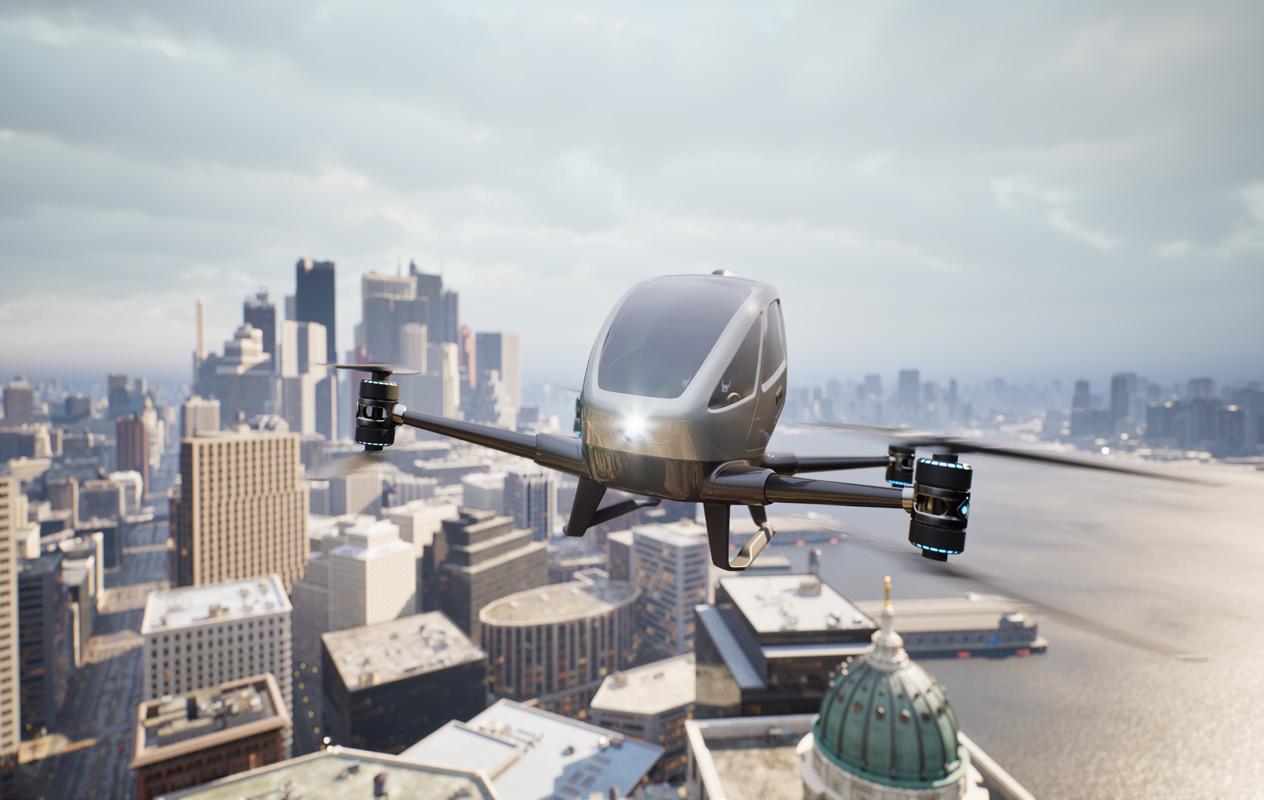









Joe Bates looks back at some of the highlights from June's eventful ACI EUROPE/ACI WORLD Annual Assembly, Conference and Exhibition in Barcelona.
Arecord 850 delegates, a number of key announcements, the chance to reunite with colleagues and, of course, two days of lively debate in the beautiful city of Barcelona ensured that this year's joint ACI EUROPE/ACI WORLD Annual General Assembly, Conference and Exhibition will live long in the memory.
The heat may have been challenging for those of us not used to such warm and humid conditions, but with hot topics such as sustainability, the staff recruitment challenges facing airports and investing in airports on the agenda, as well as more than 140 exhibitors to visit, there were simply no excuses not to be at the Palau de Congressos de Barcelona on June 26-28.
A 'Forum of Innovation' hosted by the International Airport Professionals Community of Practice, a 'Disabled Aircraft Removal' workshop, ACI World's Annual General Assembly, the Annual Meeting of ACI World Business Partners, and Welcome Reception in the Exhibition Hall preceded the official start of the event, which began on June 27 with addresses from Aena chairman and CEO, Maurici Lucena Betriu, and Maria José Rallo, Spain's General Secretary for Transport and Mobility in the Ministry of Transport, Mobility & Urban Agenda.
Betriu noted that the end of the global pandemic meant that the aviation industry now faced a series of more 'normal challenges', such as economic slowdown, staff recruitment, industrial action and the need to ensure the sustainable development of the entire eco-system.
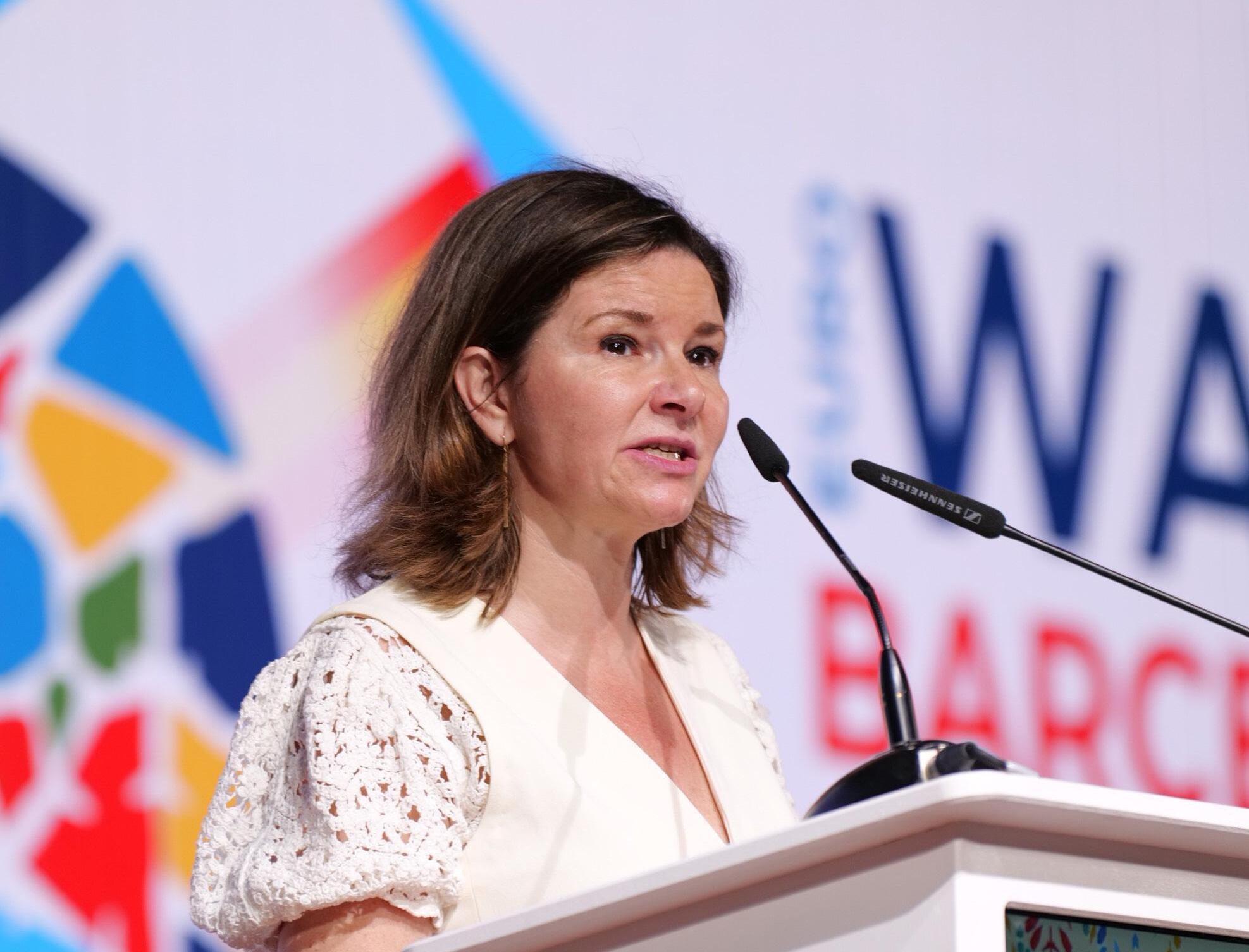
Talking about the latter issue, he noted: "Aviation has to decarbonise its activities within the next 30 years. There is now an industry wide commitment to achieve this goal, and in the case of Aena, aside from being one of our top priorities, we are determined to achieve net zero emissions by 2040 at the latest.
"[From a global perspective], it is important the airport industry helps the airlines, aircraft manufacturers such as Airbus and Boeing and other actors to accelerate the decarbonisation of the industry as public opinion will not discriminate between airports and airlines if we fail to meet our targets, especially as airports will need to build their capacity to meet demand as people will fly more in the future, not less."
It was then straight down to business with keynote addresses from ACI EUROPE's director general, Olivier Jankovec, and ACI World's director general, Luis Felipe de Oliveira.
Jankovec opened by stating that he felt that Europe's airports were finally "transitioning from recovery to a kind of new normal" based on rising passenger numbers and improved financials.
He revealed that traffic volumes doubled across Europe in 2022, with 27% of airports matching or bettering their pre-pandemic passenger volumes as the continent's airports welcomed a total of two million passengers. And although the total was still 21% below 2019, after more than €50 billion in lost revenues and over €20 billion in accumulated losses since 2019, Europe’s airports were back in the black last year – posting a net profit of €6.4 billion.
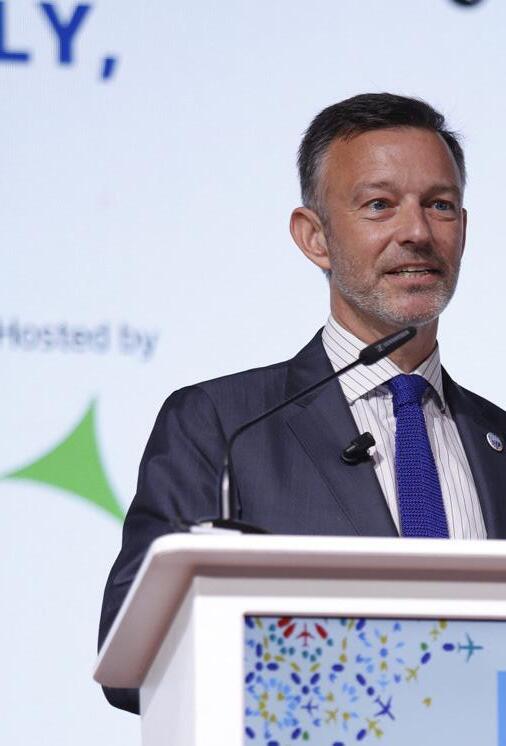
The return to profitability, he said, was primarily driven by airports delivering cost efficiencies despite unprecedented inflationary pressures and significantly slashing investments – with capital expenditure decreasing by €5.5 billion.
Another key contributing factor was airports working with their business partners to seize the momentum in consumer spending to increase their non-aeronautical revenues, in particular from retail, and food and beverage activities.
He described this year's traffic levels as "so far, so good" as passenger numbers are now very close to pre-pandemic volumes, although the rate of recovery differed greatly across Europe, with the heavily tourism dependent markets of Cyprus, Croatia, Greece Portugal and Spain doing best of all.
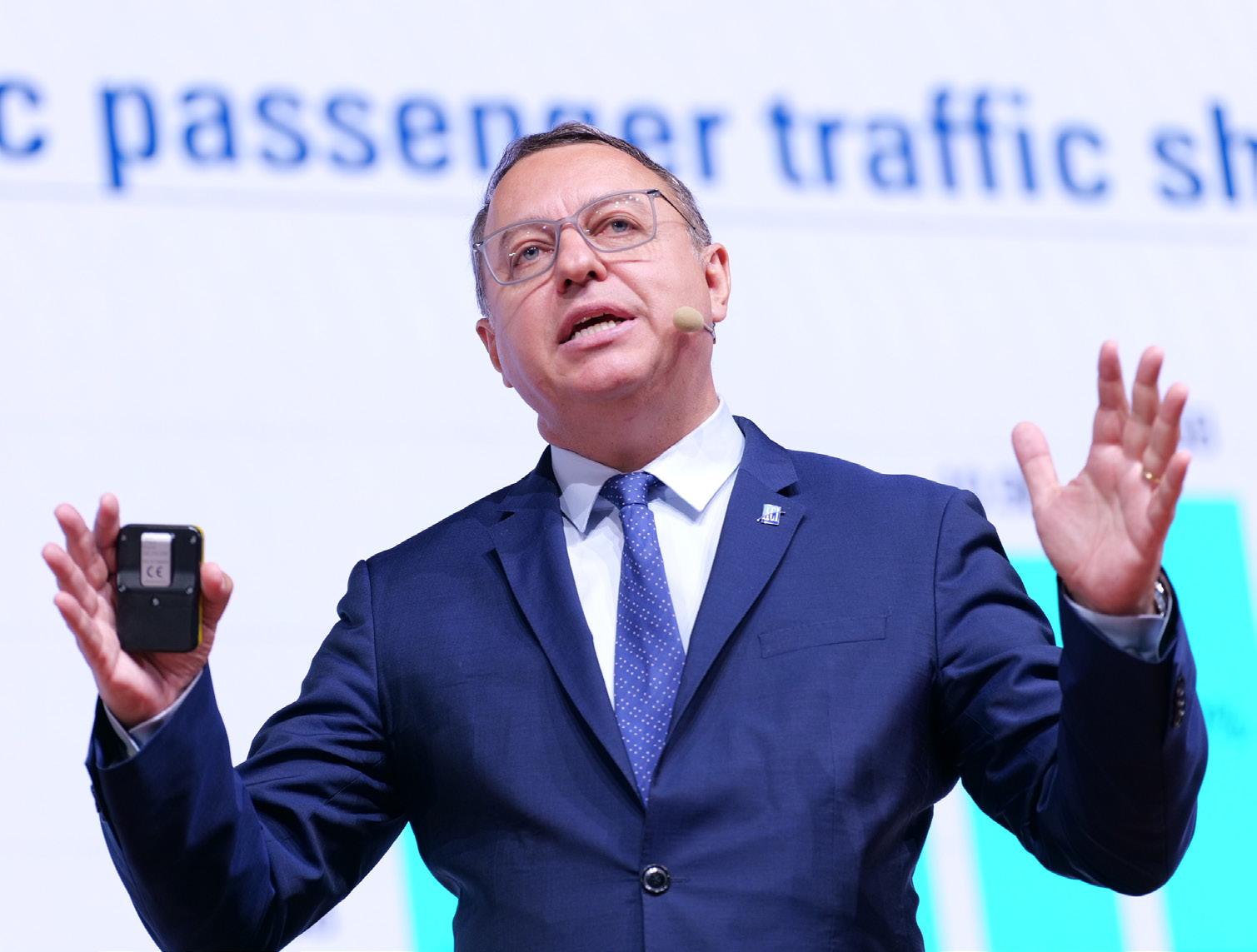
Adding a note of caution, Jankovec said that looking ahead, the financial situation of Europe’s airports remains uncertain and challenging due to the combination of both structural cost increases and structural revenue pressures, such as debt and liabilities that remain a colossal €43 billion above pre-pandemic levels.
Looking to the future, Jankovec said airports faced two big challenges decarbonisation and the need to reset the airport business model to "build in resilience" and cope with the economic and operational realities of the European aviation market, characterised by the expansion from ultra-Low Cost Carriers along with the relative retrenchment and consolidation of full service carriers.
"It is very clear in Europe that decarbonisation is no longer about our securing our license to grow, but increasingly about keeping our licence to operate," said Jankovec.
He concluded his address by outlining the evolution of the airport business model towards a new value creation model based on three pillars – sustainability, innovation and diversification.

And he suggested that ongoing moves to decarbonise entire economies across Europe offered airports the opportunity to evolve from transport centres to ENERports by acting as energy hubs, providing green energy not just to the airport but to the wider community as well.
"We have the opportunity to redefine and enlarge the societal role and relevance of airports," said Jankovec. “The local value of an airport has long been part and parcel of our nations and regions. Now, we need to take this to the next level with the generation and supply of green energy for aviation and our surrounding communities alike.”
In his state-of-the-industry address, ACI World's de Oliveira noted that events of the last few years meant that this was very much a time of adaption and change to the new realities for the industry and that airports, through action and innovation, remain "core leaders" of change.
Reflecting on current traffic trends, he said that the latest ACI World data shows that 6.8 billion passengers used the world's airports in 2022 and that this number was expected to soar to 8.4 billion this year, to reach 92% of pre-pandemic levels, with Europe enjoying the greatest increase, driven by a strong summer.
Latin America-Caribbean, he noted, was the hardest hit region at the start of the pandemic but a rapid recovery last year saw passenger traffic reach 92.7% of pre-COVID levels. North America, fuelled by a strong domestic market, is expected to end 2023 just 1.3% down on 2019. He predicted that the recent lifting of travel restrictions in China would signal a better year for the Asia-Pacific region, with passenger traffic anticipated to exceed 2.9 billion in 2023 to reach 85% of pre-pandemic levels. While Africa is on target to handle 220 million passengers this year, just 3% less than it did 2019.
"Our data clearly reflects a strong recovery all over the world, and although some regions are doing a little better than others, all are doing well," de Oliveira told delegates, remarking that it was good to see the likes of Dubai International (DXB), London Heathrow (LHR) and Paris Charles De Gaulle (CDG) back among the Top 10 busiest passenger airports in the world in 2022.
The international share of the global market was also bouncing back, he said, accounting for around 38% of all passengers today as opposed to 42% before the pandemic. However, full recovery isn't expected until 2025. Domestic traffic is anticipated to fully recover a year earlier, although globally, in May/June 2023, numbers were on a par with the corresponding months in 2019.
Looking further ahead, de Oliveira told delegates that although things were looking much better today and the industry was starting to grow again, he urged airports to remain vigilant as they still faced a lot of headwinds going forward.
On a positive note, he said the desire to travel, especially on holiday, was as strong as ever following the end of global travel restrictions. He also cited the decline in F&B and energy prices as well as the re-opening of China, the second biggest aviation market in the world after the US, as good for the industry that put it back on the path of growth.
Outlining the importance of the aviation industry to the global economy, de Oliveira reminded us that prior to the pandemic, the aviation industry was responsible for around 87.7 million jobs and $3.5 trillion in global GDP, which if you include the tourism sector, accounts for 10.4% of global GDP.
The ACI World director general also used his time on the podium to reaffirm the airport industry's commitment to sustainable development, pointing out that over 500 gateways across the globe had been acccredited in ACI's Airport Carbon Accreditation programme and that airports were fully behind aviation's Net Zero by 2050 target.
With global passenger numbers expected to hit 9.6 billion in 2024 and double to 19.3 billon by 2042, de Oliveira said that growth was overwhelmingly on the agenda, and that this would bring with it some huge investment challenges for the world's airports, which will have to invest a total of $2.4 trillion on enhancing their facilities by 2040 if the industry is to meet future demand and its ambitious sustainability targets.

He noted that different parts of the world will experience different patterns of growth and that much work would be needed to help the underdeveloped markets reach their potential.
De Oliveira stated that later in the day, ACI World and the World Economic Forum would launch the Airports of Tomorrow initiative aimed at accelerating the decarbonisation of the aviation industry by helping airports transform from passenger hubs into energy hubs.

It is believed that it will bring public and private stakeholders together to drive unprecedented collaboration and change in the sector, maximising the potential for airports to be vehicles for economic growth and environmental stewardship.
The initiative is built on four pillars – Infrastructure, Sustainable Aviation Fuel (SAF), Finance, and Innovation – that will see the exchange of expertise from different sectors and ultimately pave the way for the scheme's objectives.
Ending on the digital transformation of the world's airports, de Oliveira noted that airports continue to invest in new IT, spending
$6.8 billion on technology in 2022 to enhance their operations and streamline the passenger journey through more self-service options.
Business intelligence solutions – data – is also at the forefront of airport IT investment priorities and ACI World has prioritised this area, said de Oliveira, briefly mentioning the launch of ACI's AirportShare initiative, which colleague Thomas Romig, ACI World's vice president for safety, security and operation, later explained more about in his presentation.
"We can double the size of the industry, but we cannot double the size of our facilities or employees, so we need the help of technology," predicted de Oliveira.
Up next was a session called 'The President's Political Playbooks' which gauged the thoughts of Sheikh Aimen bin Ahmed Al Hosni, CEO of Oman Airports and ACI World chair, and Javier Marín, executive vice president of Aena and president of ACI EUROPE.
Talking about slots, Marín reiterated ACI EUROPE's call for urgent reform of the EU Airport Slot regulation – a legislative tool that he insisted was now 30 years old and relevant to a market which simply no longer exists.
ACI EUROPE believes that future-proofing the single aviation market must have, as its first step, a reform of this regulation to protect its integrity and well-functioning – considering that Europe accounts for over half of the world’s most congested airports.
"Slot regulation is a very important issue for Europe as we are forced to comply with regulation on how our slots are used even though we don't have enough capacity," explained Marín. "Giving airports more say on how slots are used will enable them to make better use of their capacity, which will create more competition and routes for passengers."
Al Hosni agreed with Marín that it was time to revise the regulation around slot agreements as it would allow airports to make maxmum use of their facilities and better serve passengers.
The sustainable growth of the aviation industry, including decarbonisation and the need to commercialise the global development
and sale of SAF was then addressed in a speech by ICAO Council president, Salvatore Sciacchitano.
The much awaited 'Airport Leaders Symposium' followed, and with a panel made up of high-profile airport leaders John Holland-Kaye, CEO of London Heathrow (LHR); Kadri Samsunlu, CEO of Istanbul Grand Airport (IST); Candace McGraw, CEO of Cincinnati/Northern Kentucky International Airport (CVG); Alex Gitari, managing director and CEO of Kenya Airports Authority (KAA); Aletta von Massenbach, CEO of Berlin Brandenburg Airport (BER); and Mónika Infante, CEO of Aeropuertos Dominicanos Siglo XXI (Aerodom), it didn't disappoint.
IST's Samsunlu got the session underway, telling delegates that his airport continues to do well with a growing route network and passenger numbers above 2019 levels since June, 2022, although he suggested that he should perhaps be uncomfortable about the fact that IST's growth was primarily being driven by Turkish Airlines.
"One big player is dominant, which is why we need to diversify, and increase our connectivity further through the addition other airlines and low-cost carriers such as Wizz Air, which launched services to Istanbul this year," said Sumsunlu.
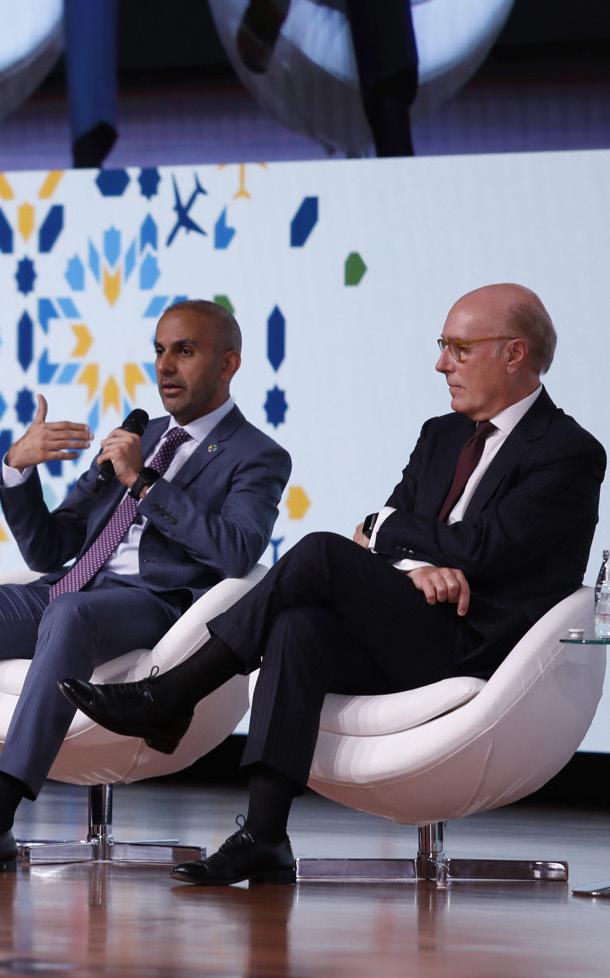
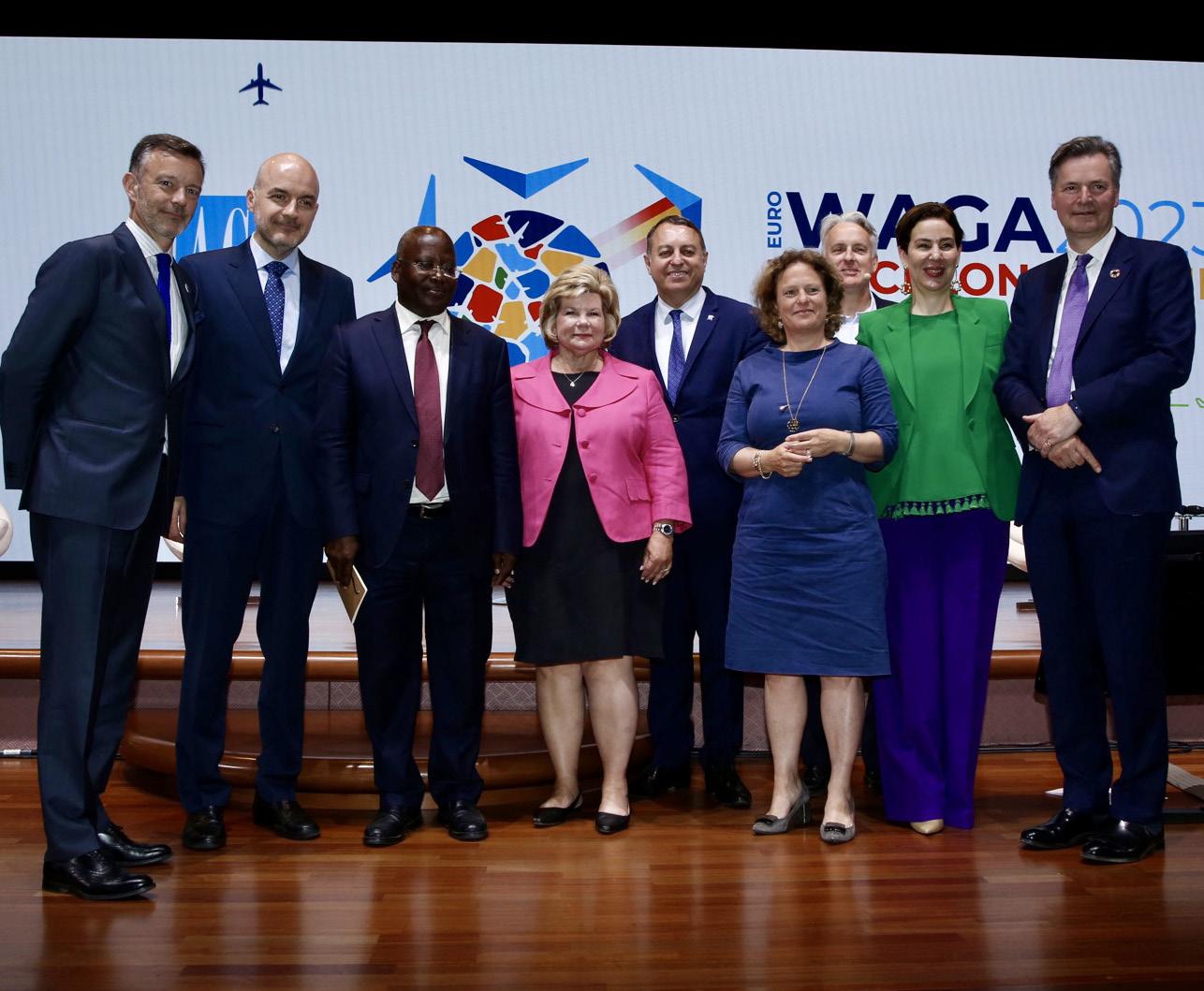
Aerodom's Infante revealed that the Dominican Republic is currently experiencing a tourism boom, welcoming more tourists in 2022 than in Argentina, Brazil and Mexico combined. Aerodom's six airports were busy, but like elsewhere in the world, its biggest gateways experienced disruption last summer due to the delays caused by the late arrival of inbound flights from Europe as a result of staff shortages.
"Around 40% of the flights to our main airport [Santo Domingo] experienced delays last summer, but we have learned from it, and are prepared for this summer. We have extended our parking platform by 30% and are ready for a good summer," enthused Infante.
In response to whether they still enjoyed being an airport CEO after leading their respective gateways through COVID and now all the difficulities associated with aviation's recovery from the pandemic, BER's von Massenbach said: "It is a wonderful industry and we have wonderful jobs, and when it becomes a bit challenging, it might even become a bit more interesting, although we wouldn't want to go through last summer again."
To avoid a repeat, she revealed that BER started planning for summer 2023 in September 2022, and after close liaison with the airlines, ATC and other bodies is confident that this year will be more stable, reliable and enjoyable for passengers.
Heathrow's always engaging Holland-Kaye revealed that the UK hub recently faced the "huge challenge" of having to recruit 25,000 staff across the entire campus in just 18 months as a result of job losses during the global pandemic. He also stated that LHR's decision to limit its number of departing passengers to 100,000 a day last summer while it was understaffed was ultimately the right decision to ensure the least disruption to passengers, and felt that 'capping' numbers might be an option that other airports could follow if they found themselves in similar circumstances.
Talking about rising costs for airports, CVG's McGraw said the US gateway took the unprecedented step of electing to give its workforce a 13% pay rise in July 2022 and another 7% pay rise in January 2023 to ensure that it held on to staff. "It is a tremendous increase, but in my opinion, well worth it, as we have a lot of very good skilled people that we needed to retain and a lot of people we needed to recruit," she said.
On the question of sustainability, Samsunlu stated that IST's strategy for the next five years involved the 'electrification' of all ground support vehicles; increasing the operational efficiency of the runways; and producing its own green energy to ensure that the Turkish hub is 100% self sufficient and eco-friendly.
Gitari noted that KAA had the aspiration to become "the greenest airport operator in Africa" primarily through solar panel installations and carbon off-set programmes. Its sustainability goals appear to align with Kenya Airways, which recently operated its first SAF flight.
LHR's Holland-Kaye praised ACI and ICAO for the leadership they have shown in the global adoption of a common goal of net zero carbon emissions for aviation by 2050, an undertaking he believes effectively provides the industry with a mandate to work out how it's going to get there.
"What's happening is impressive, and at the same time a bit daunting, because what we have to do on the ground to deal with the energy transition is huge," said the Heathrow boss. "One of the big questions is how are are we [the industry] going to pay for it as we scale up? The answer has to be that it is paid for by the wealthy ones, in particular the big corporates, especially when it comes to funding the start-up of SAF, which will make up 30% of all aviation fuel by 2030."
The second heavyweight panel of the morning was entitled 'Can the Industry Really Work Together?' and featured Nicolas Notebaert (CEO of VINCI Conncessions and president of VINCI Airports); David Pekoske (TSA Administrator); Filip Cornelis (director of aviation, DG MOVE, European Commission); Simon Hocquard (director general, CANSO); André Alves (network planning director, Iberia); and Janis Balkens (dnata's regional CEO for airport operations, new and emerging markets).
Addressing the data sharing challenge faced by the industry, CANSO's Hocquard commented: "This industry is appalling at sharing data and/or information. There are some exceptions, but broadly speaking, all the actors in the aviation system like their own information/data, and there is a perceived commerical value to keeping hold of it, so little gets shared.
"Collaboration will make the biggest difference to the entire aviation industry. In my opinion, all data/information should be freely available, as it's what you do with that data and what you do with that information that creates value. If we all had the same information, just imagine how much better and more efficient our entire system could be?"
A highly eventful first morning ended with a presentation from Kyiv Boryspil Airport CEO, Oleksiy Dubrevskyy, who returned a year on from ACI EUROPE's last annual conference in Rome to update delegates on how Ukraine was faring 18 months on from the Russian invasion.
The afternoon sessions began with panelists Jonas Abrahamsson (CEO, Swedavia); Sean Donohue (CEO, Dallas/Fort Worth International Airport); Haldane Dodd (executive director, ATAG); Alex Kueper (vice
president EMEA, Neste) and Frédéric Eychenne (senior director regulations & policies, Airbus) addressing the topic of 'Not if But When? Decarbonisation: The Global Timeline’.
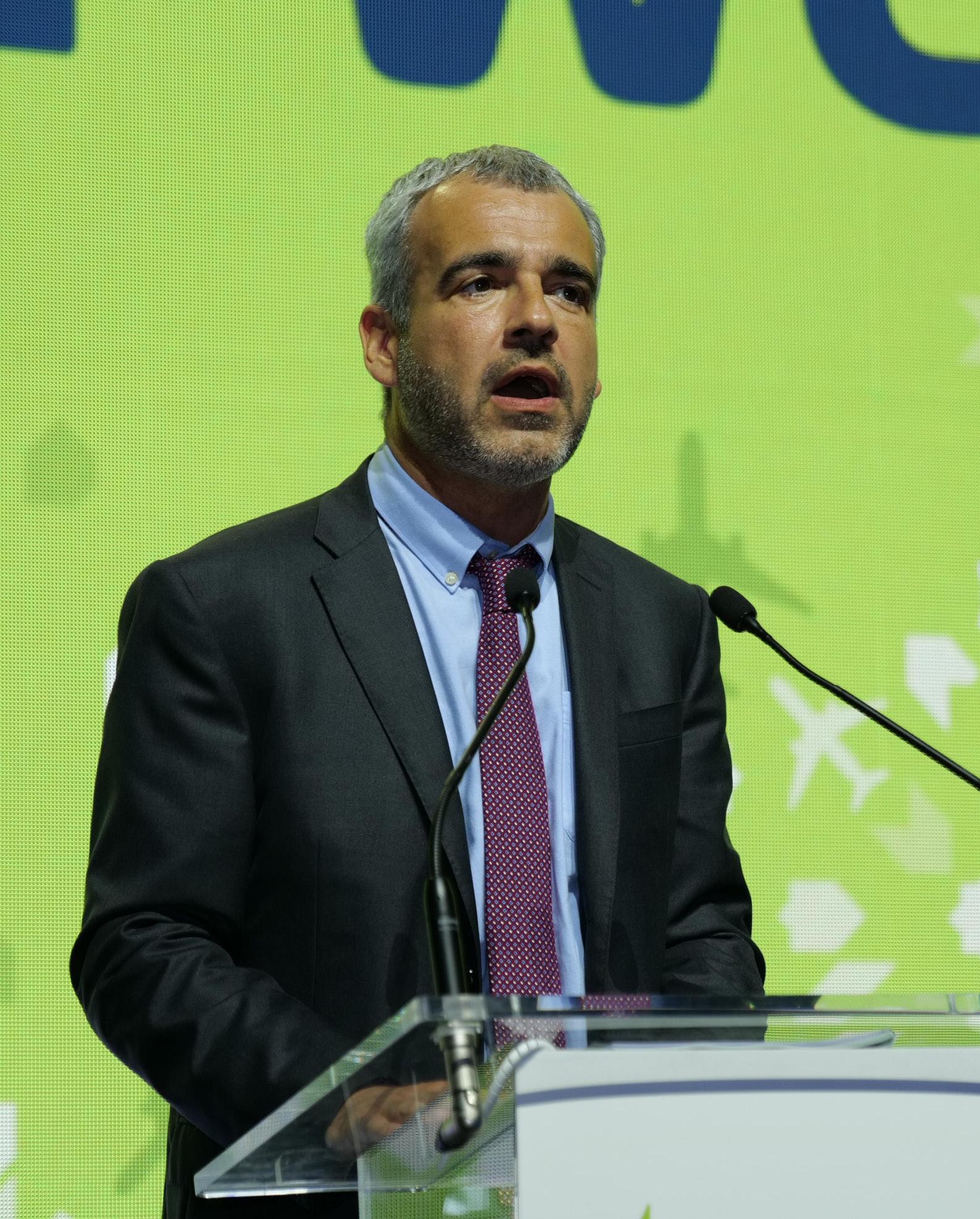
A series of quick fire sessions followed, starting with a presentation from the World Economic Forum's industry decarbonisation lead for aviation, Laia Barbara, about its new initiative with ACI World, Airports of Tomorrow, which is aimed at accelerating the decarbonisation of the aviation industry.
ACI World and Amadeus then revealed the winners of their annual Innovation Technology Awards. The prize for 'Best innovation in airport passenger related processes' was awarded to Incheon Airport for the creation of the Incheon Airport XR Metaverse; the award for 'Best innovation in airport operations and installations management' went to Hong Kong International Airport for its Digital Apron and Tower Management System; while the honour of being named the 'Best airport innovation leader (individual)', went to Miami International Airport's chief innovation officer, Maurice Jenkins.
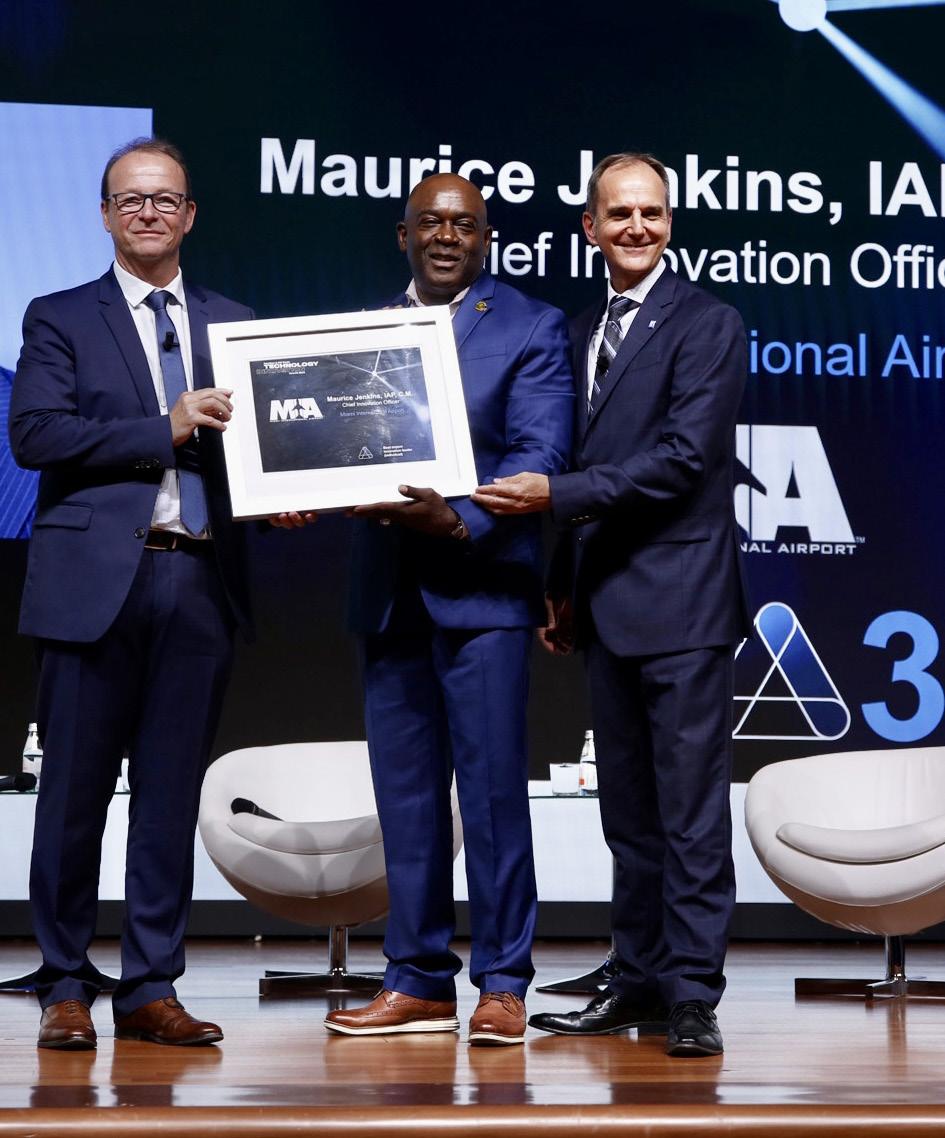
The first day of the conference concluded with a special address from EUROCONTROL director general, Raúl Medina Caballero; and a panel discussion about 'The Infrastructure Revolution: Airport Cities, Vertiports, Enerports' featuring Aena's managing director for airports, Elena Mayoral; Urban-Air Port Ltd's CEO, Andrea Wu; and SESAR 3 Joint Undertaking's executive director, Andreas Boschen; followed by ACI EUROPE's Annual General Assembly.
But the day's business at Euro WAGA 2023 certainly wasn't over as a Gala Diner followed at the National Art Musuem of Catalonia where both ACI World and ACI EUROPE presented a number of customer excellence and IT focused awards.
What turned out to be a really enjoyable Day 2 of the conference began with a keynote address by José Ramón Bauzá Días, MEP, and the Renew Europe Group's co-ordinator for the committee on transport and tourism, quickly followed by a panel session called 'CX Through the Lens of Sustainability'.
Not surprisingly, all the panelists in the 'CX Through the Lens of Sustainability' took customer service very seriously and believed in utilising the combination of dedicated staff and technology to put passengers' in greater control of their journeys and make travelling throught their airports easier and more efficient.
All were also very aware of the need to be seen to be green and of the importance of communicating their sustainability initiatives to passengers and the wider community.
Hermes Airports CEO, Eleni Kaloyirou, for one believed that 'sense of place' facilities and service was crucial to ensuring a good airport experience and that demonstrating good environmental credentials, such as phasing out the use of plastics, was of growing in importance.

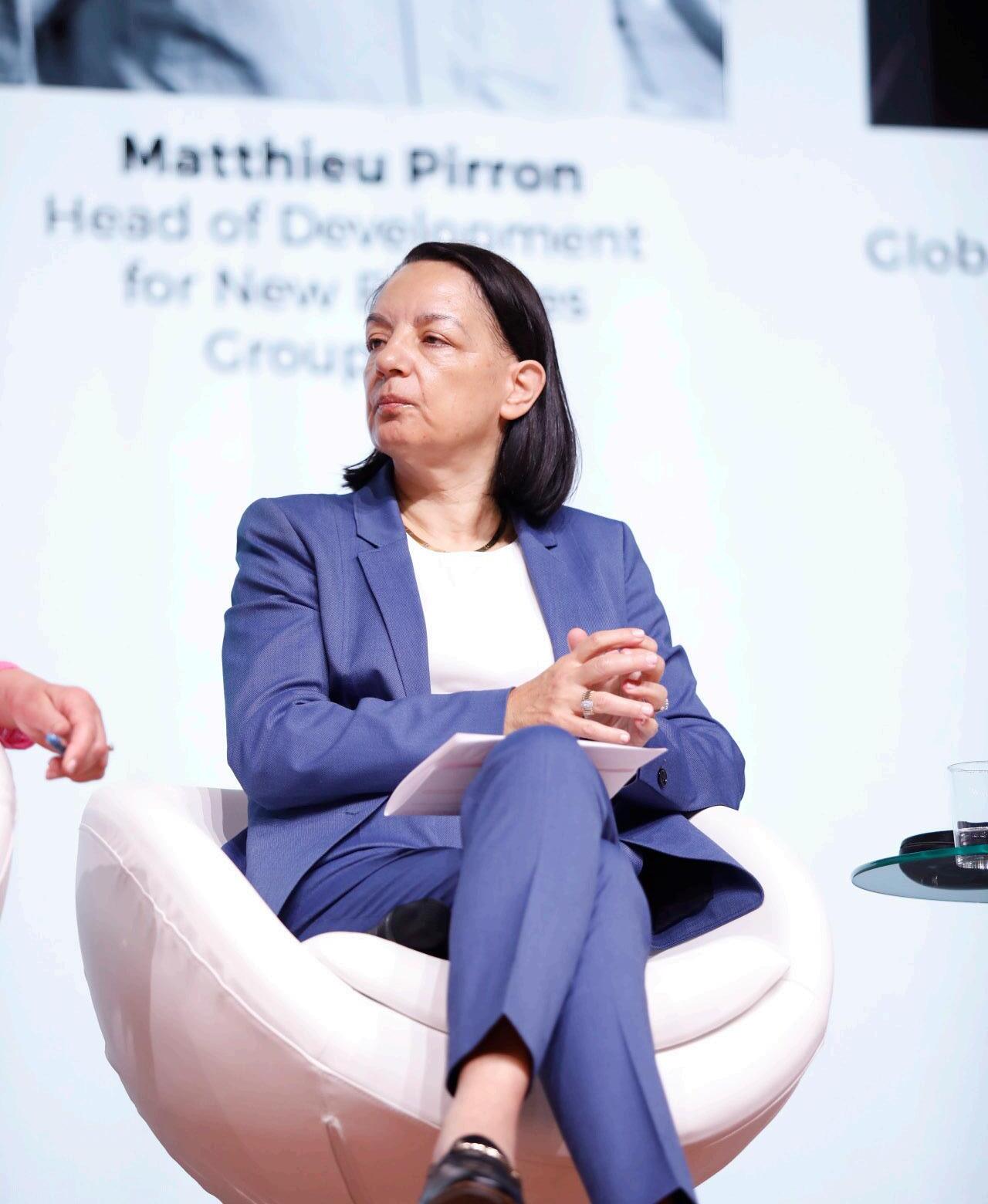
She said: "I think a lot of people decide whether to travel or not based on the idea that flying is a problem for the environment, so I believe it is important for airports to show that we are serious about our efforts to decarbonise the industry as that is our licence to grow, but at the same time we shouldn't lose sight of the social and economic impact we have on communities. Flying is not the enemy, carbon is."
Groupe ADP's head of development for new energies, Matthieu Pirron, who as an aside noted that it wasn't so long ago that airports considered their customers to be the airlines and not passengers, revealed that Groupe ADP promotes its sustainabity efforts through 'environmental' centres at CDG and Orly, which last year attracted 30,000 visitors, including many students.
In answer to whether passengers would be prepared to pay more for sustainability, Pirron said: "Expectations are high, for sure, and a survey has revealed that 80% of our passengers are aware of the challenges that we have, but they are not willing to pay more. In fact, 40% indicated that they might fly less in the future due to environmental concerns. So, to meet future expectations, all we can do is continue to do our best to spread the best in class environmental initiatives we have developed in Paris across our global airport network."
The other panellists during the session were Galapagos Ecological Airport's managing director, Jorge Rosillo, and NACO's global business development director, Inna Ratieva.
Oliver Wyman's partner for transportation and services, Rana Nawas, next gave a presentation on a new report called the Evolution of Airports, which looks at the potential future trends for airports in technology, passenger experience, intermodal connectivity, sustainable development and the evolving workforce.
Key findings of the report developed by Oliver Wyman in partnership with ACI World and the Sustainable Tourism Global Centre of Saudi Arabia, idenitified five megatrends that it believes will shape the development of airports over the coming decades – Technological Innovation; Intermodal Connectivity; Achieving Net Zero; The Changing Workforce; and The Passenger Experience. It also divided airports into four main types – The City Airport, The Global Hub, The Cargo Champion, and The Leisure Gateway.
The next session, 'Investing in Airports – The New Paradigm' included a panel of experts that included Ferrovial Airports' asset management director, Miguel Onaderra; Ontario Airports Investments Limited's co-head and managing director, David Stanton; Centerline Airline Partner's president and CEO, Andrew O'Brian; and Mundys' senior investment manager for airports, Alessio Montrella.
Arguably the most vocal among them were Stanton, who represents the Ontario Teachers' Pensions Plan – one of the largest pension plans in the world – and O'Brian, the latter, of course, the former CEO of Quito International Airport in Ecuador.
In answer to what he would be looking for from governments in terms of an investment opportunity, Stanton said: "We are a long-term investor and our two main airports that are regulated are Brussels and Copenhagen. What we're really looking for is something that is fair, transparent and balanced.
"You have to remember that we are investing for 20, 30 or 40 years, so what we would like is a more long-term discussion with
governments so that it reflects what we are aiming to achieve and what the airport is looking to achieve as we are undertaking huge capital development programmes. If everyone has clear objectives it should avoid governments making short-term political decisions about key infrastructure."
Reflecting on the market, O'Brian said that even though his company was only ten months old and still in the business development phase, it had already formed strategic alliances with a number of private equity firms, and in its interactions to date had experienced "a tremendous global appetite" from the market.
"In the two laps of the world that I've done in the last 10 months, stopping in many places and talking to many airport CEOs, executives, owners and investment firms, I've found that everyone is looking for one of two things," said O'Brian. "They're either looking for capital or how to access capital or how to structure financing for important bricks and mortar investment or maybe investment in other components of the business that we've been hearing about today, such as sustainability and how to set themselves up for that.
"On the other side, we're seeing airports all around the world, independent of the continent or country, looking for leadership, knowledge and experience on how do we do this going forward."
ACI World's vice president for safety, security and operation, Thomas Romig, then gave delegates a snapshot of what they can expect from ACI World's new data sharing initiative AirportShare, which seeks to revolutionise the sharing of data by airports to manage operations, improve customer experience and bolster revenues.
Romig said: "Some people say that data is one of the world's most valuable resources. For airports, it brings operational preparedness. It can be used for forecasting. It can increase operational efficiency, improve revenues and many more things.
The problem we have in our industry is that everybody has different types of data and there is no common data language, which makes connectivity a challenge.
"We want to make the connection between data points through Airport Community Recommended Information Services (ACRIS) which is, in essence, a common data language which is already used by multiple airports and technology providers across the industry."
Romig accepted that the technology needs to be deployed a bit further and that it was something that ACI World was still working on, but once it has done that, he said that the next step is to how to create connectivity between data consumers and data providers.
ACI World knows that the concept works as during the pandemic it successfully shared data from 300 airports with a number of big data consumers. They included Apple, which was pulling data about the health conditions at airports into its applications. It has now enlisted the help of Rockport Software to help it work out how it can best share data and what type of data it wants to share and connect multiple airports with different providers and data users.
In a breathless end to the morning delegates were then invited onto the stage to take part in a photo opportunity to mark a major milestone for ACI's Airport Carbon Accreditation programme – the news that over 500 airports worldwide now use the scheme to help reduce, offset or eliminate their CO2 emissions altogether.
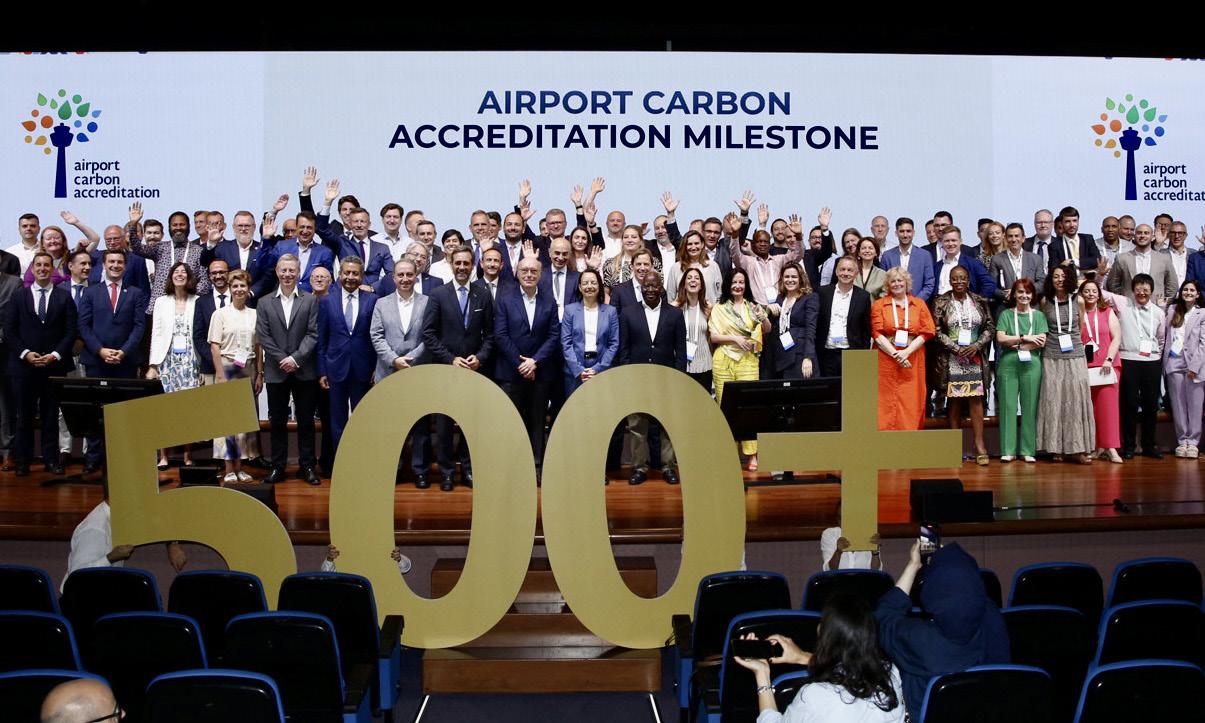
The familiar face of former ACI World director general, Angela Gittens, was in the moderator's chair for the final session of WAGA 2023, a human resources focused discussion about 'Future-Proofing the Global Workforce'. Her panelists comprised Max Heinemann, co-CEO and owner of travel retailer, Gebr Heinemann; Munich Airport CEO and chairman of the management board, Jost Lammers; CVG's Candace McGraw; the UK Department for Transport's aviation director, David Silk; and PAC Kingston Airport Limited's CEO, Fernando Vistrain Lorence.
The event closed with farewell speeches and the announcement that Riyadh Airports Company will host next year's joint ACI AsiaPacific/ACI World WAGA in Riyadh, in the Kingdom of Saudi Arabia, on May 21-23, 2024. See you there!

Imagine you’ve just landed, or you’re headed to your gate – and suddenly, you see a sloth. Or it could be a snake, a parrot, an alligator or even an opossum.
At San Antonio International Airport (SAT), ‘Summer of Fun’ events are all part of the airport’s popular tradition to give travellers unique and lasting memories they can take with them.
SAT (which sees an average of 10 million passengers each year) partners with local organisations, groups and companies to plan a variety of activities. The events are usually scheduled about once a month on Fridays during the summer.
The customer-focused initiative has drawn lots of media coverage and more importantly, won the resounding approval of travellers.
“We want people to feel at home when they come to SAT,” says Jesus Saenz, director of airports for San Antonio Airport System (SAAS). “San Antonio is a warm, welcoming and charming city. When they arrive at SAT, it’s their first taste of that hospitality that we’re known for and so proud of.”
The summer programming at SAT is always evolving and improving from year to year based on input from employees and travellers.
“Whether it’s a fun and unexpected animal encounter or free face painting or having a caricature artist or balloon twister come – people love our Summer of Fun events,” enthuses Karen Ellis, chief of customer experience, SAAS.
“The wild animals are always a big hit. To see someone with their suitcase – getting to see something they weren’t expecting at our airport… it’s such a wonderful thing for everyone to experience.”
Theresa Wilson, who travels often to San Antonio from Tennessee for business, shared a sloth selfie on Facebook last August. “This is

a fun way to end a work trip,” she said. “I hope the airport keeps doing this.”
SAT has continued the tradition – most recently bringing back several rescued animals being cared for by Zoomagination, a non-profit organisation in the San Antonio area that works to educate the public through animal interactions.
“To be able to bring the animals to the airport is exciting for us,” says Robert Trejo, co-founder of Zoomagination. “It’s a fantastic opportunity for so many people to meet the animals and learn about them up close.”
SAAS public relations manager, Tonya Hope, said the goal is to spread some happiness.
“We constantly hear things like, ‘This is so cool! I’ve never seen a sloth in person before,’ or ‘This is the first time I’ve touched a snake’,” notes Hope.
“The feedback is so positive. We want people to remember their time at SAT, take lots of pictures of their experiences and share their stories with others.”
SAT is also known for a special group of volunteers who lead the way in first impressions. The Airport Ambassadors, who can’t be missed with denim vests and cowboy hats, are always on hand to provide courteous and useful assistance and a warm welcome to visitors of the airport.
“They are reflective of the airport and our friendly community,” notes Saenz . “Our Ambassadors are authentic. They really care about everyone they help.
“They go out of their way to elevate the travel experience by greeting passengers, helping with special events, helping take pictures, recommending restaurants and hotels – the list goes on and on. They treat our travellers like family.”
SAT’s Airport Ambassador programme began in 2000. People as young as 14 years old all the way into their 90s make up the more than 140 Ambassadors who helped 330,400 travellers find their way in 2021.
Collectively that same year, they put in 21,854 hours of volunteer time. Airport Ambassadors are appreciated and recognised with a yearly awards luncheon, prizes, concession discounts and free parking.
Another customer-driven programme at SAT called Pups & Planes also draws in an audience of all ages. The programme – one of a few of its kind in the country and the first in Texas – started 10 years ago to bring therapy dogs to the airport to help create a calming environment. The goal is to make visitors feel at ease as they navigate through the terminals.
“We have about a dozen dogs who come with their owners to provide that special comfort and peace that all of us can use,” says David Paredes, SAAS’ special activities co-ordinator.
Each dog has their own trading card with a headshot and information about them such as their favourite pastimes. Perhaps the most popular pup, known as Happy Happy Hazel, has her own social media following and celebrity status.
The six-year-old French Bulldog is a trained and certified Care Team dog who participates in pet parades, visits hospitals, works on the Crisis Animal Response Team, helps out at the Children's Bereavement Center of South Texas and was named Pet Partners Pet of the Year in 2022.
In July, Hazel and her handler, Sara Morgan, participated in SAT’s Summer of Fun event appropriately called Dog Days of Summer. Hazel and her furry friend, Floki, wore their blue bandanas promoting Pups & Planes as passengers stopped by to meet and pet them.
Morgan enthuses: “Hazel loves meeting people. She has an incredible impact because of her personality – she’s so nurturing and sweet.”
Each summer, a pop-up event in July celebrates Christmas six months early. Travellers are taken aback by hearing holiday music in the terminals, seeing Christmas trees in the Baggage Claim Hall and learning that they might win a Golden Ticket.
“A lot of love goes into Christmas in July,” says Ellis. “Last year, we gave away a $100 ticket voucher for Southwest Airlines to a random traveller. She was so ecstatic to win something.”
Gift bags with airport swag (such as sunglasses, a beach ball and BBQ sauce and a cooling towel) are put onto the Baggage Claim as passengers’ luggage comes out on the baggage carousels. One of them contains a Golden Ticket – and everyone is eager to see whose bag has it. Last year’s lucky winner said she would use her voucher to take a trip to Mexico.
In addition, everyone is treated to Christmas cookies and photo opportunities with Santa Claus and Mrs Claus.

“It’s just another fun way to show that we love our customers,” explains Ellis. “Everyone gets into it. Our employees wear their best holiday attire and it’s so festive. Good surprises in life are everything.”
SAT’s Customer Experience team also gives tours to people with special needs who want to learn about airport operations. Employees work with various airlines and the Transportation Security Administration (TSA) to show people how to get their boarding pass, move through the security checkpoint and find their gate.
“We’re so proud of these tours and the chance to alleviate any possible fears people may have,” comments Paredes. “SAT is also a proud partner of the Hidden Disabilities Sunflower Lanyard Program.
“It assists travellers of all ages to self-identify in a discreet manner (by wearing a free lanyard) to let others know they may require additional support – such as assistance from employees, extra time at check-in or security, escorting to gates or help with reading signage or other airport procedures – while passing through SAT and many other participating airports across the world.”
Erin Rodriguez is the senior public information officer at SAAS, which includes SAT and Stinson Municipal Airport, the second oldest continually operating general aviation airport in the US.
We take a closer look at the growth and development of the Plaza Premium Group, which has evolved from being a lounge operator to one of the biggest airport hospitality providers over the last 25 years.
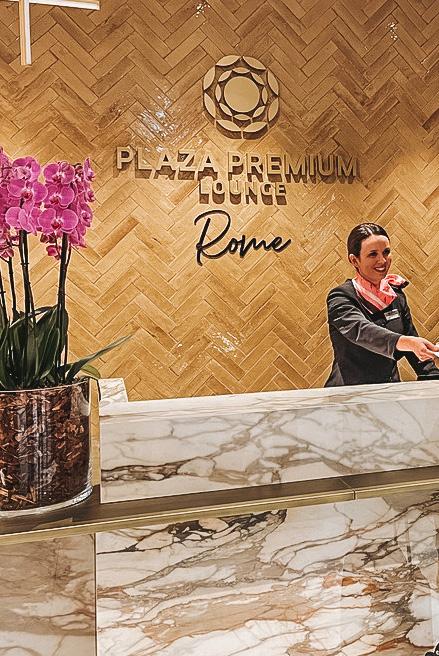
The enthusiasm and desire to grow his business still burns brightly in Plaza Premium Group (PPG) founder and CEO, Song Hoi-see, who has seen his company grow from humble beginnings to become one of the biggest names in airport hospitality over the last twenty-five years.
This determination to never sit still and rest on his laurels has led to further expansion of PPG's global offerings this year and the development of digital technology that could potentially open up new opportunities for travellers and revenue streams for airports and their service providers.
Building on the forward momentum PPG gained during the pandemic when instead of battoning down the hatches and riding out the storm it invested $120 million on almost doubling its presence to over 300 locations across five continents, it has opened new airport lounges at Adelaide, Amman, Kuala Lumpur, Nagoya and Rome already this year with more to follow.
While in Hong Kong, Song's home city, PPG has opened a new cocktail bar in the airport's iconic Sky Bridge that has already proved a massive hit with travellers.
The new concept, called ‘Intervals’, provides customers with the chance to enjoy a drink and dining experience in a setting that arguably offers travellers the best view of the airfield at HKG due to its location 28 metres above the ground in the world’s longest airside bridge.

Talking about the thinking behind the launch of ‘Intervals’, PPG's director of global brands and transformation, Mei Mei Song, said: “We wanted to make it a destination in its own right that would make people purposely change their habits and even want to transit through Hong Kong just to experience it.
"It's a beautiful bar with a beautiful view whose concept is inspired by the time of the day becoming fluid while travelling. Airports have pubs and bars, but not really a cocktail bar and certainly nothing like this, which really is unique."
Its opening means that in addition to airport lounges – which today include the more exclusive Plaza Premium First lounges for customers that want a more elite service – PPG’s hospitality services now cover hotels (Aerotels), mini-hotels/shower rooms (Refreshhh by Aerotel), VIP meet and greet/airport concierge and passenger services (Allways), airport spas and salons (Wellness Salon) and a host of standalone F&B facilities at dozens of international airports across the globe.
Beijing Capital (PEK), Dallas/Fort Worth (DFW), Frankfurt (FRA), London Heathrow (LHR), New York (JFK), Orlando (MCO), Rio de Janeiro (GIG), San Francisco (SFO) and Singapore Changi (SIN) are among the 250 international airports that boast a PPG lounge today as the hospitality business employs some 3,500 staff and serves around 20 million passengers annually.
It is a global success story, yet it all might not have happened if it hadn’t been for the persistence of Song Hoi-see as he admits that many people thought he was crazy when he first pitched the idea of opening a series of independent hospitality lounges at the world’s airports in the late 1990s.
Indeed, he had to do a lot of convincing to persuade Hong Kong (HKG) and Kuala Lumpur (KUL) to allow PPG to open their first Plaza Premium Lounges in 1998, and despite their incredible success since, he reveals that even today some airports tell him that they don't believe that they will work!
Song comments: “It wasn’t easy in the early days and was quite challenging because the concept of independent lounges was a totally
new concept and it was felt that lounges were only for CIPs [commercially important person] and that we would be competing against the airlines.
"We needed to change this mindset as there was clearly a gap in the market as, back then, lounges were only for premium travellers, which meant that the needs of 85% of passengers were not being met."
Getting the financial institutions onboard by providing them with access to its network of lounges proved to be a masterstroke for the Plaza Premium Group in terms of the development of its lounges, whose success has paved the way for the evolution of its business into the wider hospitality industry.
Song notes that you only have to look at companies such as American Express, Capital One, Chase, Visa and Mastercard who all have their own airport lounges today to see how popular this concept is with the financial sector.
Was the plan to always expand PPG's airport hospitality business beyond lounges? "Yes, absolutely, and we have done this by observation and listening and learning from travellers to identify gaps in the market and introducing other facilities and services that meet those needs," says Song.
"Seeing people sleeping on the floor in airport terminals and hearing that many of them couldn’t afford the price of a traditional hotel or didn't want to pay for a room for 24 hours when they only wanted to stay for three or four before their flight, for example, gave us the wisdom to launch our hotel business.
"Called Aerotel, they are very different to conventional hotels because they are specifically built and priced for travellers who want to stay for only a few hours."
He continues: "In essence, our hotels serve four types of client – the passenger who arrives at their end destination early in the morning and cannot check into their main hotel until later in the day; travellers whose flight leaves very early in the morning so they want to be at the airport in advance; travellers facing long delays at airports; and transfer passengers with four or five hour plus layovers."
Launched in 2016, PPG currently has 11 Aerotels across the globe that offer a mixture of airside and landside accommodation at airports that include Singapore Changi and London Heathrow.
Talking about expansion in general, Song noted: “Expansion has always been important, and remains crucial for the company if we are to maintain our status as a leader in airport hospitality. We do this both laterally, by developing our existing products, and horizontally through the launch of new service offerings.
“Expanding horizontally requires understanding the constantly evolving behaviour of travellers and identifying areas in their journey which could be improved to essentially enhance the airport eco-system and passenger experience.
"All our concepts, from our Allways meet & greet service to our various airport dining concepts have been developed to suit the evolving travel needs of passengers.”
"We are in this business for the long-term and will continue to grow and develop our business for the next generation of travellers, the only thing that concerns me about the future is that other short-term investors who think aviation is a goldmine will try and copy what we do but not do it well, which will damage the whole hospitality business."
PPG is most definitely a family affair for the Song famiy as in addition to dad and daughter, Mei Mei, son Jonathan works for the business as the company's global director for business development, following and building on his father's strategy and direction.
"Expanding our hospitality business from 160 to 300 locations over the last three years has been challenging and rewarding," said Jonathan Song.
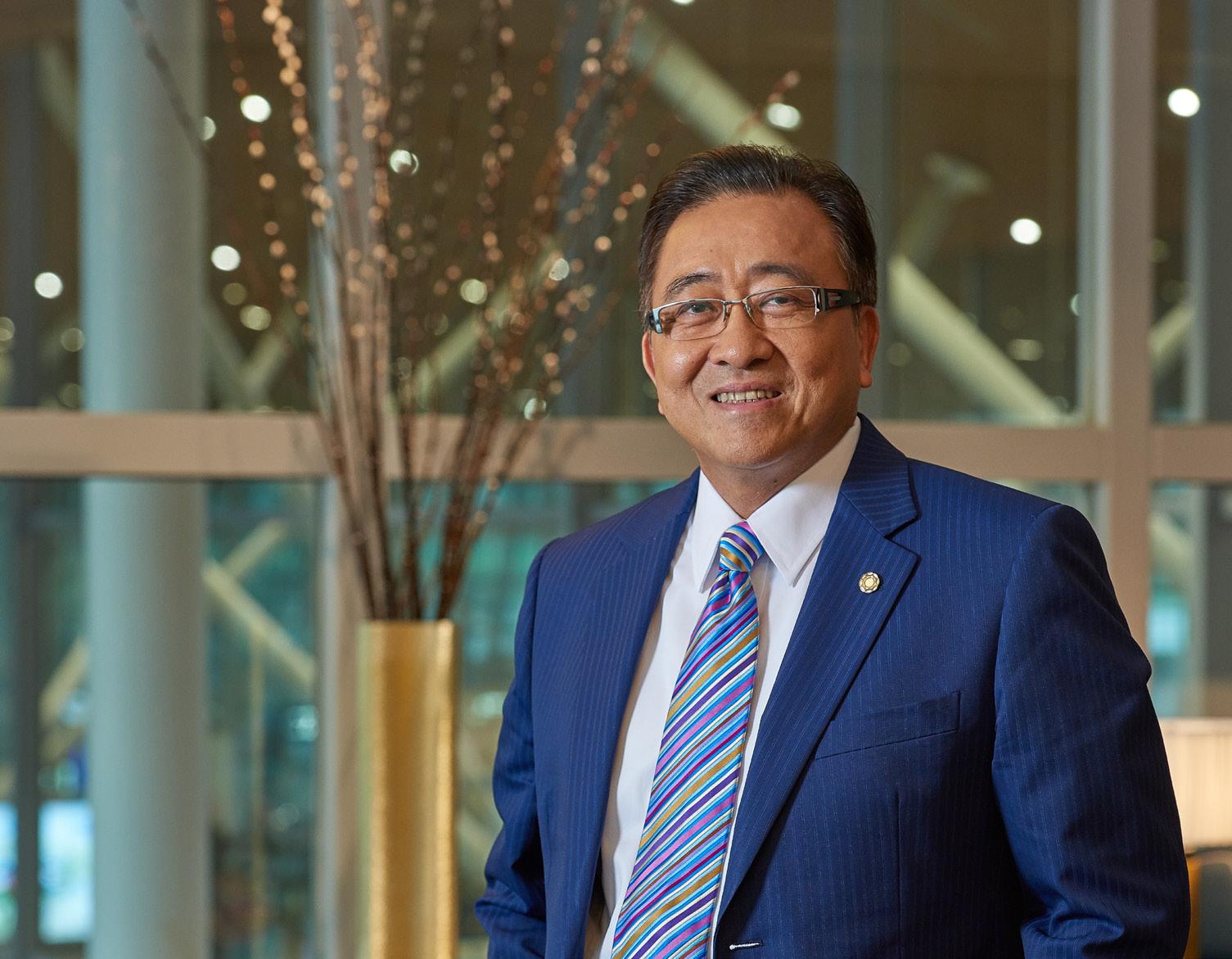

"From the lounge perspective, we have grown from just providing independent lounge services to operating lounge services on behalf of strategic partners such as the airlines, alliances and financial institutions.
"Our aim is to make travel better and to do that you have to offer a number of different services and products across different points of the passenger journey. There is much more to come from us as we are just at the beginning of our journey."
Song notes that technology plays a key role in the planning, journey and travel enjoyment of today's tech-savvy passengers, and PPG has responded to this by embracing technology across its hospitality portfolio and developing new ways of gathering and sharing data.
Its Smart Traveller mobileApp and oneTECO (Travel Experience Ecosystem) software, for instance, has also allowed PPG and the wider airport community to know what travellers want at different stages of their airport journey, communicate with them directly, and make personlised offerings.
In essence, oneTECO is an all-in-one platform that simplifies the booking process for business operators and consumers and includes an omnichannel booking engine that enables worldwide sales and distribution, a customer engagement centre with customer profiling and personalisation capabilities, and a data analysis system.
Song explains: "The intention behind the development of the App was to create a way of consoldiating all airport services into one platform to make life easier and more convenient for passengers. In the future, we will introduce a duty free element which would, say, identify that a passenger flying to London loves whisky and allow them to buy a bottle of whisky direct from the duty free operator in London who would have it waiting for them on arrival."
The platform has taken more than three years to develop and is currenty being deployed at Hong Kong and Bengaluru Kempegowda airports and, after some fine tuning, is expected to be expanded globally later this year.
Song notes that Smart Traveller, PPG’s own loyalty programme, allows its airport hospitality customers to accumulate reward points, which can be either be used to purchase or obtain future discounts on any PPG service or converted into points for use in a partner company's reward programme.
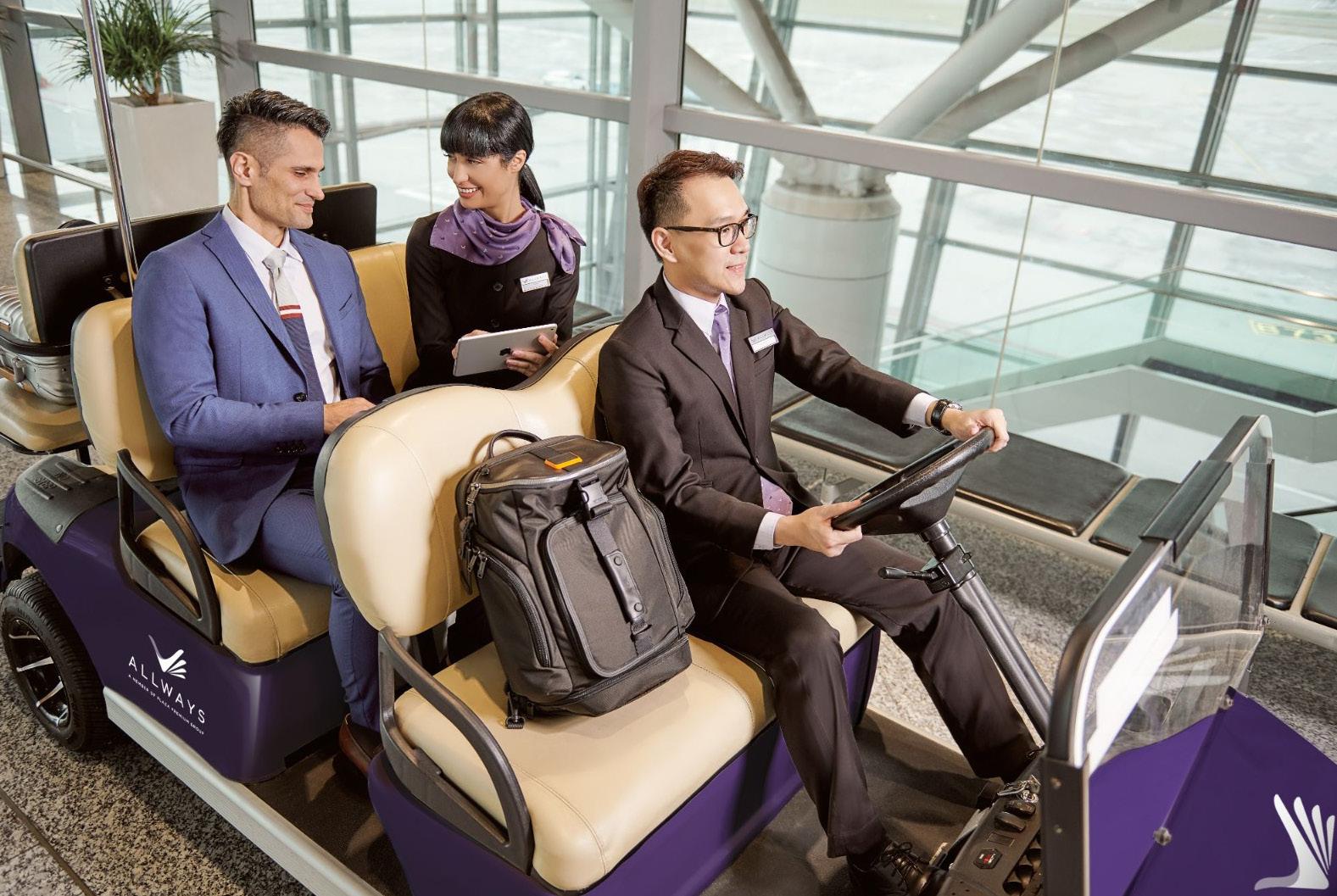
Is the hospitality industry today very different to one that existed when PPG was born 25 years ago and, if so, can you say what the big difference is from your perspective?
Song replies:"Everything has changed and airports are not the same places they were 25 years ago. Also, travellers' perceptions of airports and, and indeed air travel and their journey through the airport, is totally different today than when I started the business.
"Today's passengers are more affluent and discerning. They know what they want and they expect efficiency and good customer service as standard. People want to enjoy the airport experience. Lounging, for example, has now become a culture, lifestyle and a part of the air travel journey that any traveller would expect to have at major airport hubs.
"Another big change, of course, is the evolution of technology. It plays a key role in almost everything we do today and we expect that its use will only grow in the future, especially through the better use of data, which can take customer service and customer interaction to the next level."
Whilst never forgetting the crucial role people play in ensuring customer service excellence or five-star hospitality, Song believes that our reliance on technology will significantly increase in the years ahead as future generations will almost certainly prefer digital solutions to face-to-face interaction with others.
"The younger generation seem to prefer less human interaction when they travel, but they still need services, and if you can develop a system and a company that can communicate with them effectively, you will be a winner in business," enthuses Song.
"Labour used to be the way people progressed and made money. Then it was the brain and now it is technology." AW
Pipe and
Includes 2 x conference passes US $3,950
Double Booth (20×10 Sq ft)
Pipe and Drape Includes 4 x conference passes US $7,900
Quad Booth (20×20 Sq ft)
Floor Space Only Includes 6 x conference passes US $15,800
Nearly 400 delegates and 37 exhibitors made the smart choice by attending the recent SMART Airports & Regions Conference and Exhibition in Edmonton, writes Joe Bates.


With its innovative take on everything from embracing renewable energy, working in tandem with its neighbours and the commercial development of its Airport City Sustainability Campus, in many ways Edmonton International Airport (YEG) was the perfect host for the annual SMART Airports & Regions Conference and Exhibition in North America.
Welcoming delegates, Edmonton Mayor, Amarjeet Sohi, noted that YEG was set to become home to one the greenest new cargo facilities in North America and had recently launched a partnership to buy 100 hydrogen fuel cell electric cars as part of the airport's goal to become net-zero by 2040.
He said that YEG’s co-operation and collaboration with 13 surrounding municipalities, “out of the box thinking”, commitment to sustainable development and embracing technology and innovation would ensure that the Alberta gateway would come out of COVID better than it went into it.
Setting the scene for event – which in essence explores the catalytic effect and critical success factors driving the economic development of SMART airports and the regions they serve –conference chair and president and CEO of MXD Development Strategists, Chris LeTourneur, outlined some of the huge opportunities and challenges facing airports today.
He touched on how digitasation and the Internet of Things could help revolutionise the passenger experience as well as cargo security and logistics; and how the road to net zero provides airports with the opportunity to explore advanced air mobility and become energy hubs.
The opening session of the conference was a leadership panel discussion about ‘Resilience, Decarbonisation and Opportunity’ featuring YEG's president and CEO, Myron Keehn; Seattle-Tacoma’s managing director, Lance Lyttle; Ferrovial Airports’ senior vice president of business for the Northeast region of the US, Kevin Costello; and the chief managing executive officer of Japan Airport Terminal Co Ltd (JATCO), Kazuyo Hachisuka.
All outlined their respective gateways’ decarbonisation efforts as well as the social and economic aspects of their sustainability
strategies, while Costello talked about the future potential of carbon free electric vertical off and landing (eVTOL) aircraft and vertiports.
In terms of making an impression, SEA's Lyttle noted that the use of renewable natural gas (RNG) for its Central Utility Plant and to power the airport's bus fleet had probably had the greatest impact at the Washington State gateway as it was primarily responsible for the Port of Seattle meeting its target of reducing its Scope 1 GHG emissions by 50% by 2030 almost a decade early.
He felt that one of SEA's most innovative initiatives was the move to work with ASSAIA (proof of concept tested with Microsoft) to develop a system that monitors whether aircraft parked at its gates are connected to 400hz powered pre-conditioned air units (PCAs) and have turned off their APUs. The system involves cameras together with artificial intelligence, machine learning and sound technology to detect and prevent the running of APUs on aircraft.
"In addition to this, and it wasn't originally intended for this purpose, the system is being developed to allow us to know whether an aircraft is using a single engine when arriving at the gate, which is airline policy at Sea-Tac,” said Lyttle.
Talking about some of YEG’s sustainability initiatives, Keehn revealed that the Edmonton region’s investment in hydrogen stretched to tens of billions of dollars which would ultimately lead to the airport and the aviation industry reducing its impact on the environment. Going beyond the environment, he noted that YEG was determined to “include and create an airport for everyone” through social initiatives and responsible governance.
He told delegates: “We want to make everyone feel welcome at the airport. We want to create opportunities for employment and ways for people to participate in the ecosystem they find themselves in, and we constantly look at how we can drive and use the connector of the airport to help people propel their businesses forward. By nature, inclusivity, is one the most rewarding components of our business strategy.
“In addition to this, we focus on how we can utilise the airport so that people see it as their asset. Every airport is a community asset, and we want people to have ownership of that asset and be invested in it. We can
do this not only through the commercial benefits of the airports but by working on things such as preventing the illegal trade of wildlife, replacing plastics, food recycling programmes, helping the homeless and other things that airports can do to bring the local community together.”
JATCO’s Hachisuka explained that the electrification of ground support vehicles, the installation of solar panels, new LED lighting and air conditioning units, the use of geothermal heat pumps and radiant cooling materials for buildings were some of the ways Tokyo Haneda, Japan’s busiest airport, had introduced on its path to being net zero by 2050.
The second CEO/airport director panel discussion of the day focused on ‘Smart Cities and Airports – How We’ll Live Next’, in essence covering how future transportation infrastructure will change to meet the demands of global economic and social development.


In the spotlight for this one were Robert Hoxie, managing deputy commissioner of aviation at the Chicago Department of Aviation; Atif Elkadi, CEO of Ontario International Airport; Tom Ruth, former president and CEO of Edmonton International Airport; Jesus Saenz, director of airports at San Antonio Airport System; and Elisabeth Le Masson, special adviser to the general manager, Val d’Oise-Paris Region Development Agency.
Discussing airports becoming living labs for the innovation of new technology, Elkadi flagged up the recent launch of the ONT+ Visitor Pass Program in partnership with the TSA that allows non-travelling airport visitors to enjoy the post security amenities at his airport.
Saenz noted that SAT is using technology to help it gather information about changing passenger personas to help it meet the needs of the passenger of the future, and that the Texas gateway recently took part in a pilot programme for new technology designed to prevent runway incursions.
“There is a lot of transformation, change and innovation going on in our airports, so it is important that we listen to what our passengers are saying to us,” said Saenz.
“In terms of the use of technology, ultimately, it is about having real-time awareness of what is happening across the airport complex, capturing the data and being able to respond immediately to different situations, and not an hour after the passenger has left or two days later when they are beyond aggravated with you.”
Hoxie said that the CDA had stepped up its use of technology to help Chicago O’Hare operate “much more dynamically” than it used to pre-COVID, while Le Masson revealed that the world’s first commercial use of a passenger carrying eVTOL aircraft will take place in Paris next summer, the timing coinciding with the Olympic Games being held in the French capital.
Looking at future innovation, Ruth stated although he thought that it would be quite some time before larger aircraft flying 1,000 mile plus distances were no longer dependent on a solid propellent of air fuel, he believed that hydrogen powered aircraft could be a “game changer for smaller cities wanting to get more frequencies to larger cities”.
He also believes that new opportunities to remotely drop off bags before flights will lead to a new era of travel where passengers no longer bring suitcases to airports, which in turn could change the footprint and future use of airports. And he suggested that a change in how we book travel could lead to companies like Google forming their own airlines.
Le Masson said the eVTOL flights around Paris next summer would be operated by Volocopter and use five already certified vertiports spread across the city, including one at Paris’ CDG, another at Le Bourget and one on a barge on the River Seine, with fares set at around $120 per passenger.
Next on the agenda during a lively and eventful first day were sessions on ‘Airport Cities and Commercial Land Development’, in which John Terrell, president of Commercial Real Estate Strategic Partners, said that “strategic partnerships” were behind most of the world’s most successful commercial development projects.
He said: “I would encourage all the airports and companies that are working on, or have the opportunity to develop commercial development projects, to have strategic partners who make a difference by bringing innovation and different thoughts, and who often know more about a specific topic than anyone at the airport.
“It is not just about partnerships with commercial developers. It is about partnerships with the city that the airport serves and with various other organisations and stakeholders. It is about partnering and bringing people together.”
Continuing the theme of partnerships, Edmonton International Airport’s director of real estate and property management, Raelyn Kruitbosch, said that they were key for YEG, which actively co-operated with partners onsite at the airport as well as with a host of others ranging from economic development partners across the region to local, municipal, county and federal government to drive innovation and new opportunities at the airport.
Denver International Airport’s director of real estate, Elise Brenninkmeyer, saw the development of ground transportation options to DEN, in particular bringing heavy rail closer to the airport, as a potential future driver of real estate and commercial land development at the gateway.
“We are looking at rail and how we can get that synergy of rail and air building up our networks and creating new opportunities to activate our 14,000 acres of land that is available for development,” she said.
“We have large plots of land that could be doing heavy industrial activity if we had additional rail to air capacity, and there is strong interest in making this happen. It is also important to improve multimodal access to any employment centre as people really want multiple options to get to work every day and not just the car.”
Shannon James, president and CEO of the Aerotropolis Atlanta Alliance updated delegates on the progress of the co-ordinated commercial land developments around Hartsfield-Jackson Atlanta International Airport (ATL), and David Storer, director of business development at Pittsburgh International Airport (PIT), discussed some of the pioneering manufacturing initiatives connected to its Neighborhood 91 campus.
Telling the audience about Neighborhood 91, Storer said: “It is an additive manufacturing hub that was really born from an idea that the chancellor of the University of Pittsburgh had to co-locate like-minded companies together to advance additive manufacturing, specifically 3D printing with metals.
“The idea was worked through with the county executive, our CEO and the chancellor’s office and it was decided to do it at the airport. We received over $20 million in funding from the State to make it happen and within two-and-a-half years of that meeting we had built up and landed Wabtec Corporation, a global locomotive company, as our anchor tenant.
“Since then, we have attracted other companies doing 3D printing and, the end goal, is we are going to invest in an argon recycler. Argon is an integral cost for additive manufacture, depending on the metals. The development will allow the airport to get a return on its investment and will enable and attract additional companies because it is of tremendous value.”
He noted that it also “worked out well” as PIT has its own microgrid fuelled by natural gas produced on the airport site which ensured that the airport, and subsequently Neighborhood 91, had its own source of renewable, low-cost energy. It is hoped that the project will prove the catalyst for 195 acres of additive manufacturing, creating hundreds of new jobs and boosting the local economy.
Giving delegates some idea about the size and value of Aerotropolis Atlanta Alliance, which includes and surrounds
Hartsfield-Jackson Atlanta International Airport, James pointed to ongoing developments across 700 acres of land within a mile of the airport that were expected to have an economic impact of more than $1 billion in the next few year or two.
The Alliance’s board members include Delta Air Lines, Georgia Power and Porsche and, in James’ own words, its membership includes “every stakeholder that you can think of in Metro Atlanta” from the Woodward Academy and the Metro Atlanta Chamber to Invest Atlanta.
Up next were panels on ‘New Technology and Innovation’, debated by a panel of chief information officers; ‘Retooling and Rebuilding Airport Infrastructure – Preparing For 2030 and Beyond’; and ‘Airport Revenue Recovery’.

In the first of these, Miami Dade Aviation Department’s chief innovation officer, Maurice Jenkins, noted that the type of technologies Miami International Airport was looking at included virtual queuing and artificial intelligence to enhance operations and the customer experience.

DFW’s vice president for information technology services, Mike Youngs, stated that it was a great time to be at his airport as it had just signed a new use and lease agreement with the airlines that provided it with the framework to operate for the next 10 years, setting in motion the modernisation of Terminal C and the construction of its sixth terminal, Terminal F.
From a technology perspective, he said he was "truly excited by the opportunity the new terminal development projects presented to invent new capabilities that will benefit our passengers".
Youngs, who also revealed that DFW was about to break ground on an all-electric Central Utility Plant, said: "I really think that we are on the cusp of great things that are going to make people really enjoy the airport experience."
Houston Airports’ chief technology officer, Darryl Daniel, believed that technology together with collaboration with its airline partners would prove pivotal to helping the city's airports and airline operators meet future demand, which had come back strongly after the pandemic and shown that the ongoing infrastructure expansion projects at both George Bush Intercontinental and William P Hobby were definitely needed.
It was a similar story at Reno-Tahoe, said chief information officer, Art Rempp, who noted that the airport had just started a $1 billion infrastructure development programme for the next eight to ten years that basically involved rebuilding the airport.
"There is a technology component underneath everything that we are doing, so last year we commissioned an IT master plan that will set the stage for how we move forward over the next three to five years," enthused Rempp.
YEG’s vice president for technology, Tara Mulrooney, revealed that the airport is in the process of getting its own private Wi-Fi system for the first time. Talking about what excites her about new technology, she said: "I think it is that we are at a point where we have the opportunity to communicate directly with our passengers and give them the information they want from the moment they plan their trip to the day they arrive back home."
In response to what keeps them up at night, Houston’s Daniel stated “holding on to good staff”, while DFW’s Youngs said “guarding against complacency”, particularly from a cyber security perspective.
During the debate on the ‘Retooling and Rebuilding Airport Infrastructure’ session, the deputy director of aviation for capital development at Philadelphia International Airport, Api Appulingam, revealed that she helped revise the airport’s $2 billion capital development plan during the pandemic to avoid investing in projects that were no longer a priority.
“COVID allowed us to pause and think about all of the infrastructure projects that we were doing and how we should rebuild and retool our infrastructure going forward,” said Appulingam.
“I was able to look at all of our infrastructure projects and determine what really was making sense for PHL in the future. As a result, we have brought on $1 billion worth of infrastructure projects focused on the airport footprint that we have today.”
The revised plan includes the drafting of a new 20-year master plan, but is primarily focused on ensuring the resilience of current infrastructure, and as a result has won favour with PHL’s airlines which recently signed a new use and lease agreement that they hadn’t previously wanted to commit to due to the financial implications of the previous multi-year capital development progamme.
Fellow airport panellist, Louisville Regional Airport Authority’s vice president of operations and customer engagement, Megan Atkins Thoben, talked about the upgrade of Louisville Muhammad Ali International Airport’s terminal building, which she described as “the next most broken thing” at the airport due to its development largely being overlooked over the years because of the dominance of cargo operations at the Kentucky gateway.
While admitting that it wasn’t the coolest sounding thing in the world for passengers, she noted that the “massive electrical and mechanical upgrade” of the terminal led to the development of the US’s largest geothermal well field for heating and cooling the airport.
The other panelists included Steve Maybee, YEG’s vice president of operations and infrastructure development; Mark Rodrigues, vice president for aviation at Transoft Solutions; Curtis Grad, president and CEO of Modalis Infrastructure Partners; and Terry Bills, global director of transportation at Esri.
Speakers in the final ‘Airport Revenue Recovery’ session of the day included Alan Darling, vice president of business development at AeroParker; Forrest Swanson, associate vice president of airport systems and services at Transcore; Bob Kwik, worldwide head of airport solutions and business development at Amazon Web Services; and Daphne Shelton, director of concessions development at Edmonton International Airport.
An Evening Networking Party at Fort Edmonton Park followed, hosted by Edmonton International Airport, which gave everyone the chance to eat, drink and be merry while enjoying fairground rides and learning more about the city’s history.
The second day of the event featured a highly interesting opening plenary session on ‘ESG Partnerships Driving Change’, which showcased the way YEG has worked in partnership with a number of local companies to help grow their respective businesses on the airport campus.

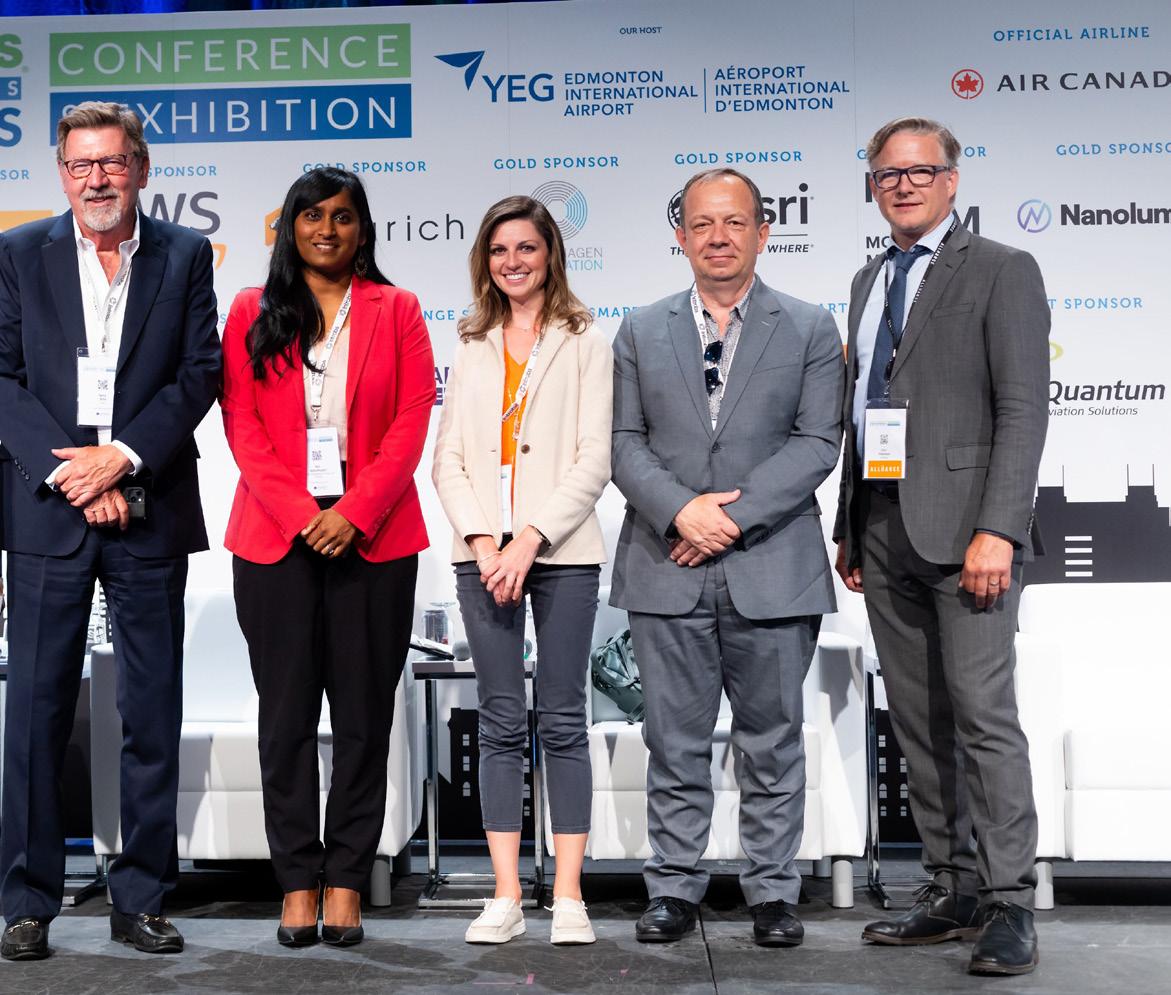
These included direct-to-consumer and business-to-business social-impact gifting service and retailer, Indigenous Box; sustainability firm Wild + Pine; drone technology solutions provider Aerium Analytics; and shipping solutions provider VEXSL, whose workforce is made up of military veterans, first responders and cargo logistics specialists.
The conference then split into two streams, Stream A providing sessions on ‘Building Smart Connected Airports’; and ‘Driving a Culture of Innovation’ and Stream B featuring debates about ‘Infrastructure 2.0 – Smart Airport Design and Development’ and ‘A Sustainable Reset for Airports’.
A final plenary session on the topic of ‘Are Airports Ready for Autonomous Vehicles?’ brought the conference to an end, touching on the potential benefits and challenges of driverless vehicles, which appear to be becoming ever more popular with airports due to labour shortages.
Introducing the topic, moderator, Marie-France Laurin, the director of channel sales at Stantec GenerationAV, warned airports: “A lot of people are going to come knocking on your door telling you about how autonomous vehicles can transform your operations. However, AV technology is new and evolving really quicky and you really need to make sure that the technology you are considering fits in with the needs of your airport.”
Sam Folley and Nicola Ihnatowicz explore the wider social and stakeholder push for better diversity and inclusion for employers in the airports sector.
The pandemic has resulted in a complete shift in working practices. The advent of flexible working is an obvious change, but there has been a fundamental shift in the dynamic between employers and employees.
In the current environment, airport operators must be prepared to listen to the needs of staff and adapt accordingly.
Fostering a diverse and inclusive culture is an important step for an airport operator to take in order to attract and retain talent, but how can flexible working be made to work in an operating environment that by definition is about location?
Inclusion is usually mentioned in the same breath as equality and diversity, but it often gets overlooked in favour of the other two, more measurable, objectives.
Inclusion goes to the heart of employees' sense of belonging in the workplace, and the feeling that they are being seen, heard and valued, as individuals.
It goes beyond supporting those with the characteristics protected under legislation, like the Equality Act in the UK, and is more about removing barriers and helping employees feel safe to be themselves at work.
Neurodiversity, the menopause, gender identity, fertility and caring responsibilities are all topics that now form part of the workplace conversation. When it comes to inclusion, doing the basics well is a great place to start.

Where airport operators can, offering a flexible and personalised approach to working hours and overall working practices plays a vital role. Agile working practices can offer real support to
those with caring commitments and can also give a great boost to disability inclusion.
Flexible working doesn't have to be solely about working from home, and for roles which do need to be in person, can other flexibility (such as hours or shift patterns) be accommodated, or additional benefits to make commuting or working unsociable hours more attractive.
It will be important to have transparent and accessible equality, diversity and inclusion polices in place, with regular training to ensure that they are implemented effectively and properly embedded.
It won't be enough just to draw up these policies and leave it at that. Regular and meaningful consultation should be built in, as well as monitoring and appraisal to make sure that they stay relevant and properly aligned with day to day working practices.
It is not enough for employers to simply tick the box and move on to the next project.
In a survey we carried out on being an inclusive employer last year, only 12% of those responding thought that their organisation was doing well in terms of having policies and procedures in place to facilitate an inclusive culture, while 80% thought that their organisation was not doing enough or could do better.
Inclusivity training is often carried out as part of equality, diversity and inclusion (EDI) initiatives, but not all organisations are doing it. Airport operators may want to consider specific inclusion training rather than providing it as part of an EDI package.
This should cover all levels of staff, and not just be part of induction. It should also be regularly refreshed.
In the UK, The Equality Act 2010 contains positive action provisions which enable employers to encourage people who share a protected characteristic to overcome or minimise the identified disadvantages or participate in activities in which they are under-represented.
In order to feel included and supported in the workplace, it's important for employees to see themselves reflected in the organisation. Low-cost initiatives such as mentoring, shadowing, targeted training courses and positive action in recruitment can all help to identify pinch-points and move organically towards a more inclusive environment.
The survey we carried out last year on being an inclusive employer showed that 40% of those responding used positive action to promote inclusion, while 34% didn't but were planning to, and 26% did not, or were unsure whether they did.
The UK government issued some guidance, 'Positive Action in the Workplace', back in April. It is intended to help employers understand how they can use the positive action provisions in the Equality Act 2010 appropriately to remove barriers to diversity in their workforce and enable equality of opportunity.
The guidance covers positive action and what it is, how to implement positive action lawfully, the difference between positive action and positive discrimination and how to monitor and review the use of positive action. It contains some practical examples.
There is also guidance, 'A step by step practical guide to using positive action when making appointments', published by the Government Equalities Office (GEO). The GEO guide points out that recruiting from the widest possible pool of people will give employers access to more talented candidates and a wider range of skills.
Having a more diverse workforce can also bring better insight into the needs of a broader range of airport users and can help to identify and open up new markets and opportunities.
Employees themselves are the ultimate benchmark for measuring inclusion. A huge part of enabling an inclusive culture is the ability to actively listen to what employees want from working at an airport.
Airport operators who keep talking to their employees about their lived experiences, what is important to them, what their challenges are and how they can best support them will be those who ultimately deliver on their inclusivity goals.

A truly diverse and inclusive culture cannot be built overnight, and getting the balance right will be a challenge for airport operators. Mistakes will inevitably be made, initiatives will be tried which do not work, and there will be many learning points along the way.
By listening airport operators will gain an understanding of what works, not only for their employees but also for their organisation as-a-whole.
Investing the time to get things right will reap the reward of staff loyalty and deliver a strong message that the employer is committed, and adheres to values, which will make it attractive to prospective employees.
It will also lead to increased productivity, better retention rates and higher levels of employee engagement.
The pandemic acted as a catalyst for greater inclusion; the array of personal circumstances and blurring of work and home life meant colleagues seeing each other through a different, more human, lens.
An inclusive culture undoubtedly creates a more diverse and creative workplace, with employees feeling empowered to play to their strengths and work in a more personalised way. But what many employers have been surprised by is the 'bottom-line' value that this shift in focus has brought.
Increased productivity, improved attendance, better retention rates, higher levels of engagement and an all-round happier workforce – who can say no to that?
Over the next decade, hundreds of new airports are planned for the global south, while airports in the global north continue to expand capacity, which poses the question, how are we going to do this and reduce carbon emissions as an industry?
The answer lies in developing a sustainability strategy which includes better building design, a focus on electric vehicles and the digitalisation of onsite equipment, to build and operate greener airports.
While aircraft emissions make up a majority of aviation-related carbon emissions, 2% of the industry’s total emissions relate to landside activities. And these could grow significantly over the next few years.
According to CAPA (Centre for Aviation), there are 425 major infrastructure construction projects underway at existing airports (brownfield) and 225 new (greenfield) airport projects.
Most of the greenfield airports are in the Asia-Pacific (132) and Africa (32) regions. Countries with large geographies and populations, like India and China, are investing massively in improving their airport networks, while infrastructure growth in countries like Indonesia, Vietnam and the Philippines is being driven by increased urbanisation, improved economic prosperity and rising living standards which are enabling more people to travel.
Much of the brownfield infrastructure improvement work in progress is happening in the global North – mainly North America and Europe – where ageing airports are being upgraded or expanded to enhance capacity and improve operational efficiency.
These airports were built 30-50 years ago, and while modernisation schemes have undoubtedly been implemented during that time, the challenges of increased passenger numbers and the growing
requirement to manage operations more sustainably calls for more forward thinking, future-proof infrastructure.
This boom in airport development is a golden-ticket opportunity to make ground operations more sustainable, benefiting the aviation industry as a whole.
A good place to start reducing airport infrastructure emissions is to focus on designing buildings and facilities which require less energy to operate. There is a saying that the cleanest kilowatt is the one never used. So, if you design a building to utilise more natural light or air flow, you don’t need to expend as much energy on mechanical interventions such as air conditioning or heating.
There will still be demand for power, of course, but better building design can minimise the amount of electricity used.
Renewable energy solutions should also be considered as standard in new airport buildings. Solar panels, for example, are an obvious solution when you consider the footprint of airport buildings and the available roof space for PV panels which can generate clean electricity all year round.
If it isn’t feasible to have renewable power generation onsite, a direct connection to a renewable energy source is a viable alternative. Melbourne Airport, for example, is powering its passenger terminals with a solar farm, while three new solar plants are being built to provide clean energy for Paris' main airports.
Airport buildings must also look to get more output from less energy through diligent specification of electrical distribution, heating and cooling plant. Intelligent building controls can help to deliver optimal efficiency as can energy management tools.
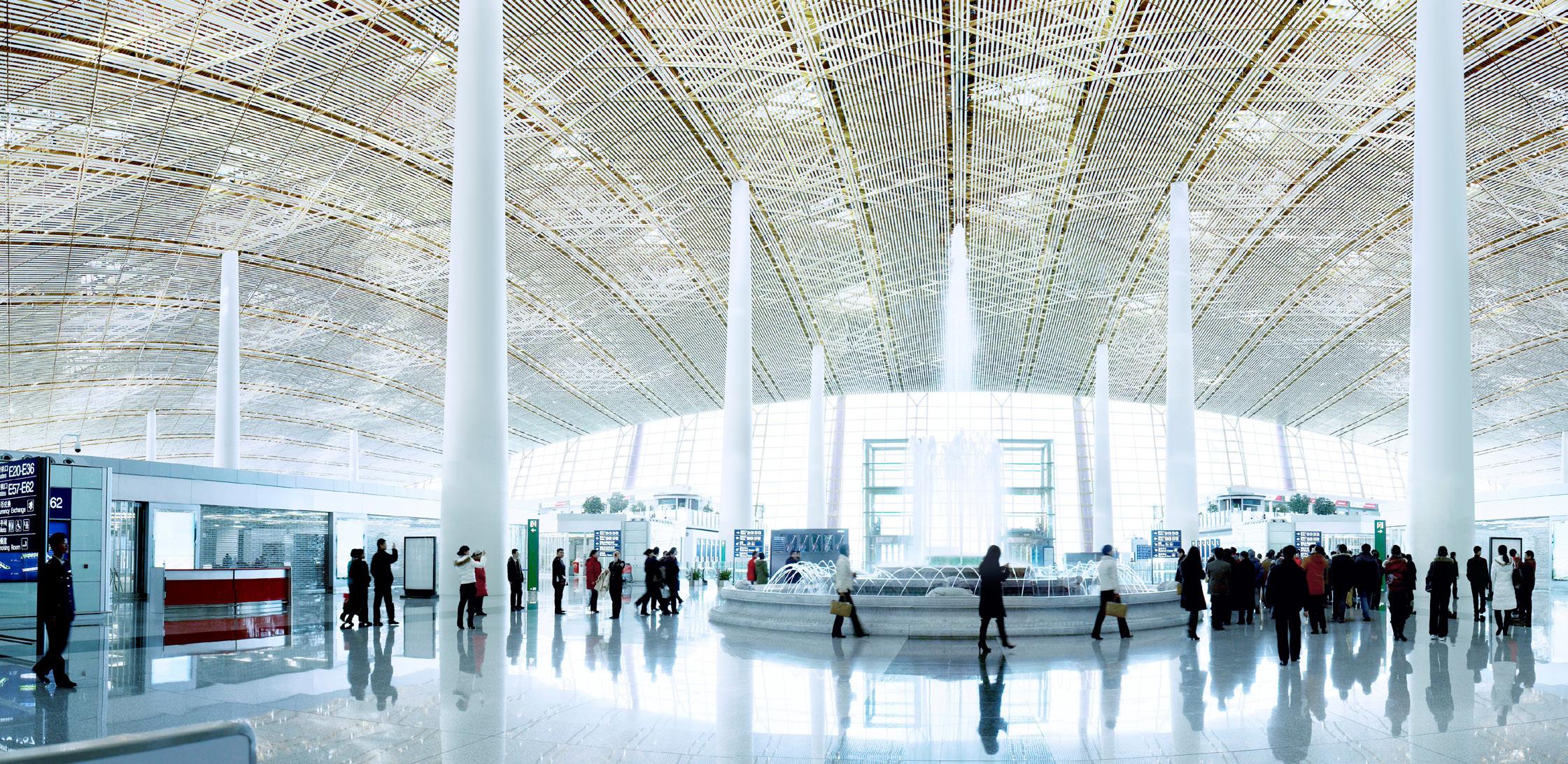
To deliver on the vision of a low-carbon airport, all vehicles operating in and around an airport complex (e.g. shuttle buses and luggage trucks) should be switched from gas, petrol or diesel fuel to more sustainable alternatives.
Best practice examples of sustainable transport options include the new automatic people mover (APM) project at Los Angeles International Airport, due to be operational later this year. The 2.25 mile electric train system will carry up to 87 million passengers a year and reduce vehicle miles by 117,000.
Or how about Birmingham Airport in the UK, which is switching its fleet of diesel shuttle buses with electric buses to significantly reduce energy consumption?
Singapore Changi and Eindhoven airports are currently trialling autonomous vehicles for the driverless transportation of luggage on the apron.
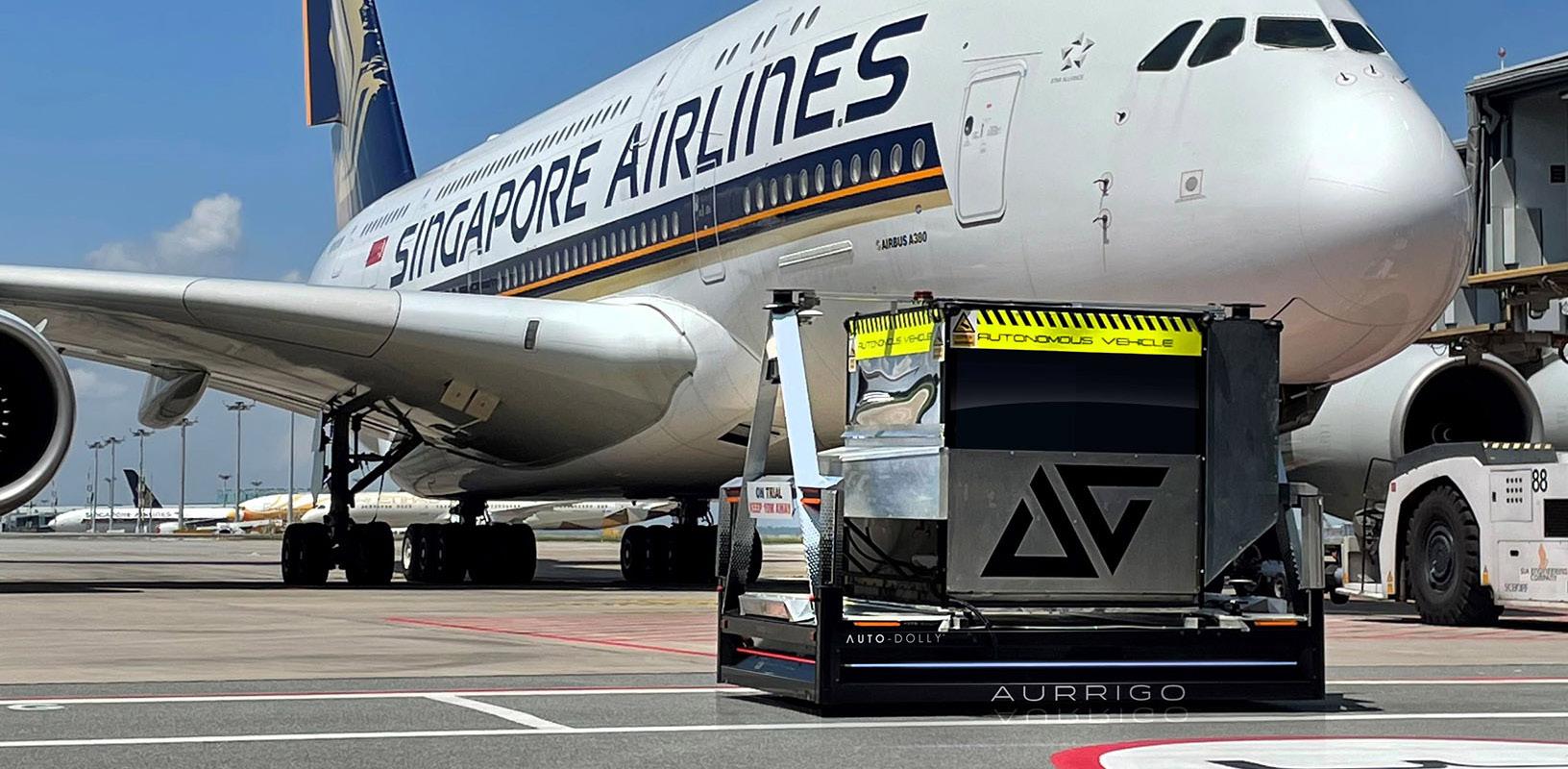
To facilitate all these different schemes, charging infrastructure has to be considered from the outset, and this should ideally be run on renewable forms of energy to further increase sustainability.
The emphasis on sustainable transport doesn’t stop at electrified ground transportation and passenger transfer vehicles, as passengers will be increasingly arriving at the airport in their own EVs in the future.
At the end of 2021, there were 16.5 million electric cars on the road. By 2030, they are projected to make up 60% of the world’s total car stock, totalling around 350 million vehicles.
Airports must be ready to fulfil the needs of these drivers, with a charging infrastructure that can cope with the variable load management, while delivering consumer needs and maximum charger availability.
Airports are an increasingly digital environment, particularly since COVID as digital transactions help to minimise person-to-person contact. In 2020, VINCI Airports launched a 100% contactless biometric journey through airport control checks using facial recognition technology.
While this advanced tech isn’t in every airport yet, other digital functions such as self-service bag drops, check in and passport checks are now standard. There is a lot more scope for digitalisation in airports, and these can really move the needle on sustainability for green and brownfield airport projects.
When it comes to the digital transition, building and energy management systems take operations to the next level – Airport 4.0, if you will. Everything is fully connected, proactive and able to adapt in real-time to operational and customer requirements.
A digitalised, smart airport delivers an interconnected infrastructure where operators have complete visibility of airside and landside operations from one central command centre.
Everything from the central utilities, terminal buildings and airport mobility functions to the runway lighting and air traffic control can all be monitored and actioned from one hub, enabling proactive decision-making to improve efficiency, safety, security and the customer experience.
At Chengdu Tianfu International Airport in China, for example, operators installed intelligent building control ahead of its June 2021 opening. With it, the airport now has access to data insights to support its decision-making, which could generate potential energy savings of up to 30% while also keeping the airport operations running efficiently.
In the future, digitalisation will enable more advanced airport designs. The airports of the future need to balance renewable energy generated onsite and power coming in from the grid with battery storage (storing excess renewable generation) plus EV charging infrastructure. For this to run seamlessly, automation will be critical.
As digitalisation can touch so many aspects of airport operation, it can collect a lot of data, therefore cyber security is an important topic to highlight. Manufacturers and end users are working together to understand, evaluate and explore the best way to collect, protect and use data to enhance productivity and improve operational efficiency.
We work with Microsoft Azure to provide customers with a robust data management infrastructure to address data security concerns.
Demand for air travel is only going one way – and that’s up! With that in mind, we must all explore the many ways that the aviation industry can operate more sustainably, and this means greater consideration for the impact that 650+ green and brownfield projects will have on carbon emissions and resources now and into the future.
It is important we use green technology to make the airport industry more sustainable, harnessing digitalisation and renewable energy to increase operational efficiency.
Announcements, news stories and opinions from ACI World Business Partners across the globe.
Jacobs and Hellmuth, Obata + Kassabaum (HOK) will both play key roles in the modernisation of Seattle-Tacoma International Airport's S Concourse.
Jacobs has beem selected by the Port of Seattle to lead and manage the 10-year renovation of the S Concourse. Modernising the 50-year-old concourse includes improving operating systems, environmental efficiencies, and earthquake resiliency, prioritising seismic updates.
Jacobs will provide full project management services, including project controls, estimating and scheduling support, development of enabling facilities supporting phase construction (airside, terminal, utilities), and a complete gate utilisation strategy.
In addition, the company will provide advisory services for passenger flow analysis, airport and airline tenant engagement, and evaluation of sustainable building opportunities such as rainwater harvesting, eliminating the use of natural gas and the installation of sustainable alternative power sources, including solar energy.
“We are working together to create a multi-phased approach with long-term benefits for the operation and readiness of the staff, systems, equipment and processes during the development of the S Concourse,” said Imad Feghali, Jacobs' senior vice president and general manager for Americas West.
“We are committed to bringing custom solutions to the airport and improving transportation connectivity – all through the lens of sustainable development.”
As the S Concourse design and construction work develops, the Port of Seattle and Jacobs are committed to advancing equity, inclusion, and diversity by partnering with women-and minority-owned business enterprises (WMBE) and other disadvantaged firms and setting an aspirational goal of 20% participation for the overall project supply chain and greater than 25% for Jacobs’ contracted services.
Meanwhile, working in collaboration with the Port of Seattle and AECOM, HOK has been appointed Lead Designer on the project.
The project involves a substantial upgrade to existing structures and building systems, and repurposing space to comply with the latest building codes.
According to HOK, the comprehensive modernisation programme will "transform the S Concourse and pave the way for exciting enhancements."
It noted that the building will be redesigned to serve as an inviting international travel gateway, complete with expanded retail, duty free shops, food & beverage options and premium lounge spaces. Improvements to passenger circulation also are planned.
With an estimated completion of construction in 2031, the project is currently in its early stages.
SEA has experienced significant growth over the past two decades and serves as a crucial transpacific and international hub for several airlines. The steady increase in passenger traffic has created the need for improved and updated facilities.
Todd Buchanan, HOK’s principal-in-charge on the project, enthused: “HOK has a longstanding relationship with both the Port of Seattle and SEA. We’re honoured that they’ve entrusted us with this strategically significant project, and we look forward to exceeding the expectations of the airport and its travellers with a transformed S Concourse.”
While HOK's regional leader for aviation and transportation, Keith Hui, said: “HOK’s design strategy for the project revolves around three guiding principles: the positive effects of daylight, the relaxing quality of openness and the creation of a unique sense of place.
“By incorporating these principles, the design will provide an environment that reduces stress and is intuitive to navigate, thus enhancing the overall traveler experience.”
Earlier this year, HOK announced its leadership role in modernising Seattle-Tacoma International Airport’s North Main Terminal in partnership with general contractor Hensel Phelps, Alaska Airlines and the Port of Seattle.
Known as the SEA Gateway Project, this initiative will transform a significant part of the terminal to accommodate increasing passenger demand while elevating the travel experience at this Pacific Northwest hub.
HOK’s past projects at the airport include the Concourse D Annex project, which opened in 2018.
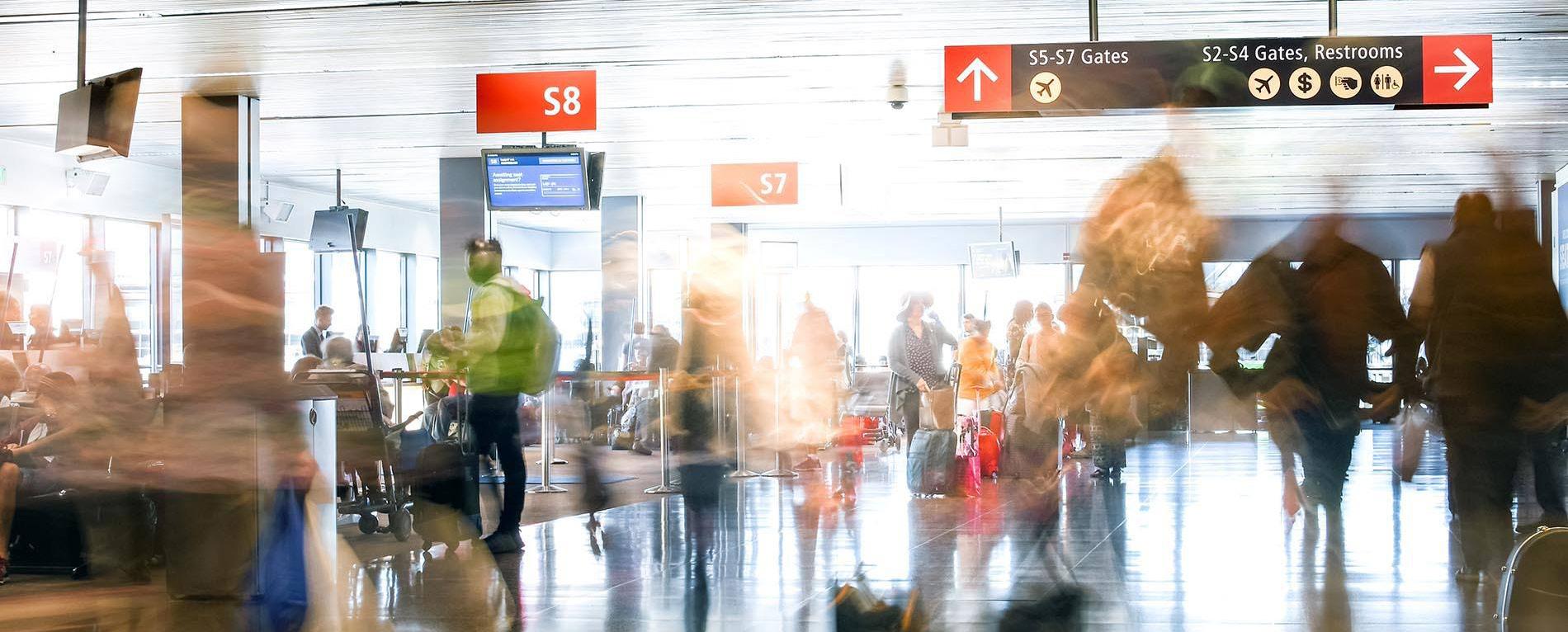
It has been a busy year for the SSP Group at Helsinki Airport, which has opened a number of new F&B outlets across the gateway, including its largest foodcourt in Finland.
Centrally located, the foodcourt is designed to complement the architectural theme of the terminal and offers a diverse selection of concepts to appeal to the international traveller.
Of the six units, three are bespoke brands, created by SSP Finland. Amongst them is Tori Kitchen & Café while ‘Asian Corner’ brings the experience of the best food stalls in Asia to the terminal. The menu is full of flavours from across the continent, and is changed regularly to reflect current tastes and trends.

The foodcourt also features three established international concepts – Bastard Burgers, Middle
SITA has been awarded a landmark deal by the Airports Authority of India to provide technology to 43 of India’s biggest airports.
The deal will see improvements at over 2,700 passenger touchpoints, paving the way for the adoption of “new-age solutions” to meet the modern passenger’s expectations.
Initially deployed across 43 airports, the technologies are scalable to an additional 40 airports over the next seven years. Over 500 million passengers are expected to be processed during this period.
The roll-out of new cloud technology will enable Indian airports to shift to common use passenger experiences where multiple airlines can leverage the same infrastructure, such as check-in counters, self-service kiosks, and boarding gates.

Sumesh Patel, SITA’s president for Asia Pacific, said: “The number of airports in India is expected to increase from 148 today to 220 by 2025. The new airports will bring India’s almost 50 cities with
Eastern-style Finnish favourite, Fafa’s, and Finnish chain, Robert’s Coffee.
Guests at the foodcourt are able to make their selections via a self-ordering kiosk, which allows quick and easy ordering and payment. In Tori Café & Kitchen, customers can use self-checkout tills to pay quickly without having to queue. Meanwhile, a communal seating area allows passengers travelling in groups to each enjoy their own choices of food.
Elena Heiska, managing director of SSP Finland said: “These openings are a reflection of the hard work of our team, the efficiency of our operations at the airport, and our long history as a trusted partner at HEL.
"With particular appeal to the airport’s ever-growing percentage of leisure travellers, the new bars, restaurants and shops will offer something for everyone.”
Membership Region: Europe
Type of Business: IT & Communications
W: www.airportdirecttravel.com
Airport Direct Travel (ADT) is an airport-centric business that provides world class IT solutions and services to the airport Industry. As an enterprise organisation with offices in Europe, USA and Australia, ADT focuses on generating income for their airport clients by leveraging their experience and industry leading technology 'AirportREZ' to deliver greater parking and ancillary revenues.
Membership Region: North America
Type of Business: Planning & Construction
W: www.ghafari.com
Ghafari Associates provides consulting, architecture and engineering services to a worldwide aviation, industrial, government and commercial client base from its offices in Dearborn (Michigan), Chicago (Illinois) and Indianapolis (Indiana). The Ghafari Aviation Group provides services in support of the aviation industry to both airport authorities as well as airlines related to the design and engineering of airport facilities.
Membership Region: Europe
Type of Business: IT & Communications
W: www.frontier.nl
populations exceeding one million people even closer together, creating substantial economic value in the long-term.
“By connecting these cities better, air travel and transport will help unlock the full potential of India’s economic growth, too. Ensuring efficient and fluid operations and a seamless passenger experience at these airports will be critical to delivering on India’s air transport industry opportunity.”
Casper is an innovative IT company specialising in the development of real-time location-based monitoring and analysis tools. Casper delivers airport noise and flight tracking systems, A-CDM situational awareness solutions and interactive community involvement websites.
Terri Morrissey and Dr Richard Plenty consider the importance of creating a work culture where employees feel safe and confident that their opinions will be valued and respected.
How many of us have felt we had something important to say at work but failed to do so?
Speaking up can be hard to do. It is all very well asking people to say what they think and give their opinions in organisations where trust exists and where the culture encourages feedback, ideas generation and differences of viewpoints, but not every workplace has this type of culture.
Unfortunately, too many people still work in what psychologists call a toxic culture, where the ‘dark side of leadership’ prevails. Typically, leaders in a toxic culture pursue at all costs over-ambitious, unrealistic, and non-negotiable targets set from the top – and in the process end up treating their employees in a demeaning and irrational manner.
They don’t have the time to listen to concerns and become overbearing, dominating and unreasonable, exhibiting behaviours which are controlling, hubristic, manipulative, and lacking empathy.
At its worst, this dark side is typified by leadership which can be viewed as aggressive, narcissistic, psychopathic, and even Machiavellian. Is it surprising that people find it hard to speak out, give honest feedback or contribute ideas that might have the potential to anger or provoke such bosses?
People are likely to experience stress or feel micromanaged in such cultures. The organisation may experience high turnover rates or high levels of absenteeism due to stress related illnesses.
Organisations which place too high a value on status and position power can also inhibit people from speaking up. The late Dutch social psychologist Geert Hofstede called these, high ‘power distance’ cultures, where those without power tend to defer to those who have it.
This can have important implications for safety. A study by Enomoto & Geisler (2017) found that there was a significant correlation between high power distance cultures and plane crashes. In a review of performance in 68 different countries between 1970 and 2012, they found that where junior pilots had
difficulty contradicting senior pilots there was a significant increase in the chance of an accident.
The study concludes by saying that ‘it is only when the entire crew are working together as equals (that) the chances of success are greatest’.
If people are fearful of speaking out even in these kinds of life or death situations, imagine how this plays out in ‘day to day’ organisational life in an over-hierarchical culture?
People will not give their opinions nor share important information if this does not concur with the prevailing view and mindset. Vital data on accidents, quality lapses, and systems defects, for example, may not be communicated out of fear of the consequences to the messenger. Sub optimal organisation performance and employee disengagement are the results.
So how can we encourage people to speak out – and be heard – given the practical realities of organisations and their leaders?
Our experience has been that while this is one of the most challenging areas to effect change, successful interventions can have an enormous impact on motivation, morale and performance.
The aim should be to create a culture where employees feel valued, their opinions respected, and where they have the skills and courage to contribute their views.
Developing people at all levels in communication skills, teaching them how best to plan and frame their interventions, and building their confidence to speak out, is important. Strong HR Departments can also play their part in calling out dysfunctional behaviours and carrying out regular benchmarked employee surveys to monitor organisation culture and engagement.
But, ultimately, this is an area where top leadership needs to play the key role and have the courage to make it clear that speaking out is to be encouraged and dysfunctional leadership will not be tolerated.
Psychological safety is just as important as physical safety.
Hag Jae Lee is the new CEO of Incheon International Airport and has wasted no time in outlining his vision to create a series of smart logistics clusters around the South Korean gateway.
Manchester Airports Group (MAG) has announced the appointment of Ken O’Toole as its next Group CEO. He will succeed Charlie Cornish, who has led the business for the last 13 years, on October 1, 2023. O’Toole is currently deputy CEO of the airport group.
Jost Lammers is set to stay on as CEO of Munich Airport until the end of 2029 after agreeing a five-year extension to his contract at the German gateway, which was set to expire at the end of 2024.
At the request of the Supervisory Board, Ruud Sondag will remain interim CEO of the Royal Schiphol Group until March 1, 2024, at the latest. The Supervisory Board is making progress in the recruitment procedure for a definitive successor.
Greenville-Spartanburg Airport in South Carolina has welcomed Thomas Brooks as its new vice president and chief financial officer and Gloucestershire Airport in the UK has unveiled Jason Ivey as its new airport director.
Terri Morrissey and Dr Richard Plenty run ACI’s Human Resources training. They received a Presidential Citation from the American Psychological Association in June 2022 for their leadership in advancing global psychology. Contact them at info@thisis.eu


Reimagine the passenger experience with SITA Smart Path® - the air transport industry’s most comprehensive identity management solution for every step of the journey.

Empower your passengers to validate their identity using our award-winning SITA Smart Path TS6 Kiosks, securely enabled with facial biometrics recognition technology.
Transforming travel.
Learn more: